Abandoned G-Q
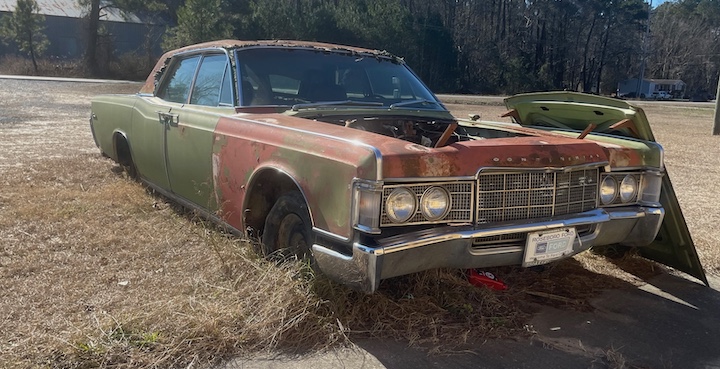
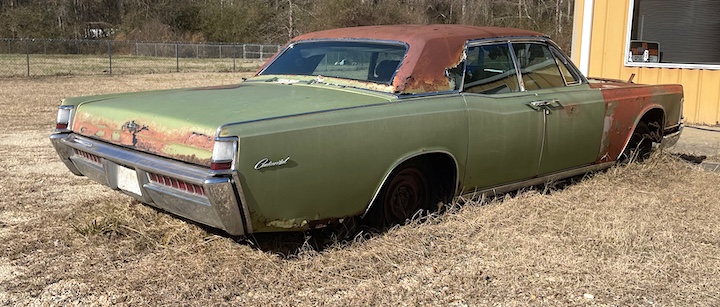
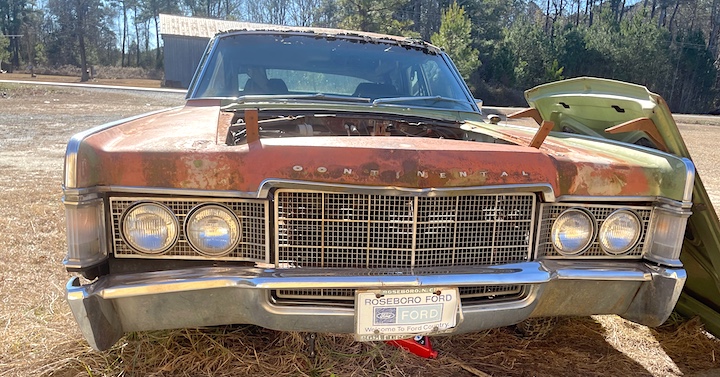
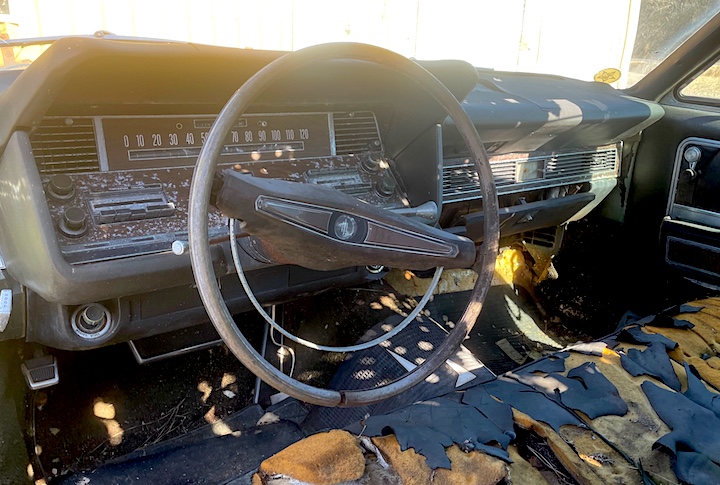
LINCOLN (1969) —This 1969 Lincoln Continental was spotted in eastern North Carolina missing its 462-cubic V-8. It was the final year of the fourth generation of the Continental. The big luxury car competed with Cadillac Coupe de Ville and the Chrysler Imperial. The '69 Lincoln came with a three-speed automatic transmission. It stretched out 225 inches with a 127-inch wheelbase.(Photos by Jim Meachen)
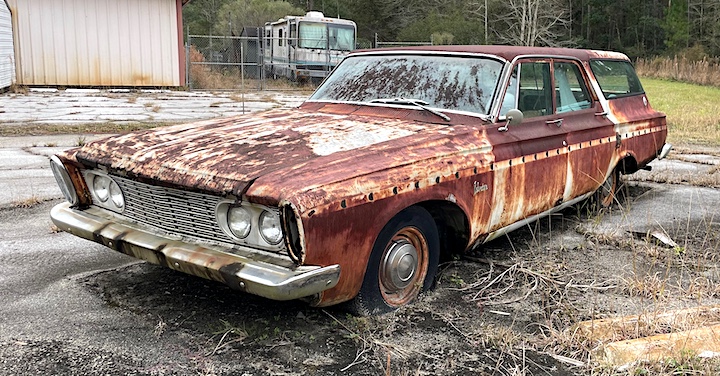
PLYMOUTH (1963) This used up 1963 Plymouth Savoy wagon was found locked behind a fence in northern Florida. The '63 Savoy 5-door was outfitted with a 145-horsepower, 6-cylinder engine making 215 pound-feet of torque mated to a 3-speed automatic. Published 0-to-60 time was 13.9 seconds with a 99 mph top speed. The full-sized wagon measured 210 inches in length with a curb weight of 3,538 pounds. Combined city/highway fuel economy was measured at about 15 mpg. (Photo by Jim Meachen)
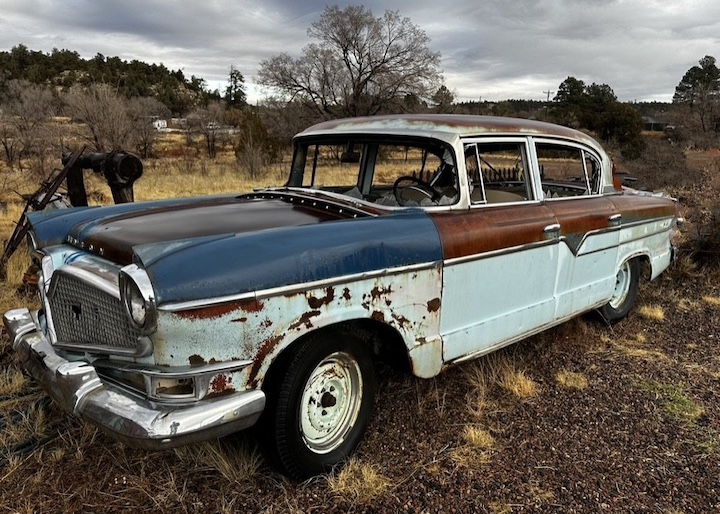
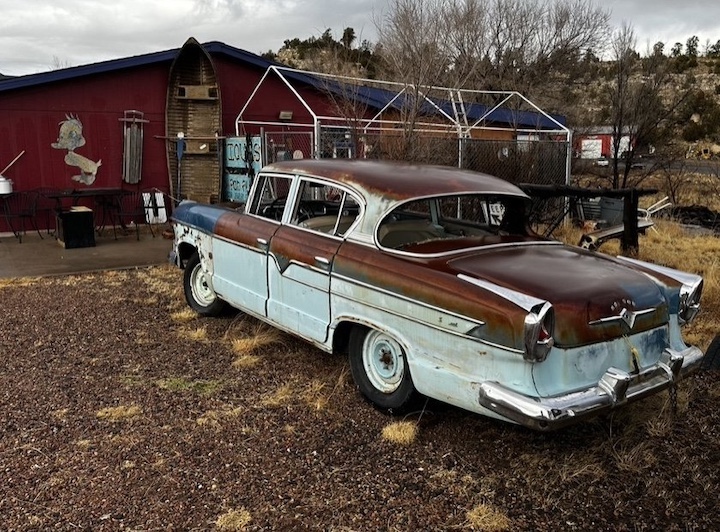
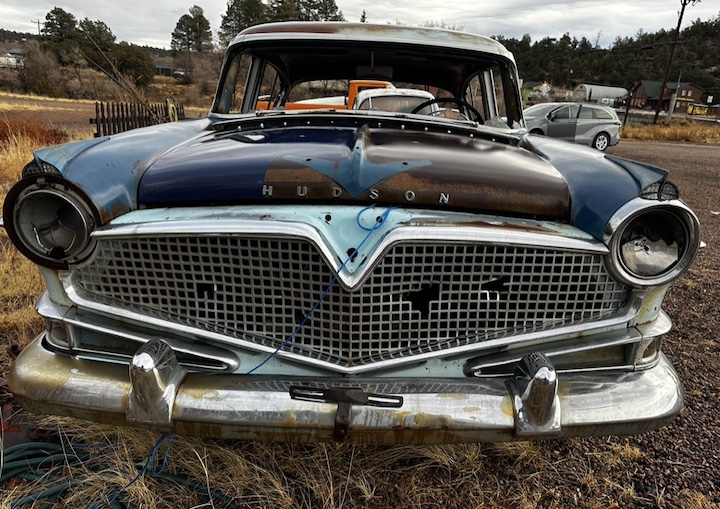
HUDSON (1956) — This 1956 Hudson was discovered in New Mexico in an abandoned condition. Hudson was near the end of its life in 1956, with the last Hudson rolling off the assembly line on June 25, 1957. Total Hudson sales dropped to 22,588 in 1956 and bottomed out in the shortened 1957 model year to 4,180 units. The 1956 model could be purchased with a V8 engine. (Photos by Jim Prueter)
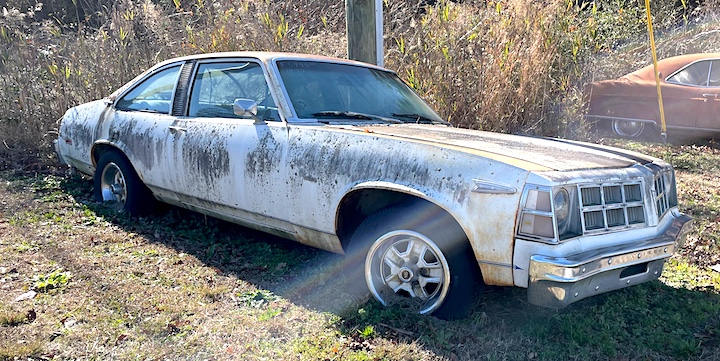
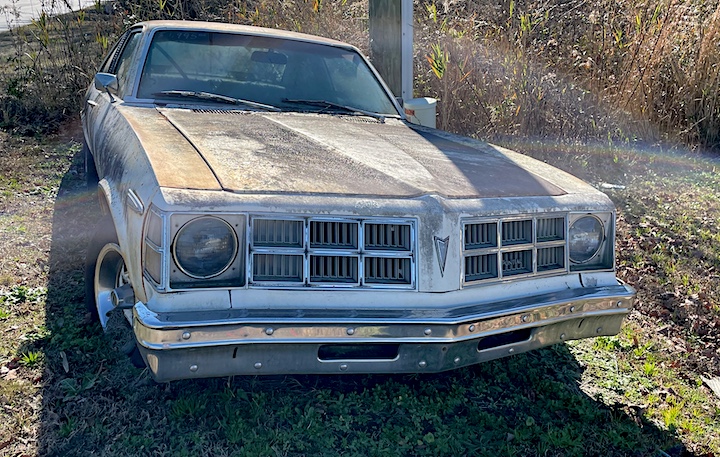
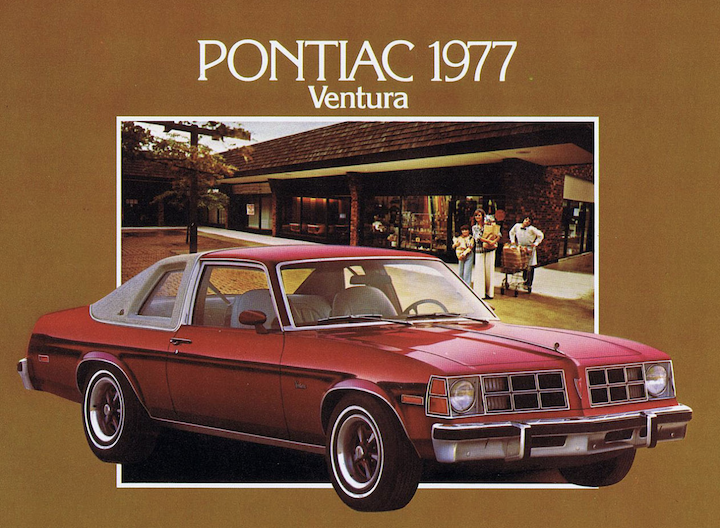
PONTIAC (1977) — This 1977 Pontiac Ventura was discovered in an abandoned condition in eastern N.C. The Ventura was built from 1960 through 1977, its name derived from Ventura, Calif., and was a version of the compact Chevrolet Nova from 1971 onward. For 1977, the Chevy 250 six-cylinder was replaced by Buick's 231 cu in V6 as the base powerplant, and the Chevrolet 305 cubic-inch V8 was introduced as an option. (Photos by Jim Meachen)
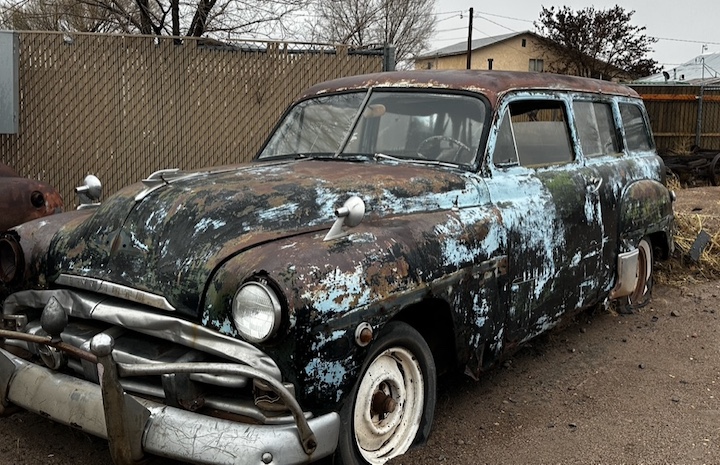
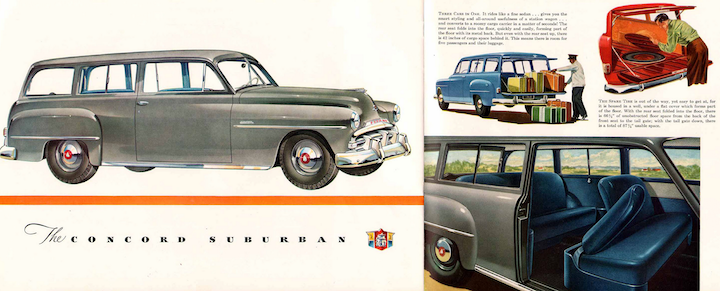
PLYMOUTH (circa 1950-1952) — In 1949, Plymouth changed the U.S. station wagon market by introducing the industry's second all-steel body station wagon, the Suburban. From 1950, it came in two-door and four-door configurations with two wheelbases, 111-inch and 118.5-inch. The model was powered by a 97-horsepower six-cylinder engine. This abandoned circa 1950-1952 wagon was discovered in Arizona. (Photo by Jim Prueter)
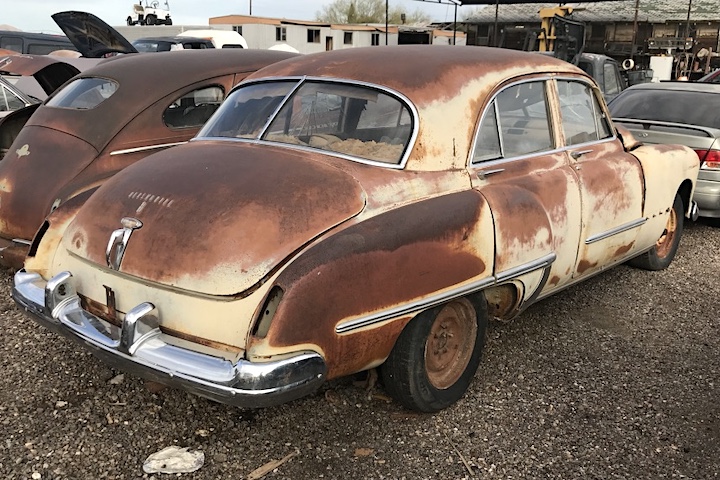
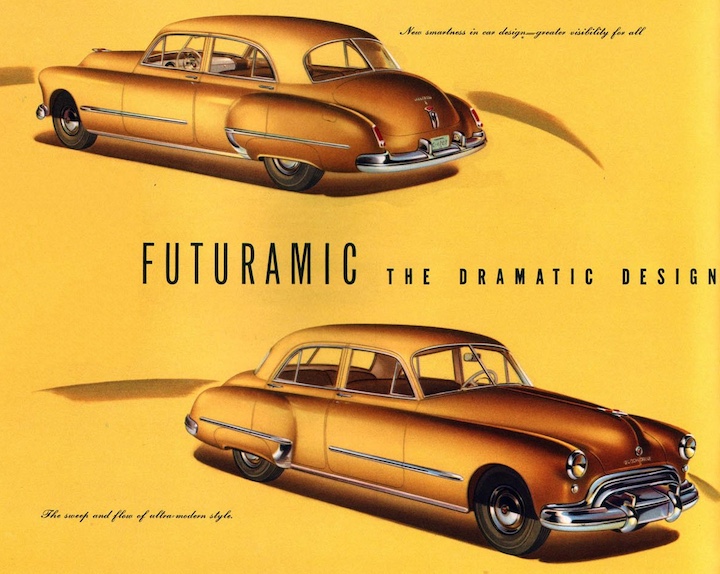
OLDSMOBILE (1948) — Oldsmobile introduced its first new design following World War II in 1948. And for 1948, Oldsmobile produced an elegant yet very modern top-of-the-line car, which was dubbed Futuramic. The Futuramic was available as 98 only, selling alongside the last-gen Oldsmobile Dynamic 66 (with a straight-six engine) and the 78 (a straight-eight powerpack). This example was found in an Arizona salvage yard. (Photo by Jim Prueter)
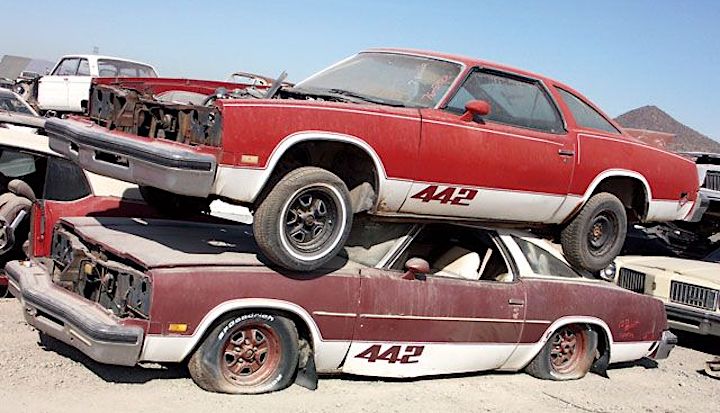
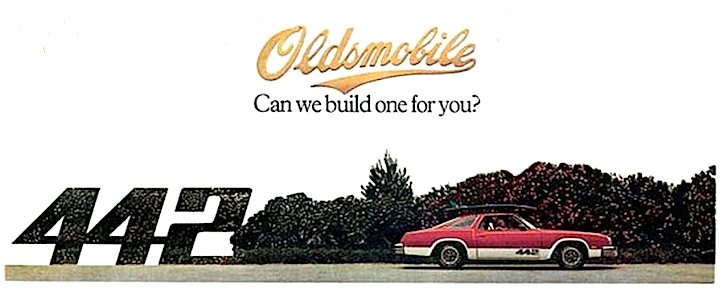
OLDSMOBILE (1977) — Two 1977 Oldsmobile Cutlass 442 models play piggyback in an Arizona salvage yard. The 1977 models featured the ugly 5 mph bumpers mandated by the government. The muscle car era just a memory from the '60s, the largest engine available for the 1977 Olds 442 was the 403-cubic-inch Rocket V-8 making 180 horsepower. (Photo by Jim Prueter)
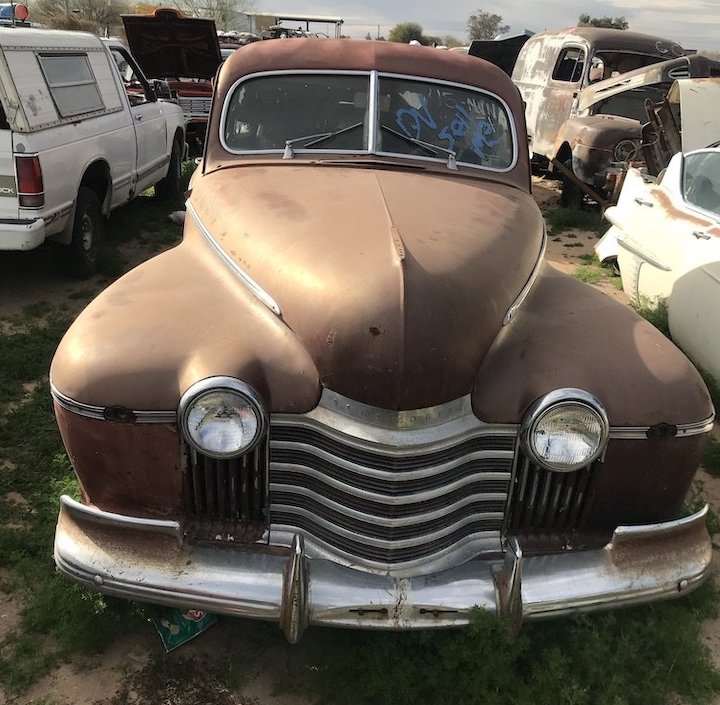
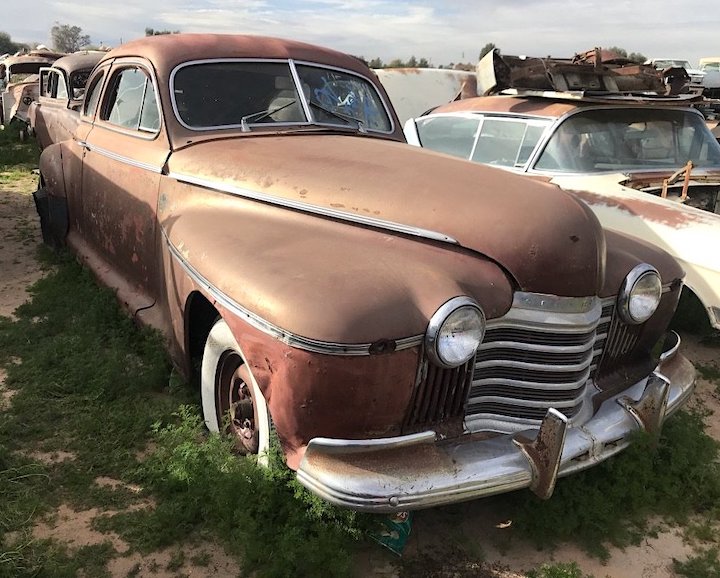
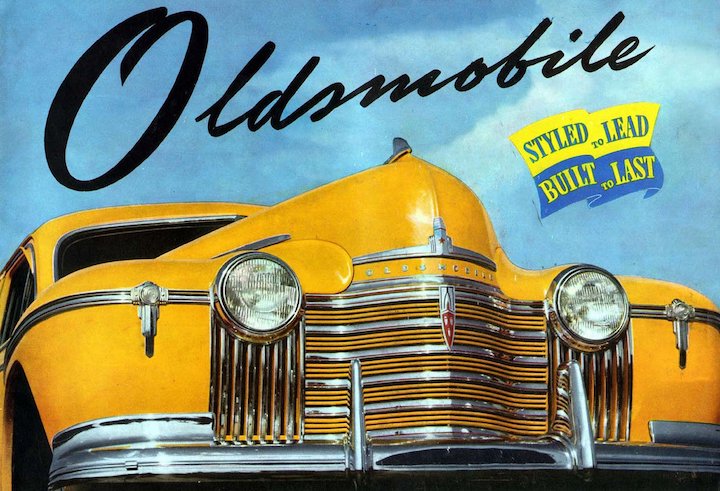
The 1941 Oldsmobile had a uniquely styled front end that lasted only one year. FYI — In 1940, Oldsmobile became the first nameplate to have a fully automatic transmission, called Hydramatic. This well preserved 1941 model lives in a salvage yard. (Photo by Jim Prueter)
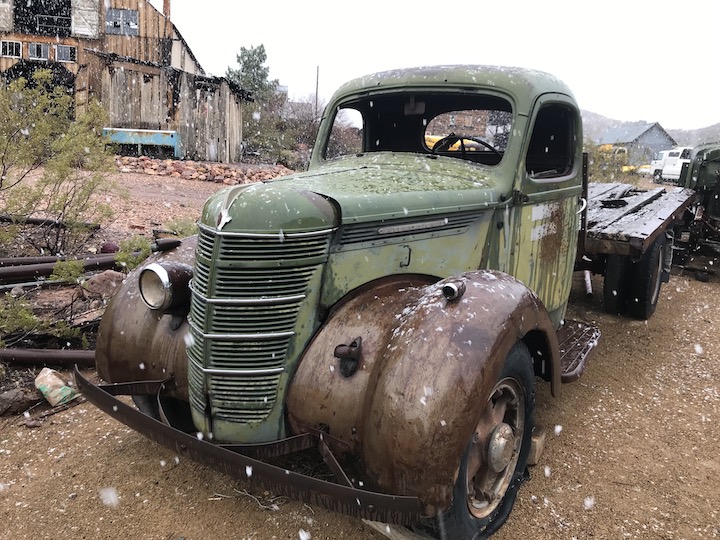
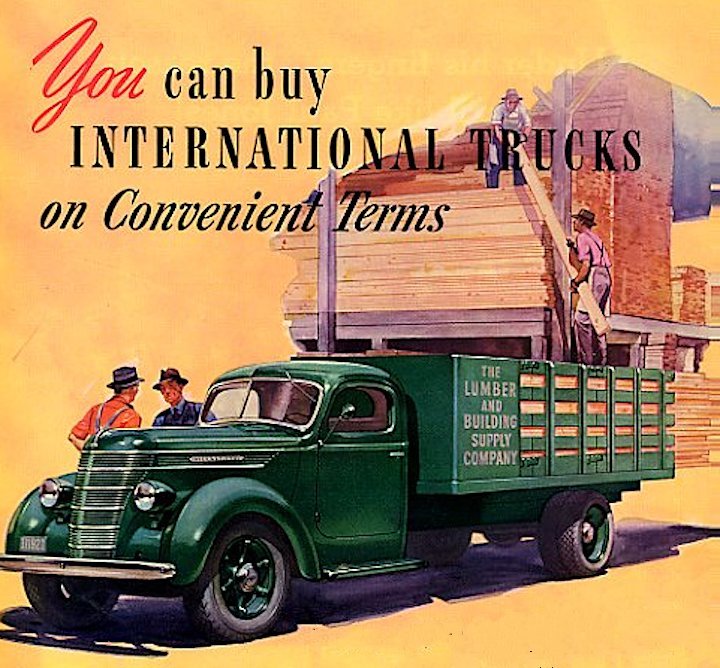
INTERNATIONAL (1937-1940) — The D-40 Series International truck was built from 1937-1940. It came with a six-cylinder engine that made 89 horsepower mated to a 5-speed manual transmission. This abandoned truck was found in Nevada. (Photo by Jim Prueter)
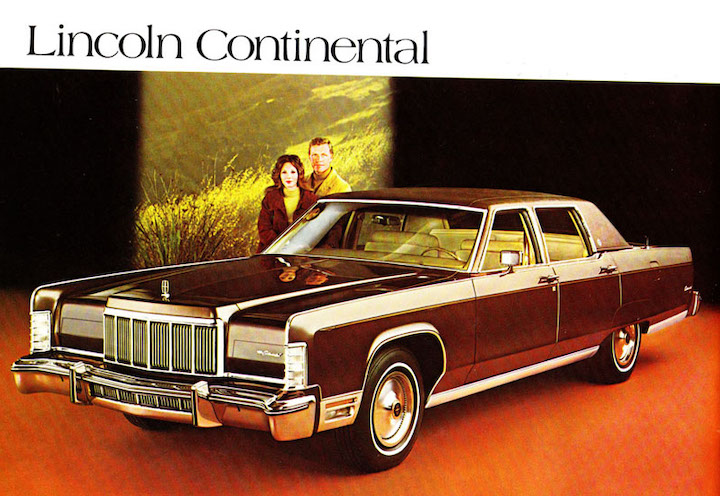
LINCOLN (circia 1975-76) — This fifth-generation 1975-76 Lincoln Continental, which stretched out 232 inches in length with a 127-inch wheelbase, was outfitted with a 206-horsepower V-8. Published 0-to-60 time was 12.6 seconds with a top speed of 114 mph. Gas mileage averaged 12 mpg. This example was found residing — perhaps permanently — behind a fenced-in lot in South Carolina. (Photo by Ralph Gable)
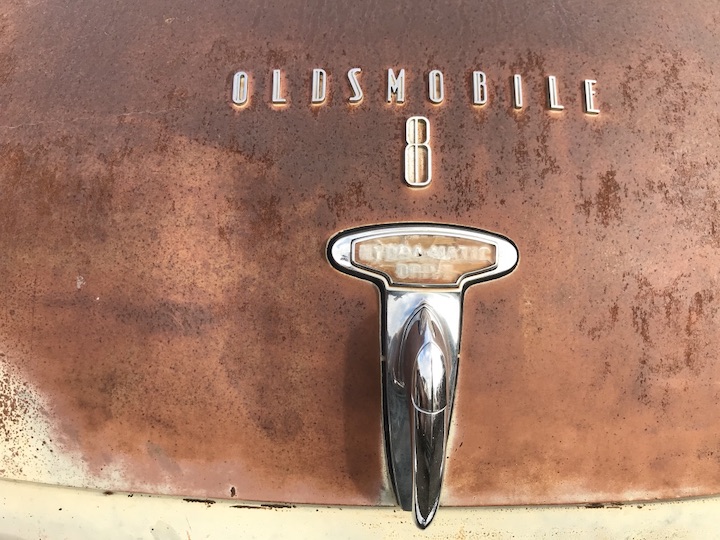
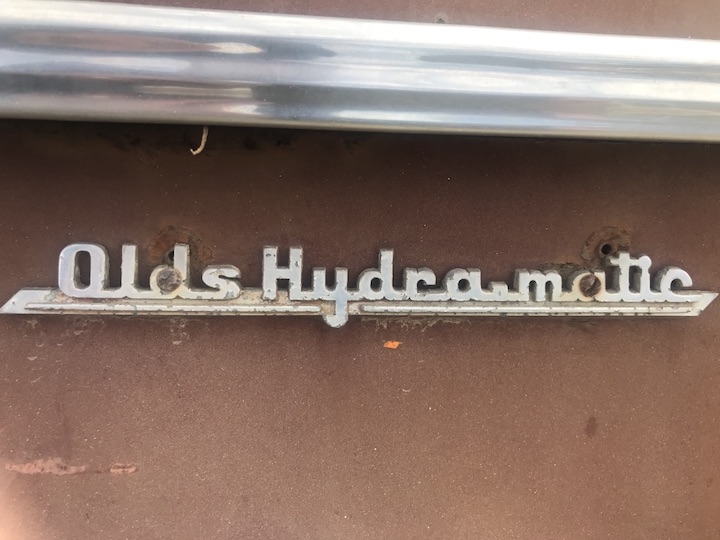
OLDSMOBILE (circa 1940s) — Oldsmobile was General Motors' test vehicle for a new automatic transmission developed in the late '30s dubbed Hydra-Matic Drive. It went into production in May 1939 for the 1940 model year. The first Oldsmobiles so equipped were shipped in October 1939 in the Oldsmobile Series 60 and the Oldsmobile Series 70. It was not unusual to see the new transmission advertised on Oldsmobiles of the time as displayed by these two abandoned cars. (Photos by Jim Prueter)
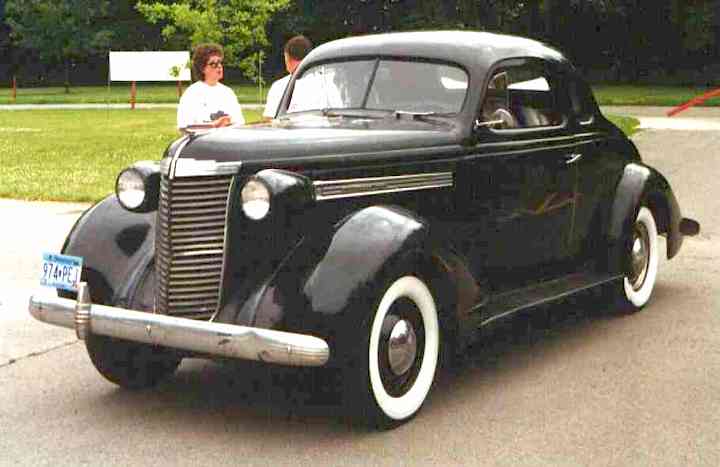
NASH (1938) — This 1938 Nash Ambassador business coupe found in eastern North Carolina. has seen much better days. While Nash offered a full range of cars from coupes to sedans and with a choice of six and eight-cylinder engines, sales sagged to 41,543 in 1938. The Nash lineup was completely revised for 1939 with sharper, more modern styling and sales surged to 60,348. One interesting feature that could be ordered for the first time in 1938 was the Nash Weather Eye, which directed fresh, outside air into the car's fan-boosted, filtered ventilation system, where it was warmed (or cooled), and then removed through rearward placed vents. The process also helped to reduce humidity and equalize the slight pressure differential between the outside and inside of a moving vehicle. (Photos by Jim Meachen)
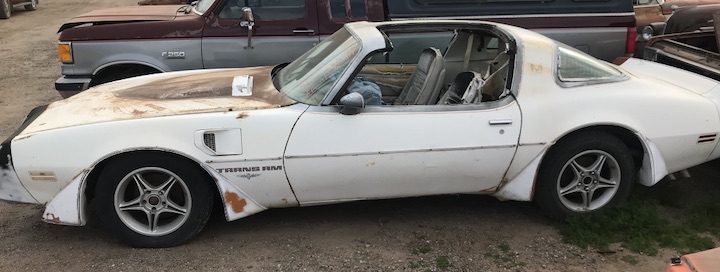
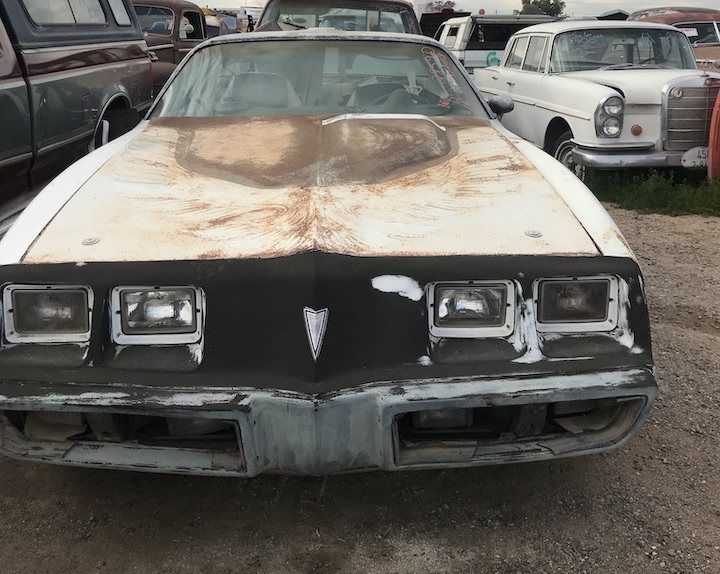
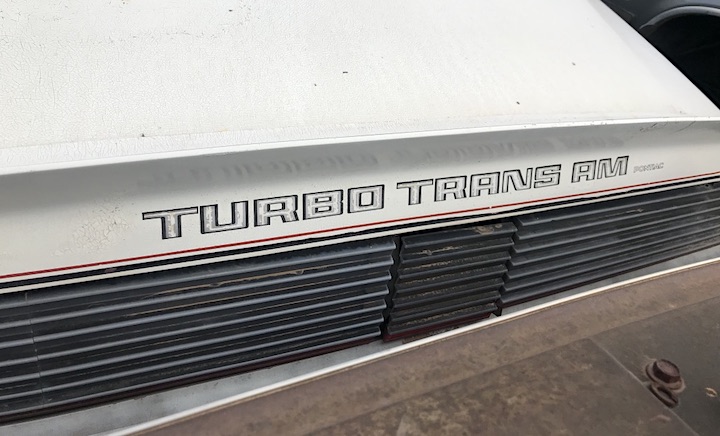
PONTIAC (circa 1979) — The second generation Pontiac Trans Am was completely restyled in 1979. Car and Driver magazine named the Trans Am the best handling car of 1979 with the WS6 performance package. This circa 1979 Trans Am was found in Casa Grande, Ariz. (Photos by Jim Prueter)
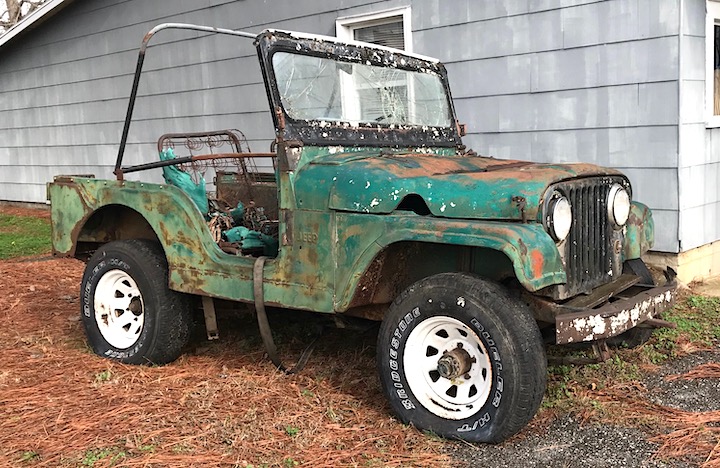
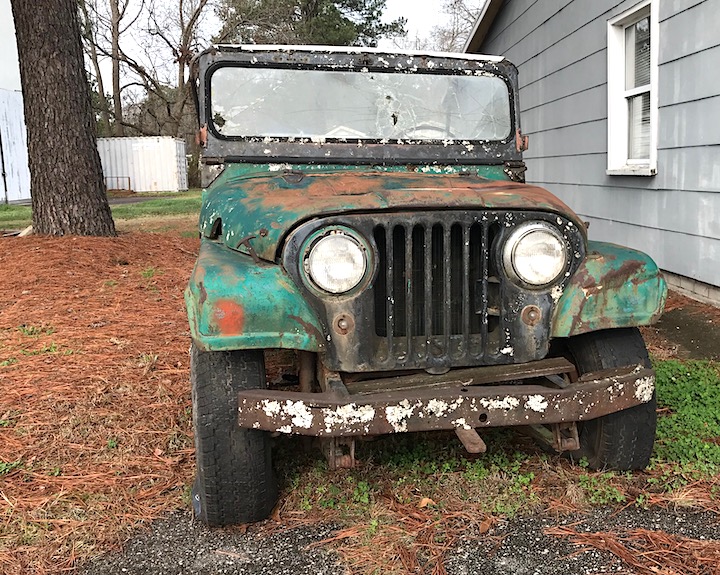
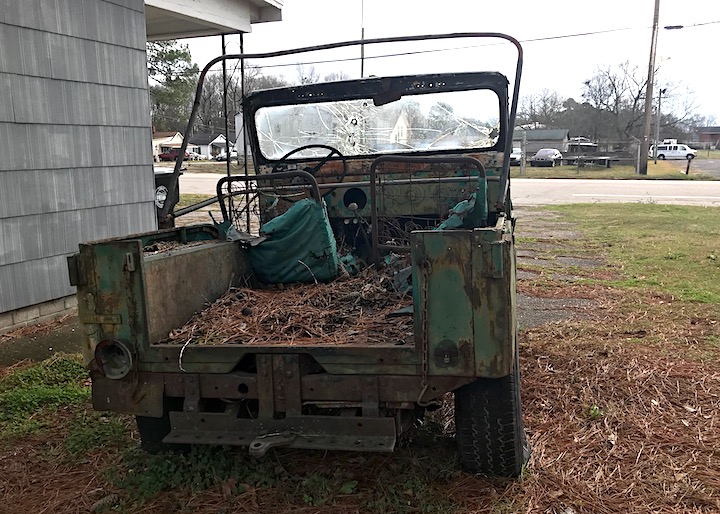
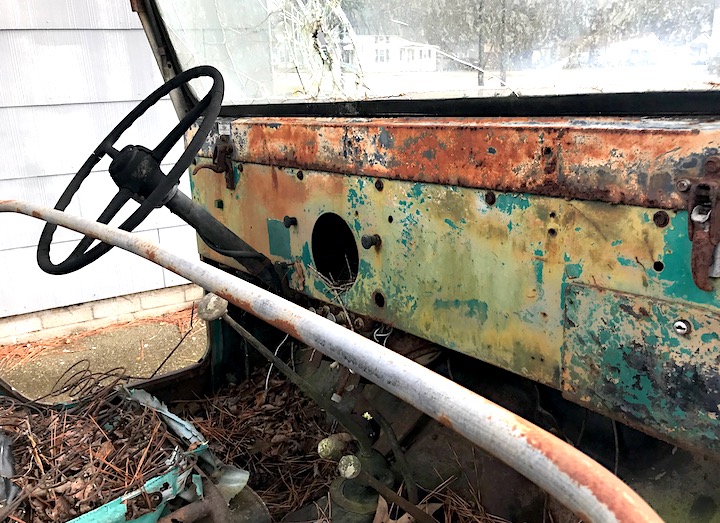
The Jeep became a go-anywhere icon in the U.S. after Willys-Overland began production of the civilian Jeep (known as CJ) following World War II. Old Jeeps in various states of repair can be seen in virtually every corner of the country. This Jeep of undetermined age needs some considerable restoration. It was found in Stantonsburg, N.C. (Photos by Jim Meachen)
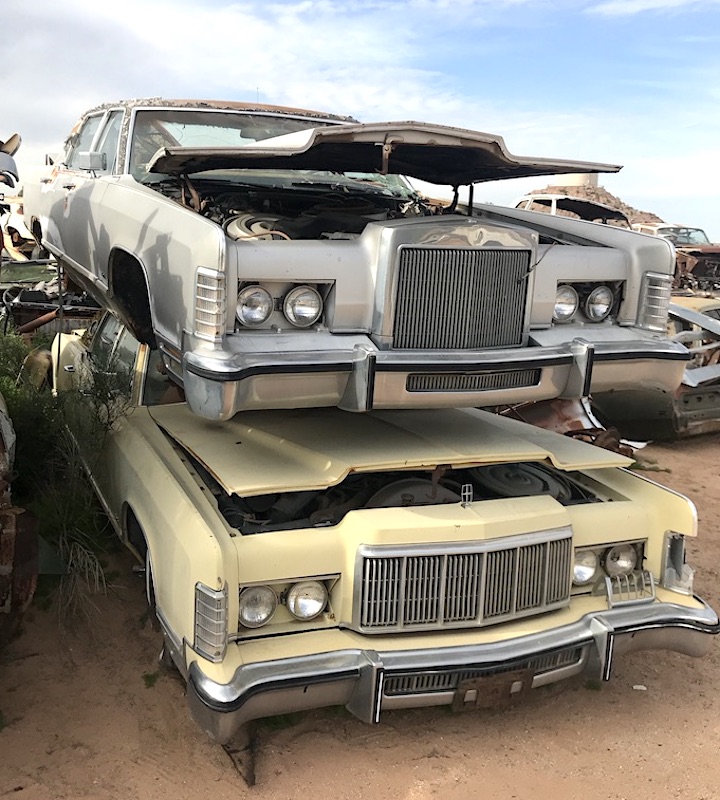
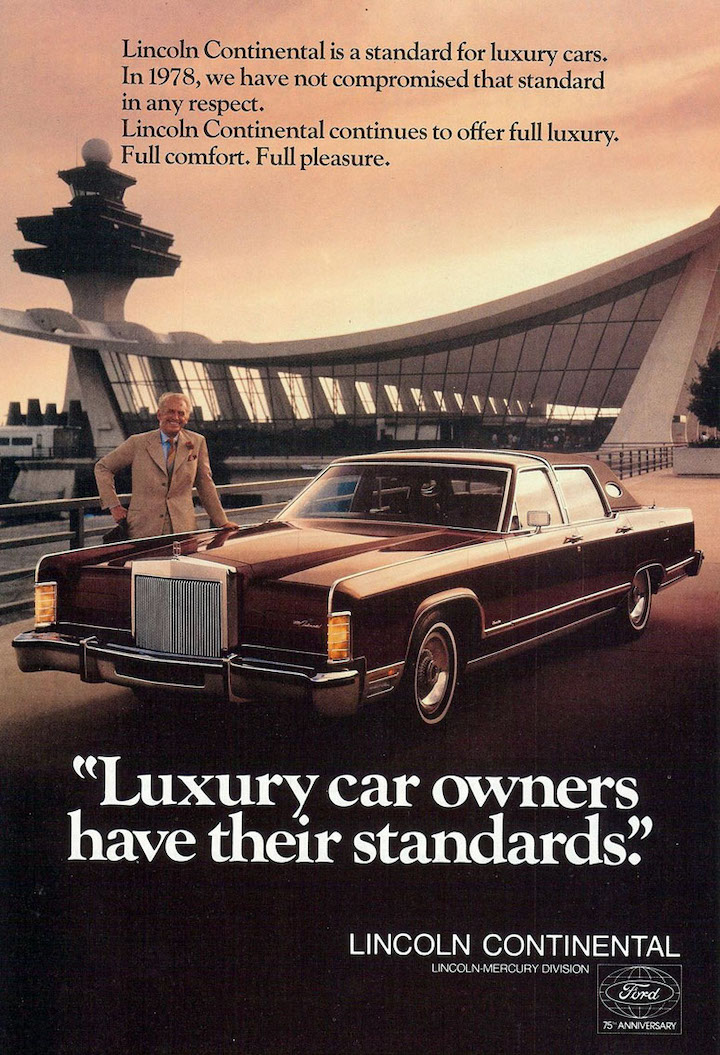
LINCOLN (circa 1975-1978) Lincoln enjoyed a measure of success during the second half of the 1970 decade selling as many as 189,546 vehicles in 1979. However, Lincoln sales still trailed arch-rival Cadillac by about 200,000 in each of those years. These two Lincoln sedans have gone into retirement on top of each other. The top car is a 1978 model and the bottom car is a 1975. (Photo by Jim Prueter}
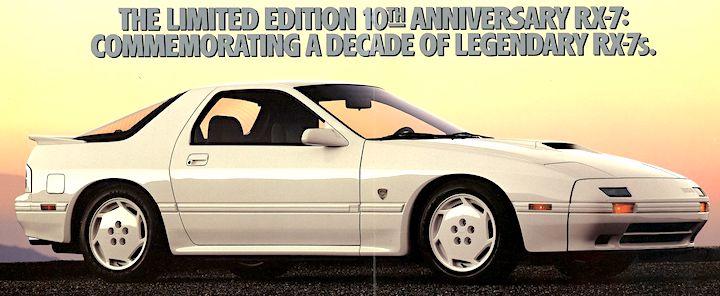
MAZDA — Mazda built the RX-7 sports car through three generations from 1978 through 2002. It came with a compact, lightweight Wankel rotary engine. More than 800,000 RX-7s were manufactured over its lifetime. This field of used-up RX-7s is located in eastern North Carolina. (Photos by Ralph Gable)
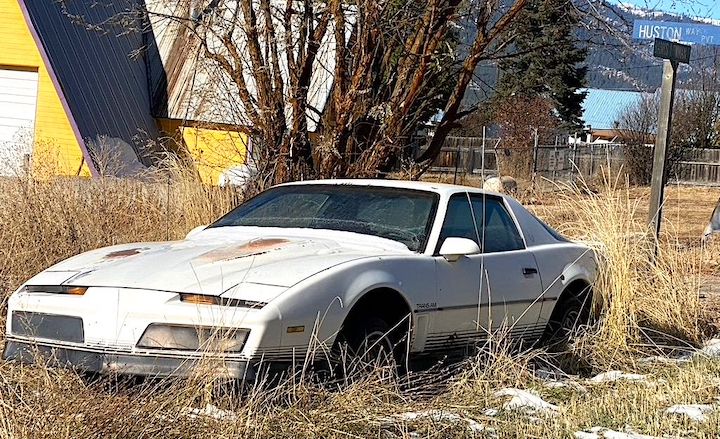
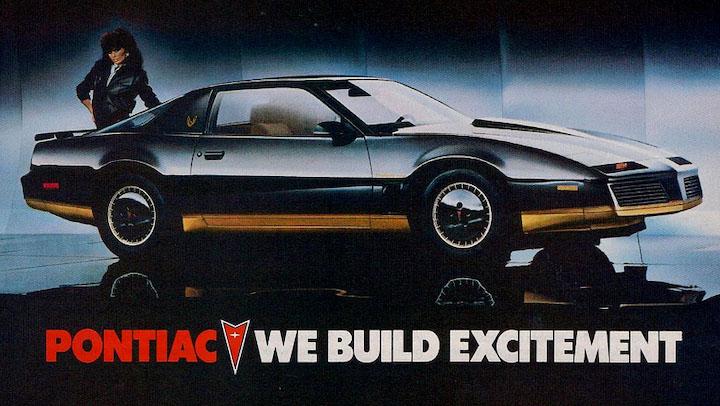
PONTIAC (1982-1983) — This 1982-83 Pontiac Firebird Trans-Am was discovered in Garden Valley, Idaho. The 1982 model was the start of the third generation that was built through 1992. Sales of the V-8 Trans Am reached a peak in 1979 with 117,108 units sold. (Photo by Jim Prueter)
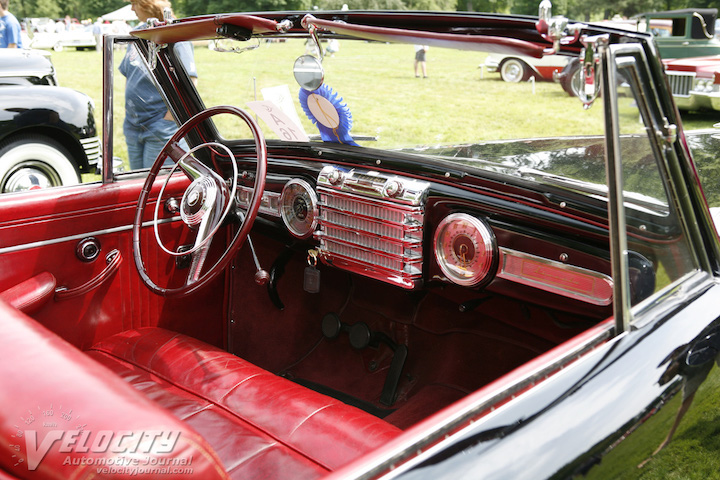
LINCOLN (1946-1948) — 1946-1948 Lincoln models featured a unique and stylish dashboard that appears user friendly. This unrestored dash was discovered in an abandoned car in South Carolina. A restored version is pictured above on a car that apparently captured a car show blue ribbon. Round gauges flanked a large radio layout, speedometer on the left and clock on the right. Four smaller gauges to the left included gas and temperature readings. The standard transmission was a "three on the tree" 3-speed manual. (Photo by Ralph Gable)
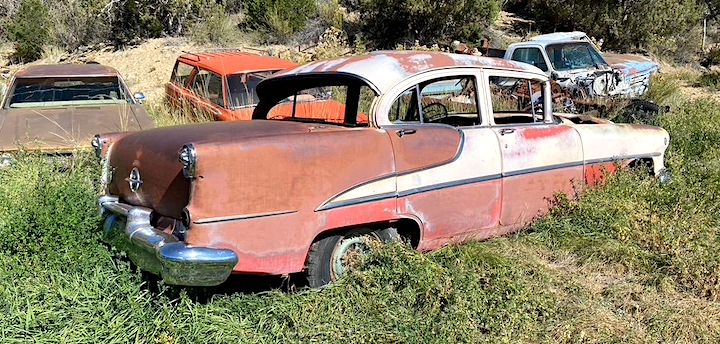
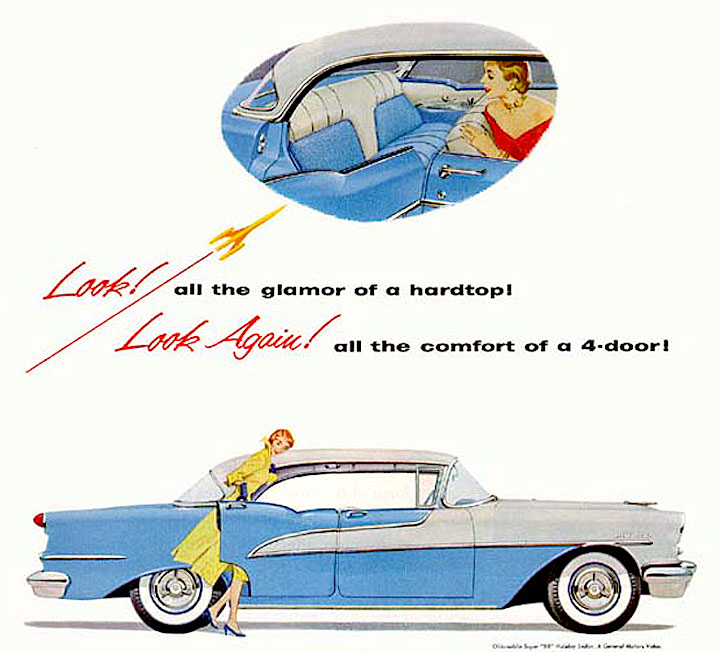
OLDSMOBILE (1955) — This 1955 Oldsmobile was found in retirement in Utah. Oldsmobile was enjoying remarkable popularity in the mid-50s with some creative styling and its Rocket 88 advertising. In 1955 the GM brand ranked fifth in sales behind Chevrolet, Ford, Buick, and Plymouth with 583,179 units sold. (Photo by Jim Prueter)



NASH (circa 1953-1955) — This Nash Metropolitan was found in the wild in Arizona. The Metropolitan was assembled in England and marketed from 1953 until 1961 in the United States. The Metropolitan came in two body designs — convertible and hardtop. The tiny car for the time came initially with a 73 cubic inch straight 4-cylinder engine making 50 horsepower mated to a 3-speed manual. According to magazine reviews, it was good for about 20 seconds from 0-to-60. There were 83,442 units sold over its life span. (Photos by Jim Prueter)
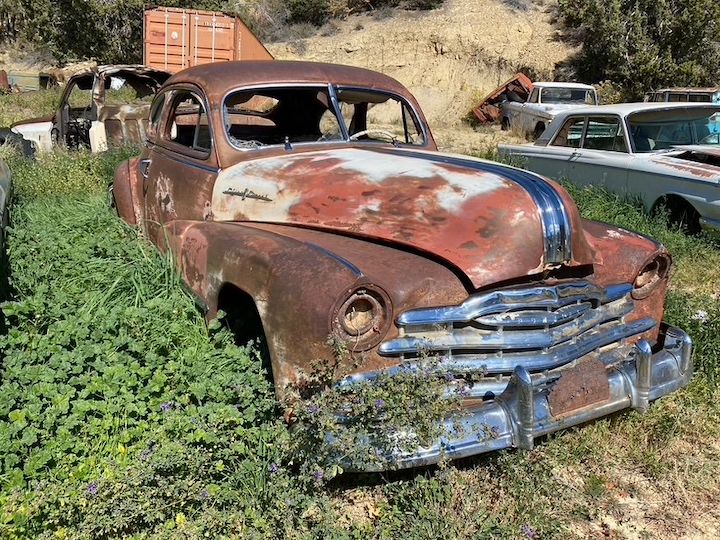
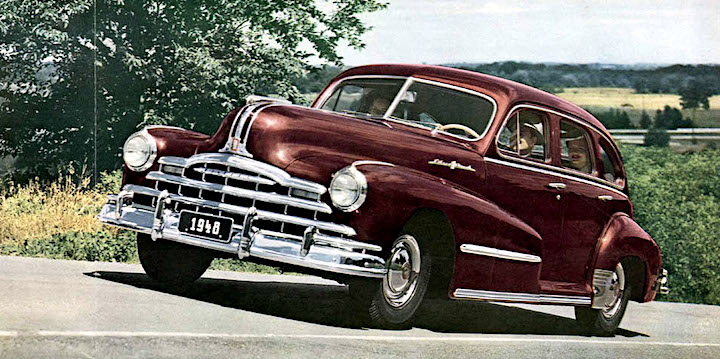
PONTIAC (1948) — In the 1940s Pontiac was slotted above Chevrolet, but below Oldsmobile, Buick and Cadillac in General Motors' 1940s hierarchy. In 1948, the year of this abandoned discovery, Pontiac sold 235,419 vehicles, the fifth best brand in sales below Chevrolet, Ford, Plymouth and Dodge, and just ahead of Buick. (Photo by Jim Prueter)
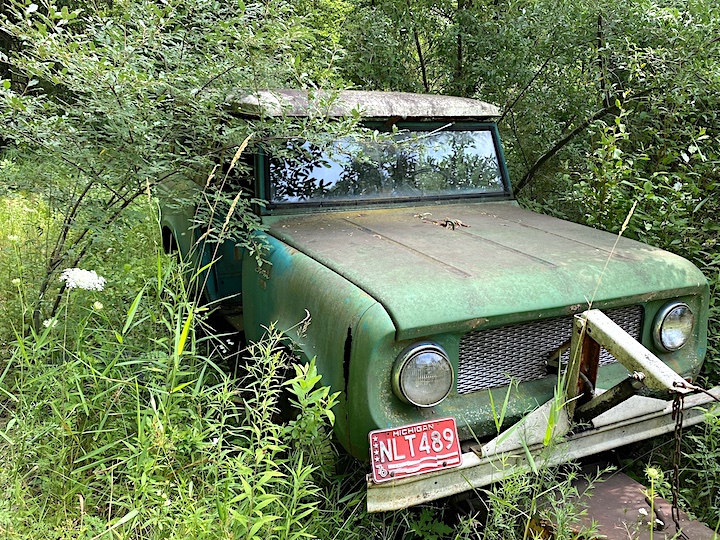
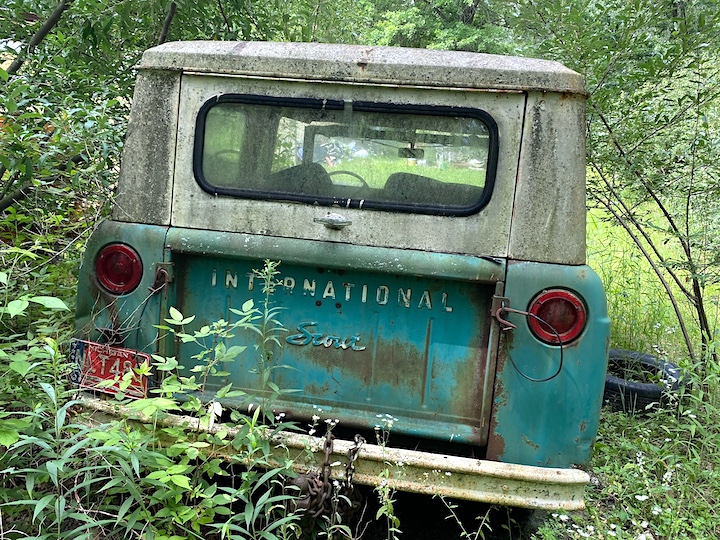
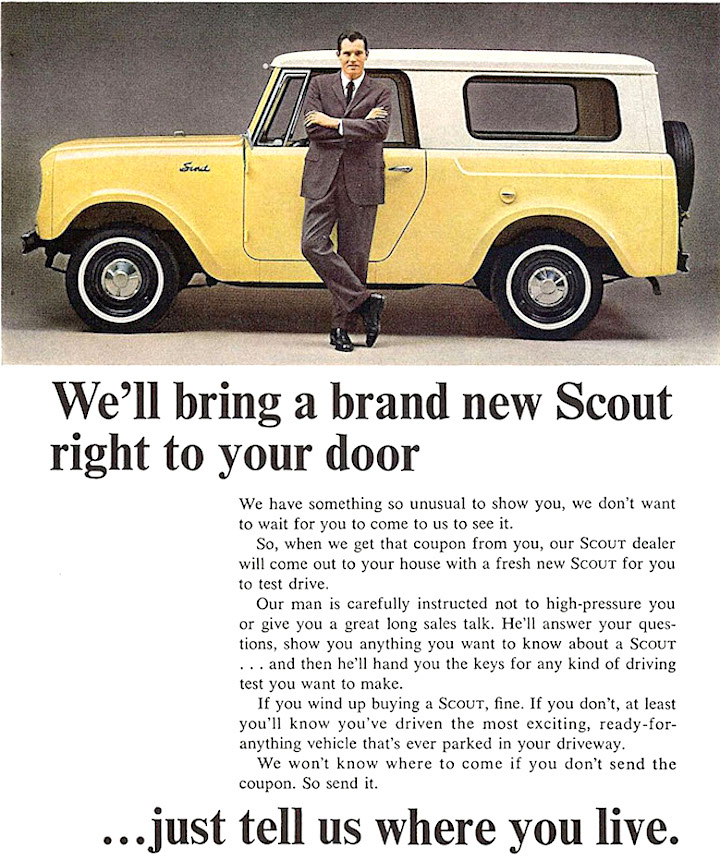
INTERNATIONAL (Scout) — The International Harvester Scout is an off-road vehicle produced by International Harvester from 1961 to 1980. It was created as a competitor to the Jeep, and it initially featured a fold-down windshield. The Scout was produced in Fort Wayne, Ind,, as a two-door truck with a removable hard top. This discarded example was found in Michigan. (Photos by Jim Prueter)
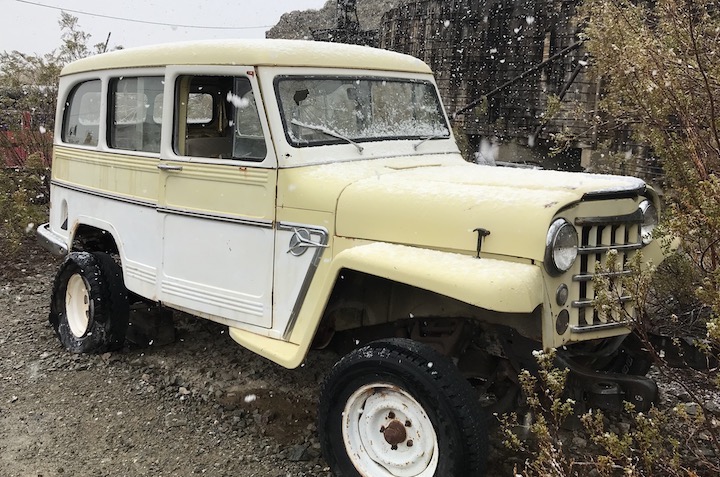
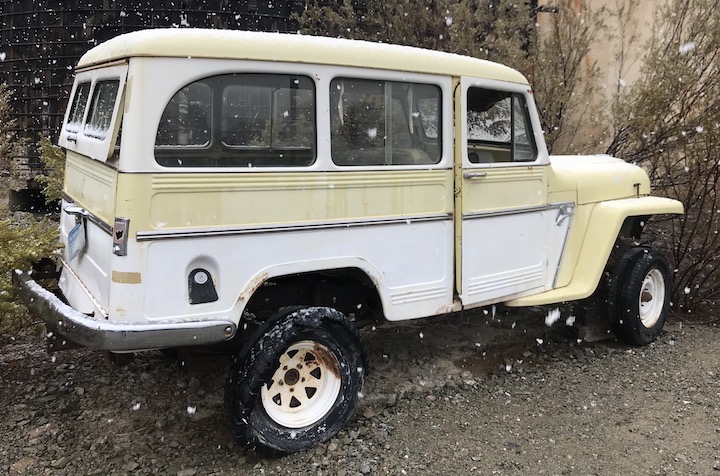
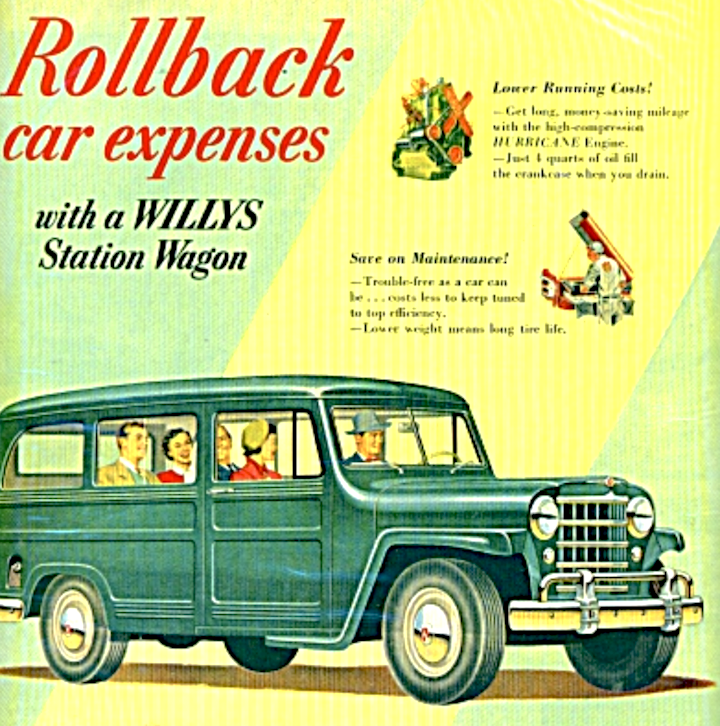
JEEP (early '60s) — This early 1960s Jeep Utility Wagon — manufactured from 1946 to 1964 by Willys and Kaiser Jeep in the U.S. — was found in Nevada still sporting a good coat of paint. There were more than 300,000 wagons and its variants built in the U.S. (Photos by Jim Prueter)
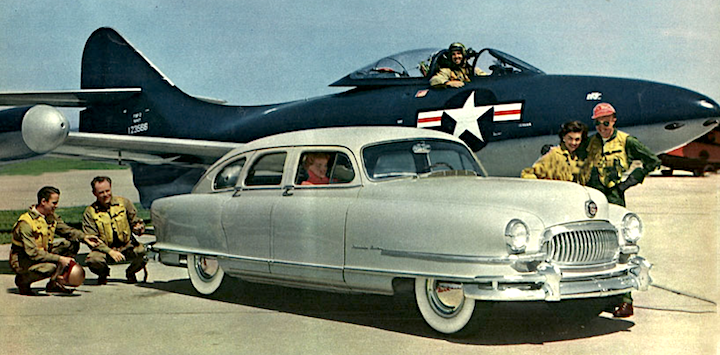
NASH (1951) — This 1951 Nash, decked out as a well-equipped police car, sits on the side of Route 66 in Paris Springs, Mo. Nash was rather successful in 1951 selling 205,307 vehicles ranking 11th out of 20 nameplates. And presumably some of those Nash models found their way traveling along the famous Chicago to Santa Monica cross-country road. (Photo by Jim Meachen)
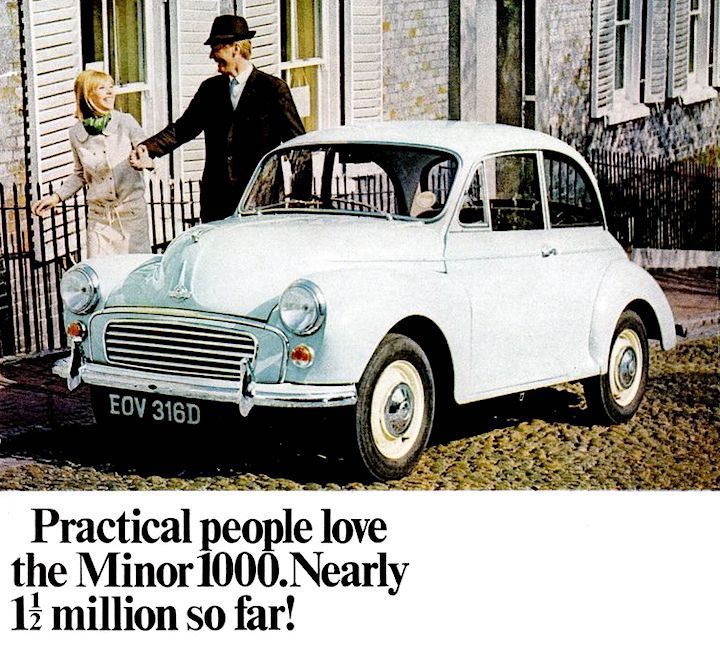
MORRIS MINOR (circa 1956-1971) — The Morris Minor economy car was built in England from 1948 through 1971. The last of three generations was built from 1956-1971, called the 1000 series. It came as a convertible, two-door coupe and four-door sedan. It was what would be classified today as a city car with a wheelbase of 86 inches and a length of 148 inches — and it weighed in at just over 1,700 pounds. The original inline 4-cylinder engine had a top speed of 63 mph and a 0-to-60 time of 52.5 seconds. By the third generation the engine had been beefed up to produce a top speed of 75 mph and a 0-to-60 time of 31 seconds. This Minor 1000 was found in a South Carolina salvage yard. (Photos by Ralph Gable)
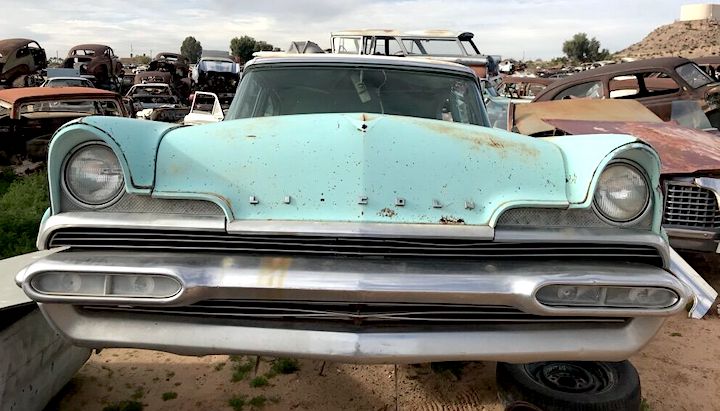
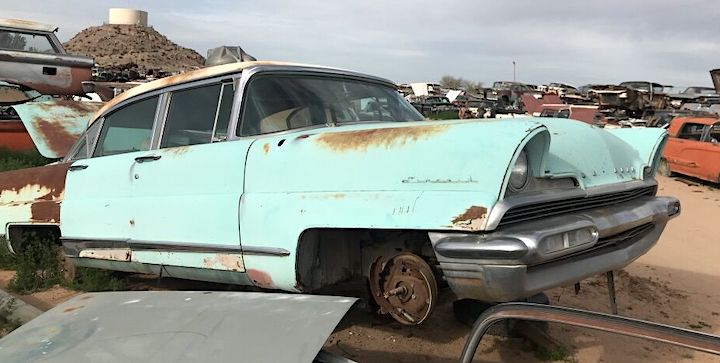
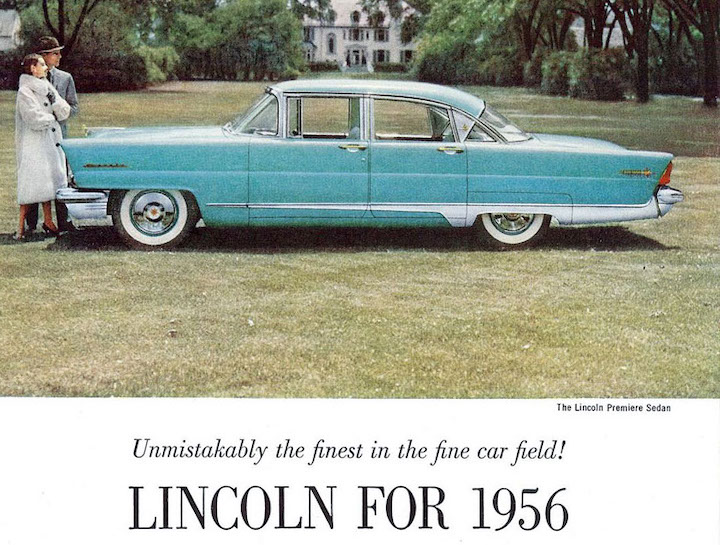
LINCOLN (1956) — This 1956 Lincoln Premier was spotted in a Casa Grande, Ariz., salvage yard. The 1956-57 Lincoln Premier was positioned below the Continental Mark II in the lineup. The '56 Premier cost on average $4,600 new, equivalent to around $50,000 in today's dollars. (Photos by Jim Prueter)
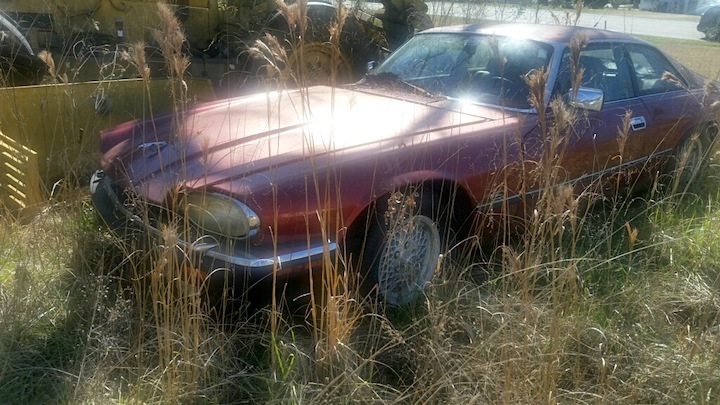
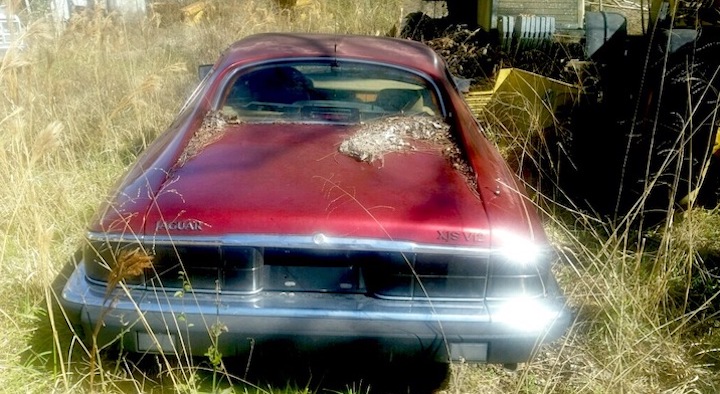
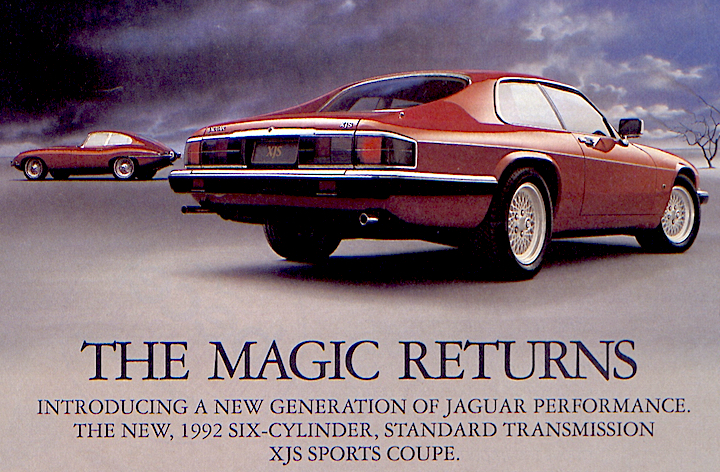
JAGUAR (1991-1996) — The Jaguar XJS is a luxury grand tourer coupe and convertible built from 1975 to 1996. There were three iteration over its 20 years with a final production total of 115,413 units. This third generation (1991 through 1996) example — manufactured under Ford's new ownership — was found in abandoned retirement in South Carolina. (Photos by Ralph Gable)
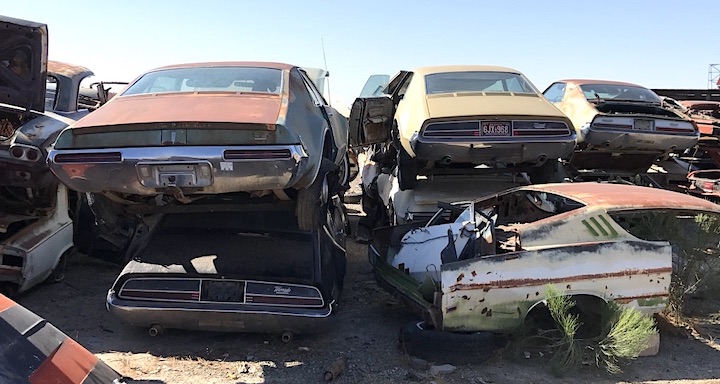
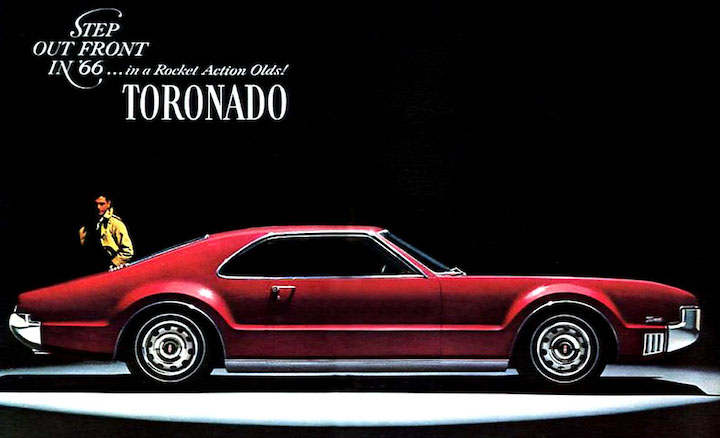
OLDSMOBILE (1966-69) — Four 1966-69 Oldsmobile Toronadoes are stacked up at an Utah junkyard. Toronado is a personal luxury car built by Oldsmobile from 1966-1992 and is known as the first front-wheel drive American car since the 1937 Cord. The first Toronado was powered by a 425 cubic inch Super Rocket V8 rated at 385 horsepower. Its stablemate, the Buick Riviera, remained a rear-drive car until 1979. (Photo by Jim Prueter)
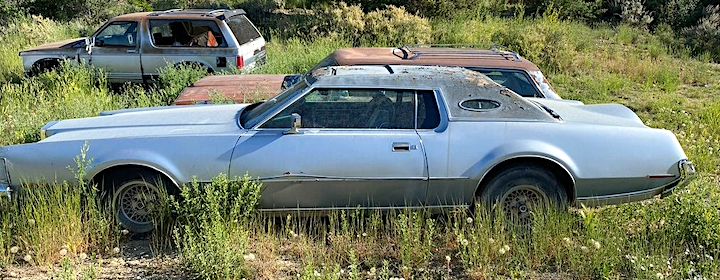
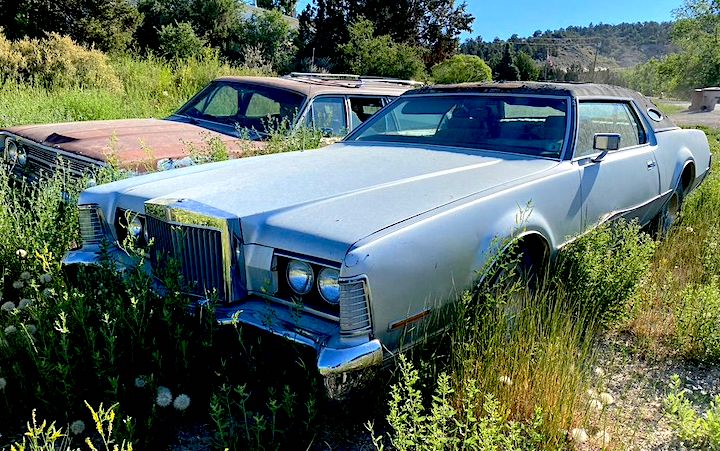

LINCOLN (circa 1970-1979) — This fifth-generation (1970-1979) Lincoln Continental was found in a field of used up vehicles in Utah. Over that 10-year span the big luxury boat underwent several exterior styling upgrades. The Continental was a large car stretching out in the neighborhood of 225 inches in both two-door and four-door styles. During this time the 2 1/2-ton car was motivated by two large V-8 engines, a 6.6-liter and a 7.5-liter mated to a 3-speed automatic. Directly above, an advertisement for the 1975 Continental. (Photos by Jim Prueter)
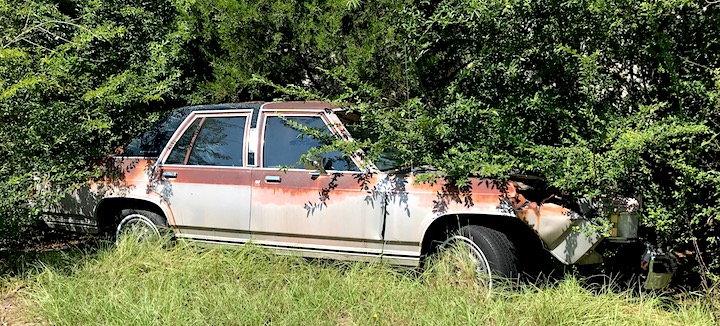
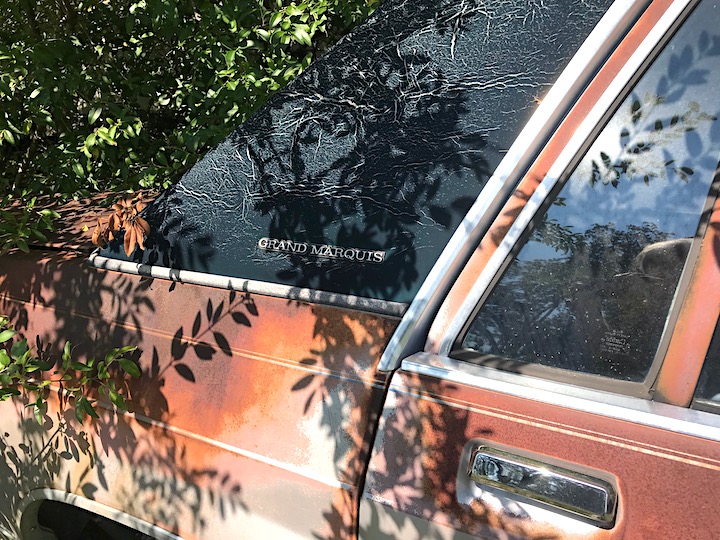
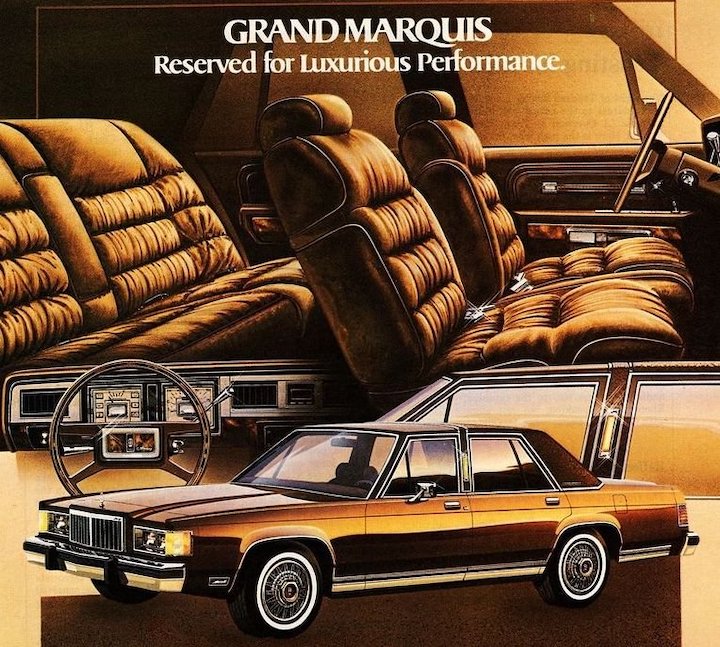
MERCURY (CIRCA 1983-84) — The Mercury Grand Marquis was a full-sized sedan sold from 1975 to 2011. From 1975 to 1982, it was the premium model of the Mercury Marquis line becoming a stand-alone model line in 1983. This circa 1983-1984 Grand Marquis was found engulfed by overgrown bushes in eastern North Carolina. (Photos by Jim Meachen)
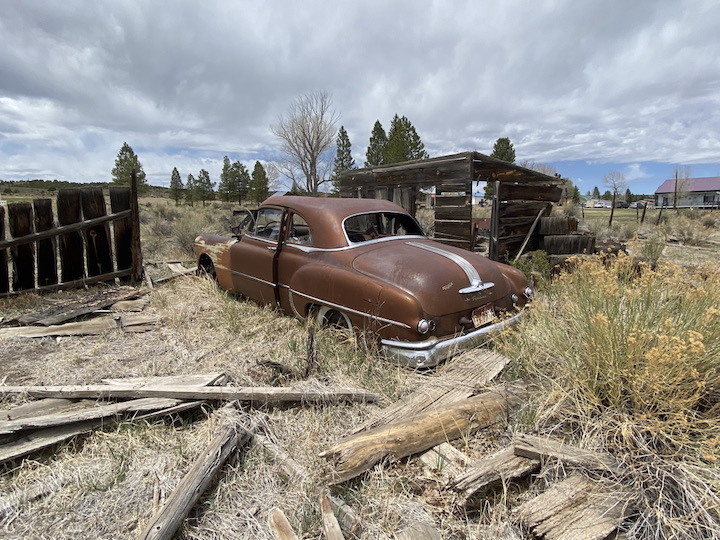
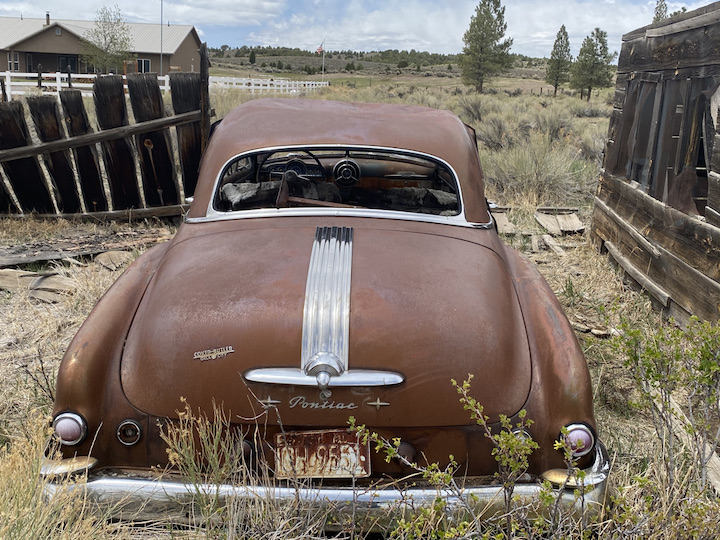
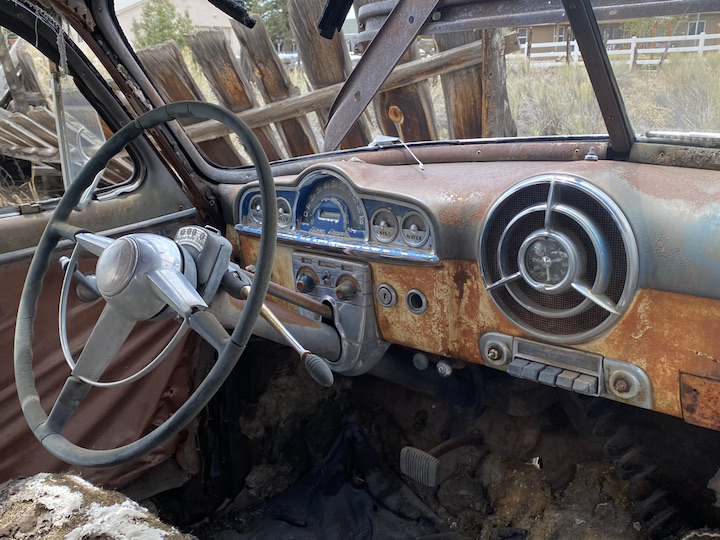
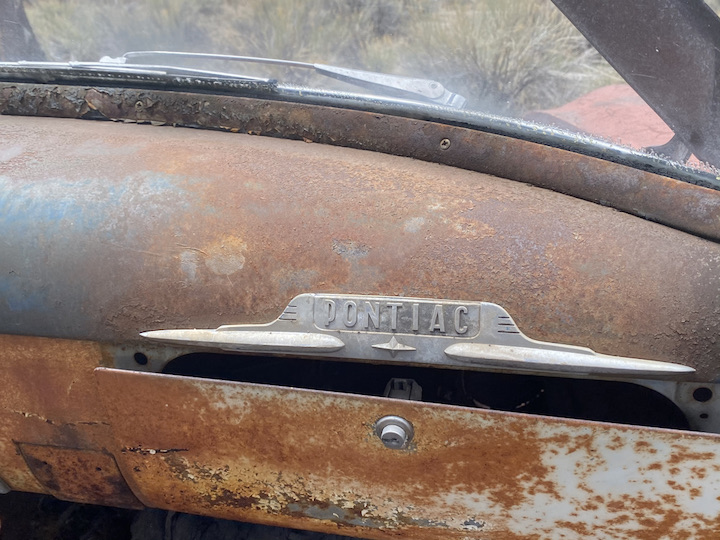
This 1949-1950 Pontiac two-door Streamliner makes a picturesque abandoned car scene in Utah. It was the second year of an all-new post-war design under the styling direction of famed GM designer Harley Earl. Several models were built including the Chieftain, Streamliner, Catalina, business coupe and convertible. The Streamliner was made front 1942 through 1951. Pontiac sold 450,000 Pontiacs in 1950, the most in the brand's history up to that point. A 268 cubic inch straight-8 Silver Streak was the top engine that year making 108 horsepower and 208 pound-feet of torque. (Photos by Jim Prueter)
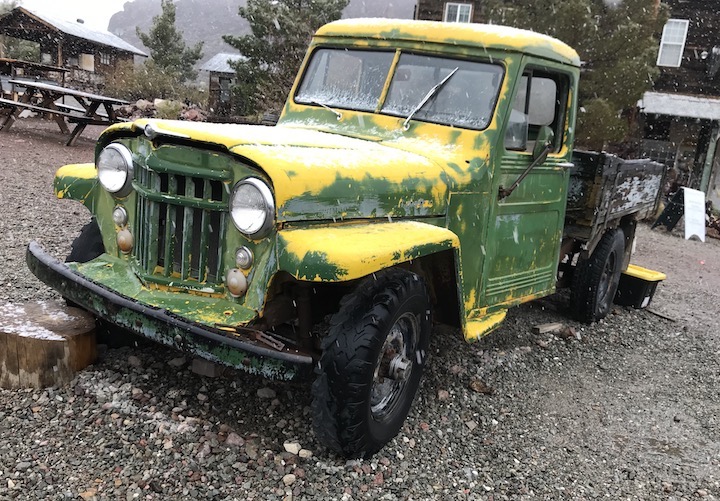
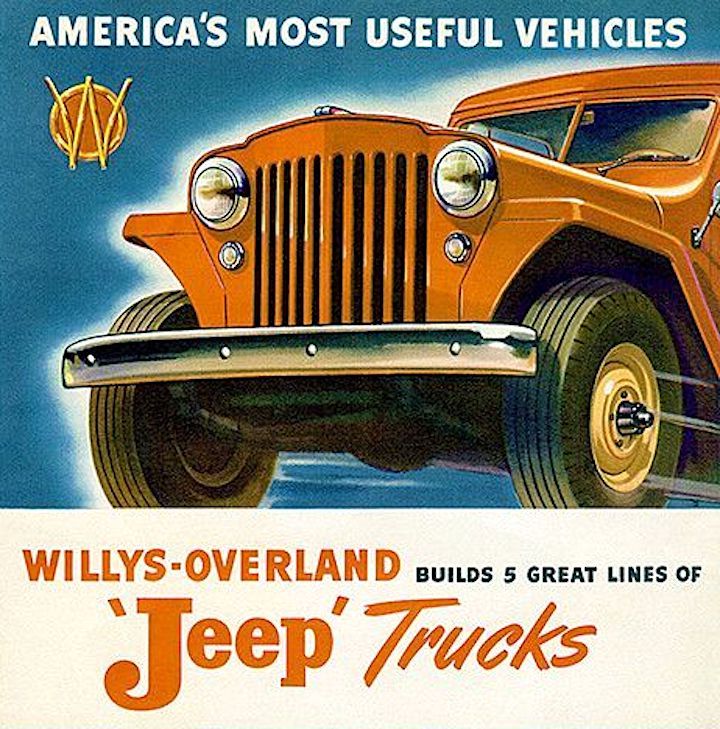
JEEP (cica 1947-19490 – This late 1940s Willys Jeep pickup truck was found in a Nevada snowstorm. The Willys Jeep pickup was built from 1947 to 1965 by Willys-Overland Motors. For 1950 the truck got a V-shaped grille with five horizontal bars. More than 200,000 of these trucks were built through its lifecycle. (Photo by Jim Prueter)
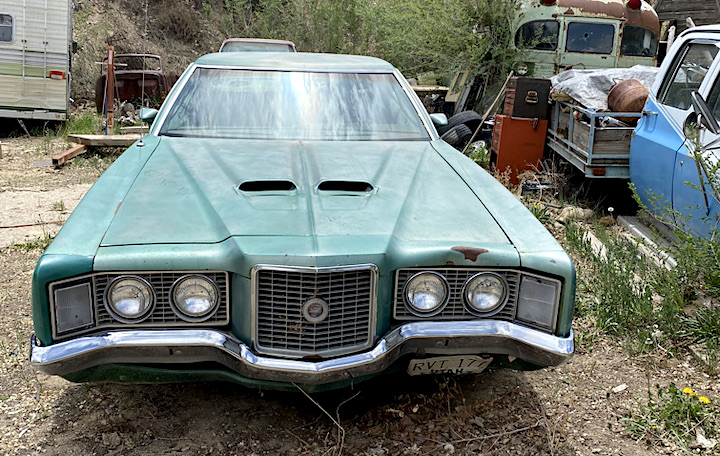
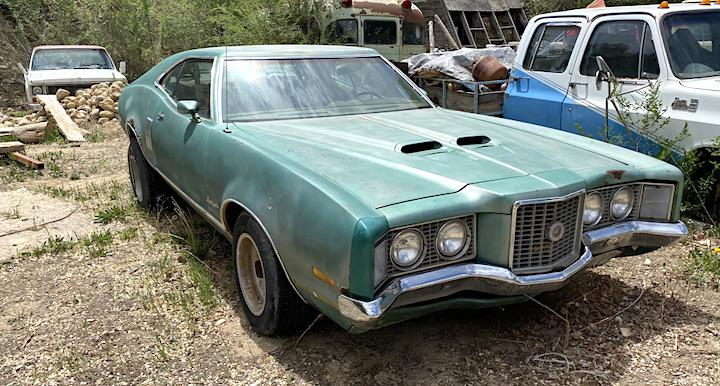
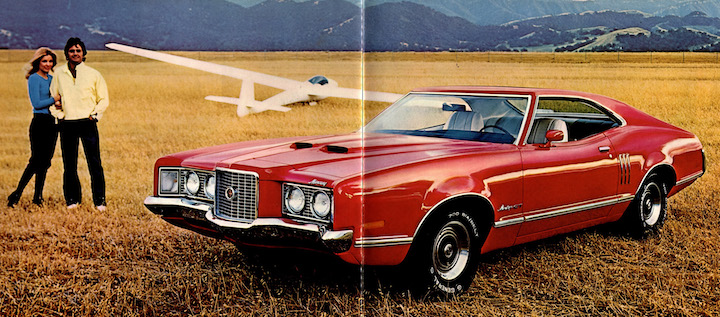
MERCURY (1972) — The second generation Mercury Montego (1972-1976) was introduced alongside the redesigned Ford Torino. The Montego was also a close kin to the Mercury Cougar. The Montego adopted a split-wheelbase chassis — 114 inches for two doors and 118 inches for four doors. The base engine was a 250 cubic-inch inline-six. Several V-8 engines of different sizes were optional. This 1972 Montego GT was discovered in Utah. (Photos by Jim Prueter)
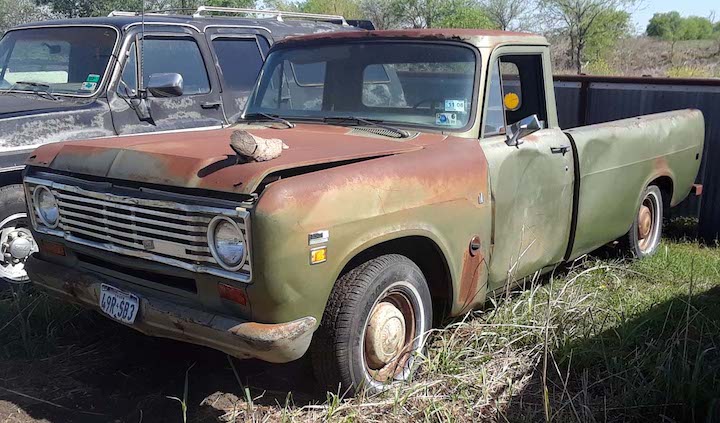
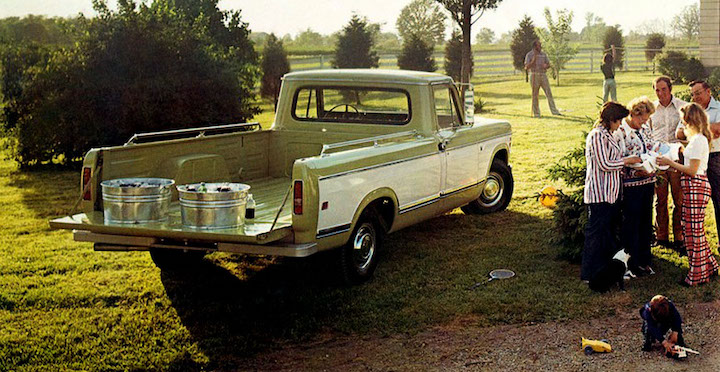
INTERNATIONAL (1974) — International Harvester produced the Light Line pickup truck from 1969 through April 1975 when production ended. The truck came with two inline 6-cylinder choices and five V-8 choices. Transmissions included a 5-speed manual and a 3-speed automatic. This 1974 example seems to be in decent shape. (Photo by Peter Hubbard)
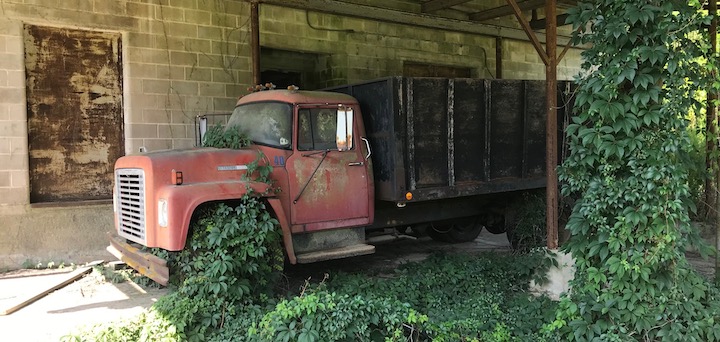
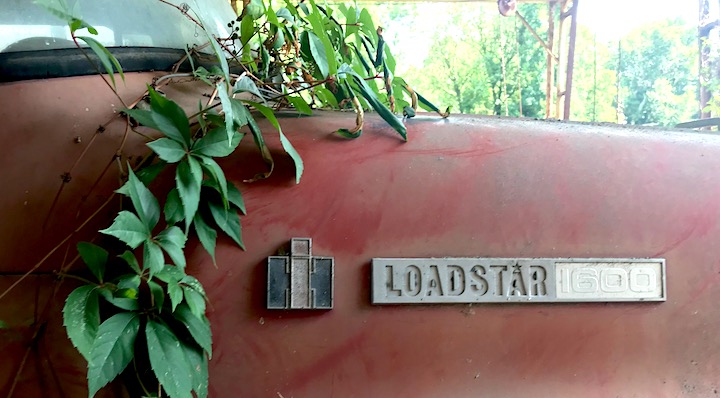
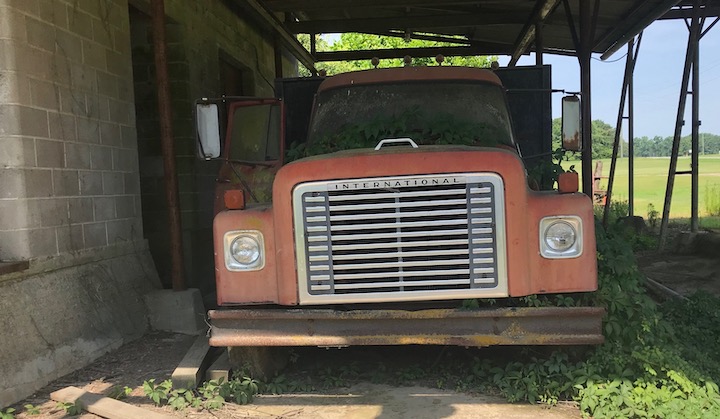
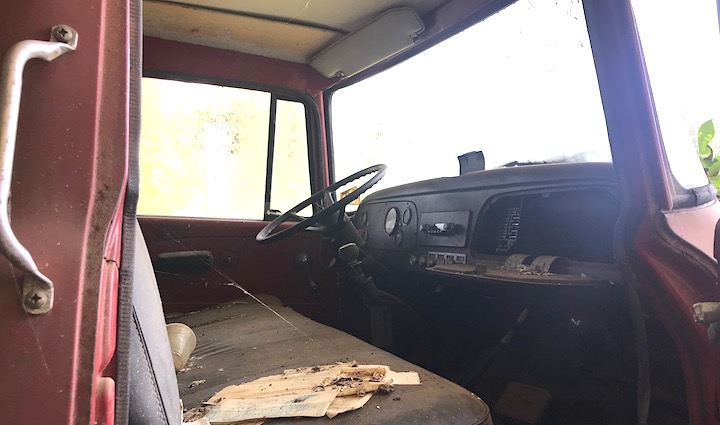
INTERNATIONAL (1972-1978) — The International Loadstar is a series of trucks that were produced by International Harvester from 1962 to 1978. The first product line of the company developed specifically as a medium-duty truck, the Loadstar was slotted between C-Line pickup trucks and the heavy-duty R-series. This 1972-78 model Loadstar 1600 was found living under a lean-to in an abandoned rural factory in eastern North Carolina, its useful life probably over. (Photos by Jim Meachen)
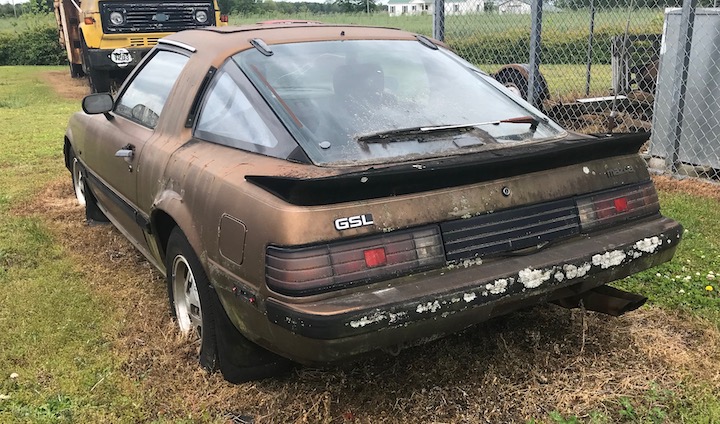
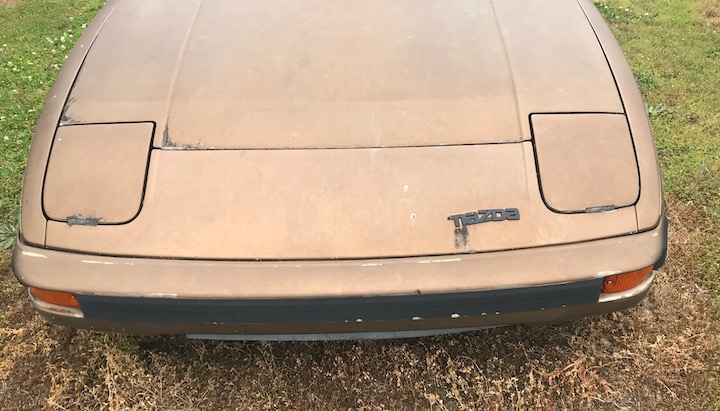
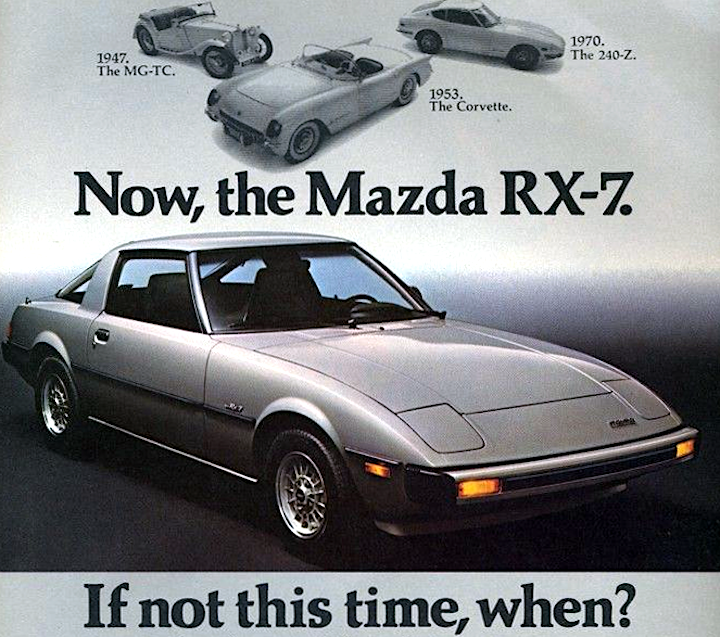
MAZDA (1984-85) — The Mazda RX-7 is a front-engine, rear-wheel-drive, rotary engine-powered sports car that was manufactured and marketed by Mazda from 1978 to 2002 across three generations, all of which made use of a compact, lightweight Wankel rotary engine. This 1984-85 survivor found in eastern North Carolina is from the first generation. (Photos by Jim Meachen)
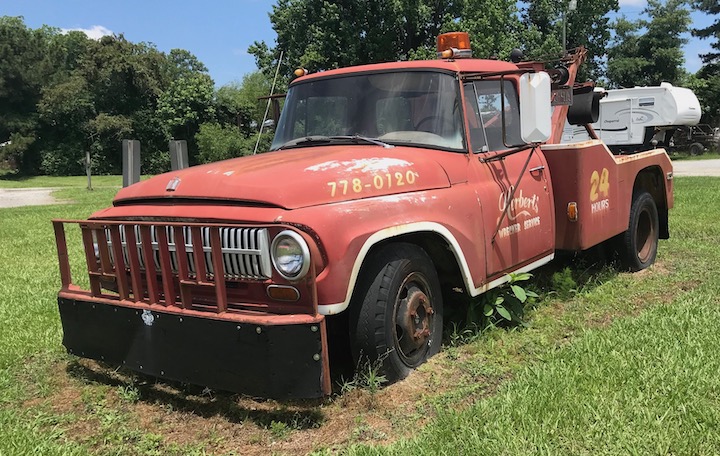
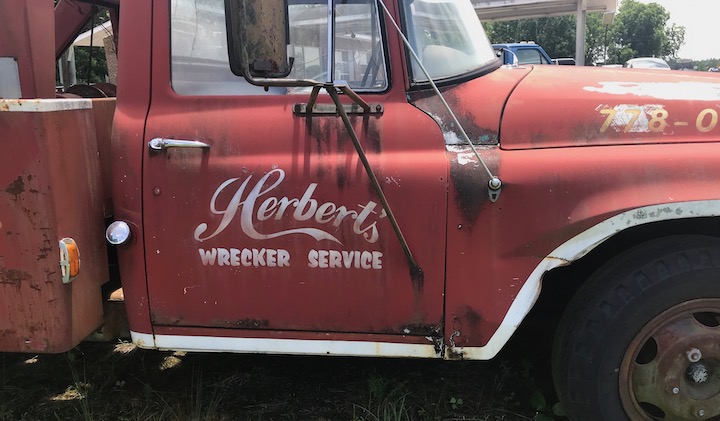
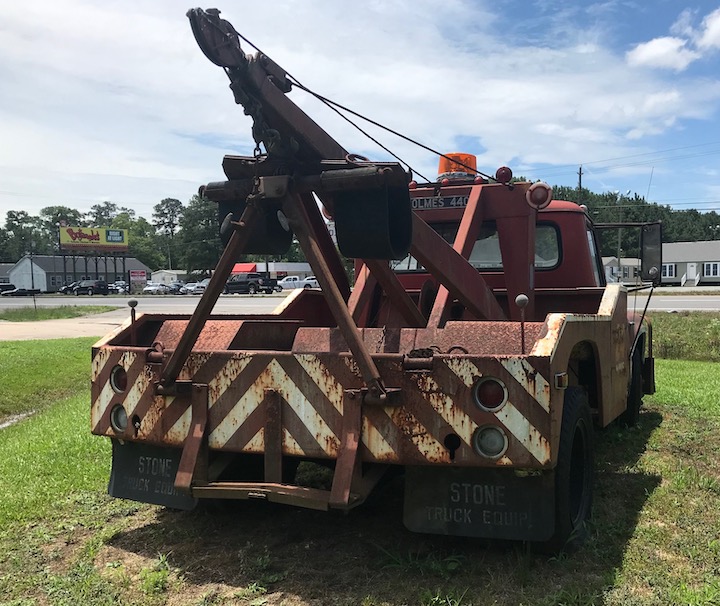
INTERNATIONAL (1966-67) — This 1966-67 International wrecker has been retired and has now become a large yard ornament in eastern North Carolina. If it could talk it would probably have some interesting stories to tell from its time picking up stranded motorists and giving them a tow. (Photos by Jim Meachen)
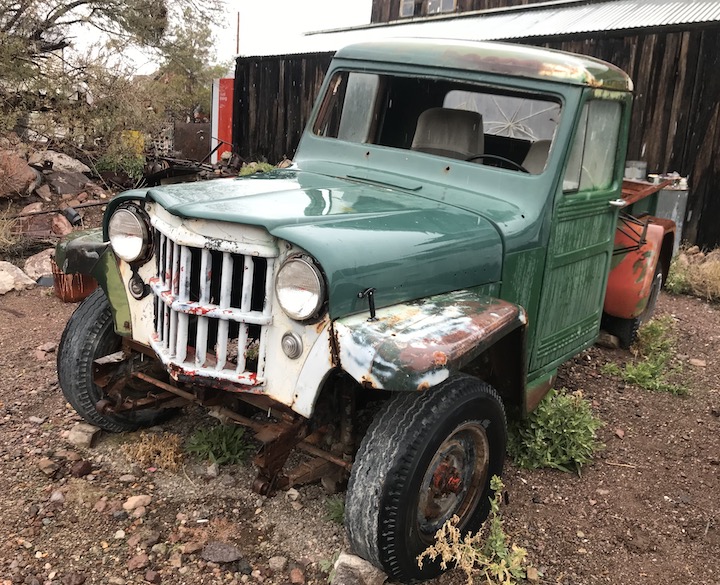
JEEP (1950s) — The Jeep Willys became popular after World War II and was sold in a variety of formats. This early 1950s model Jeep pickup — which can possibly be called a forerunner to the current Jeep Gladiator — was found in Nevada with a two-tone paint scheme. (Photo by Jim Prueter)
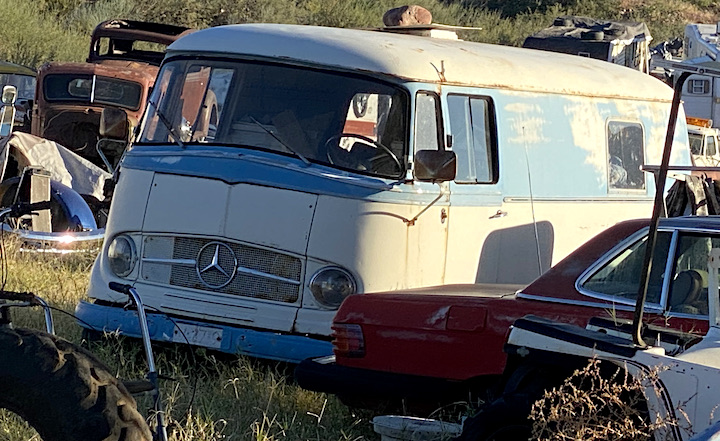
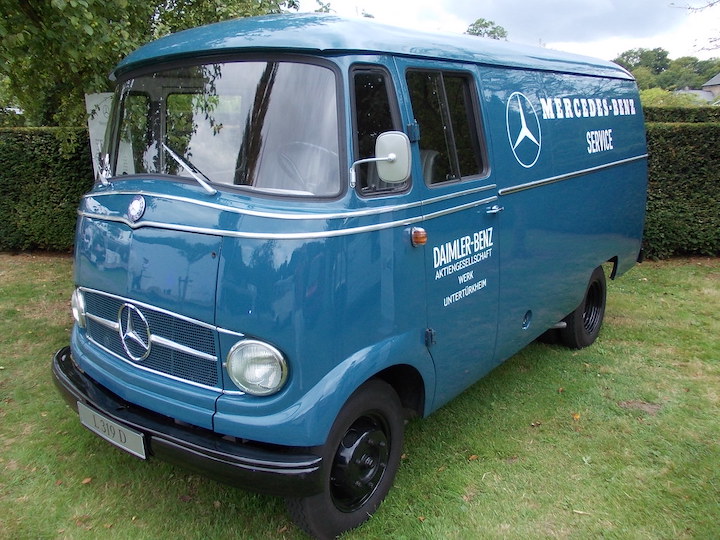
MERCEDES (circa 1960s) — This circa 1960s Mercedes-Benz L319 was discovered in an Arizona salvage yard. L319 is a light commercial vehicle built by Mercedes-Benz between 1955 and 1967. Larger than a standard delivery van, but smaller than a conventional light truck of the period, it was the manufacturer's first model in this class. The vehicle was offered with a range of van and truck bodies. Photo above is a 1967 van. (Photo by Jim Prueter)
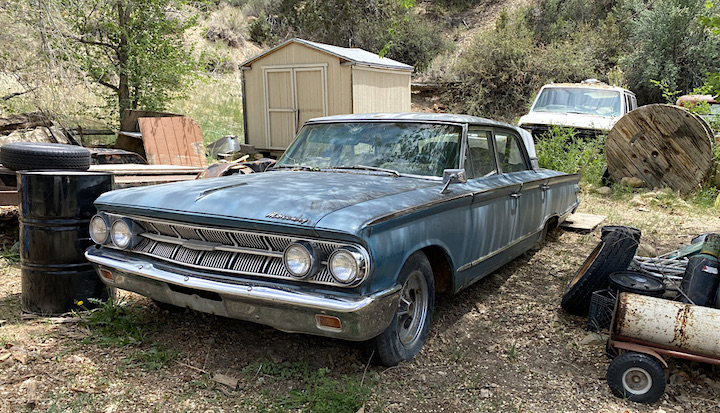
MERCURY (1963) This 1963 Mercury Monterey was discovered in good condition in retirement in Utah. The Monterey was manufactured from 1952 to 1974 deriving its name from Monterey Bay. During its production, the Monterey was offered in multiple body styles, ranging from coupes, convertibles, sedans, hardtops, and station wagons. For 1963 the Monterey came with five engine choices ranging from a 3.7-liter inline 6 to a 6.7-liter V-8. A manual transmission as well as a 3-speed Merc-O-Matic automatic were offered. (Photo by Jim Prueter)
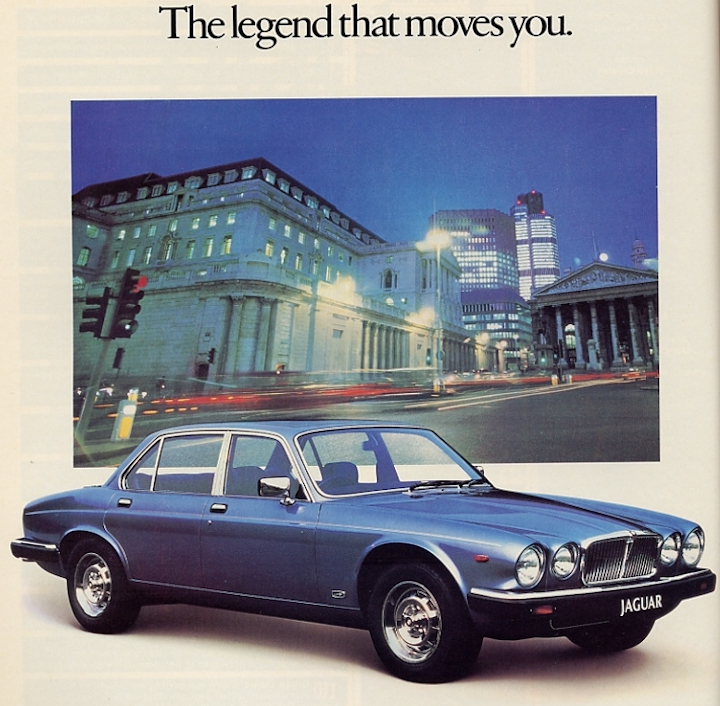
JAGUAR (late '70s) — This late 1970's model Jaguar XJ series sedan was found in abandoned, but apparently restorable condition in South Carolina. The first generation of the XJ was produced for 24 years with major facelifts in 1973 and 1979. Three engines were offered — a 2.8-liter inline 6, a 4.2-liter inline 6, and a 5.3-liter V-12. (Photo by Ralph Gable)
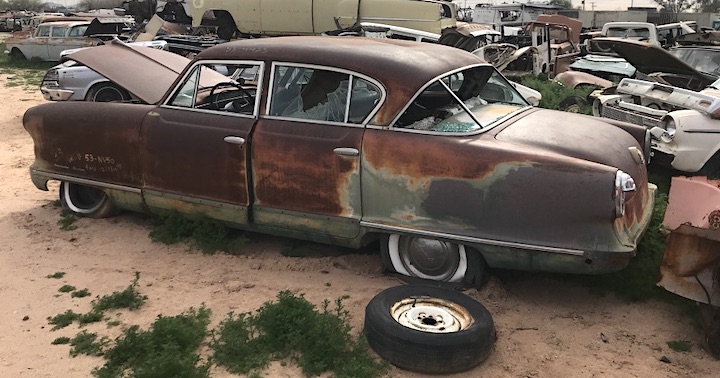
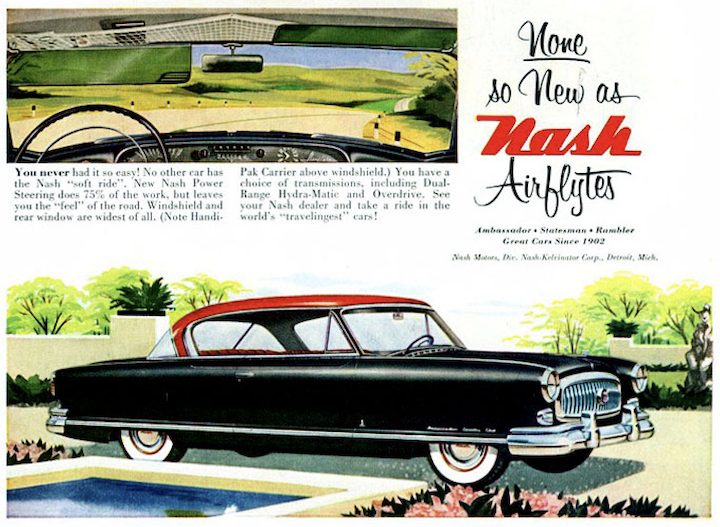
NASH (1952-1954) — The remains of this 1952-54 Nash Ambassador was discovered in an Arizona salvage yard. The Nash Ambassador received a complete restyling for 1952 celebrating the company's 50th anniversary. The 1952 unit-body design looked like nothing else on the road. It continued into 1954 almost unchanged, before it got a revised front grille and more pronounced tail fins for 1955 and 1956. With the new design in 1952 Nash sales rose to 154,291 cars. (Photo by Jim Prueter)
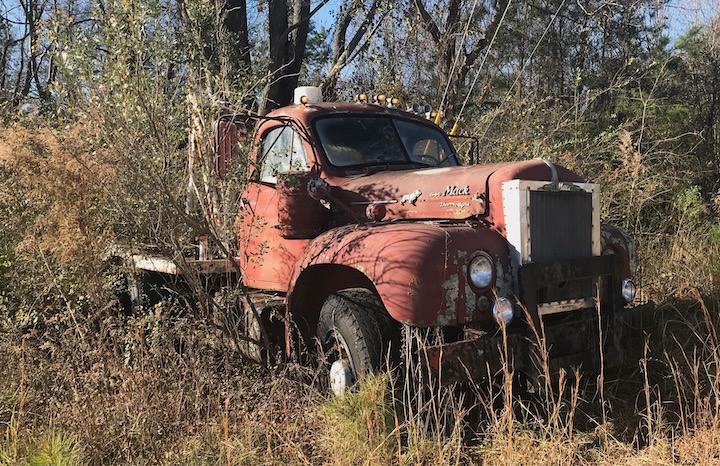
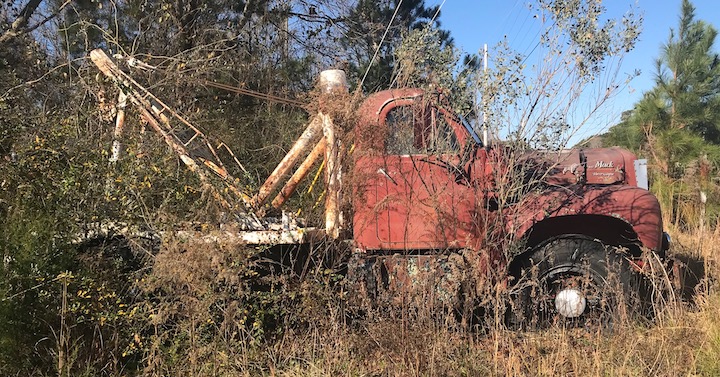
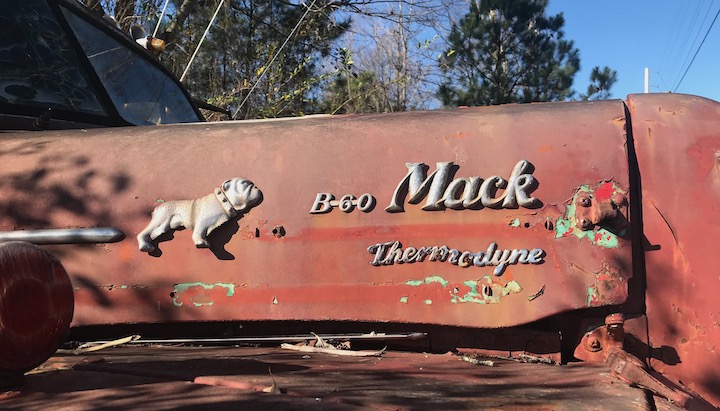
MACK — A Mack B-60 Thermodyne wrecker lives in retirement near Saratoga, N.C. The B-Series trucks were introduced in 1953 and were built through 1966. It was one of Mack's most successful products with 127,786 sold, some of which are still in use. The Thermodyne open chamber, direct-injection diesel engine established Mack's leadership in diesel performance and fuel efficiency. (Photos by Jim Meachen)
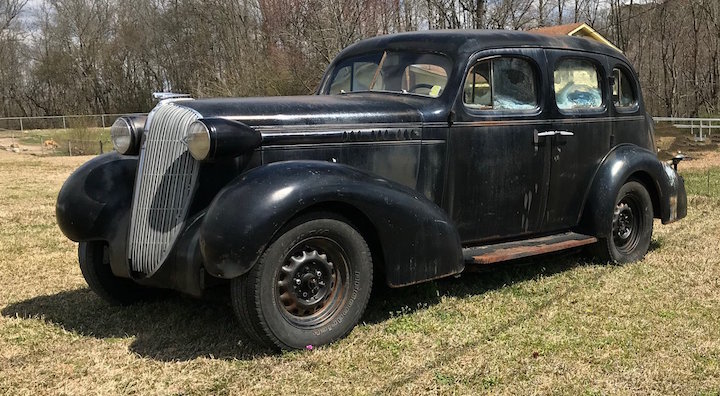
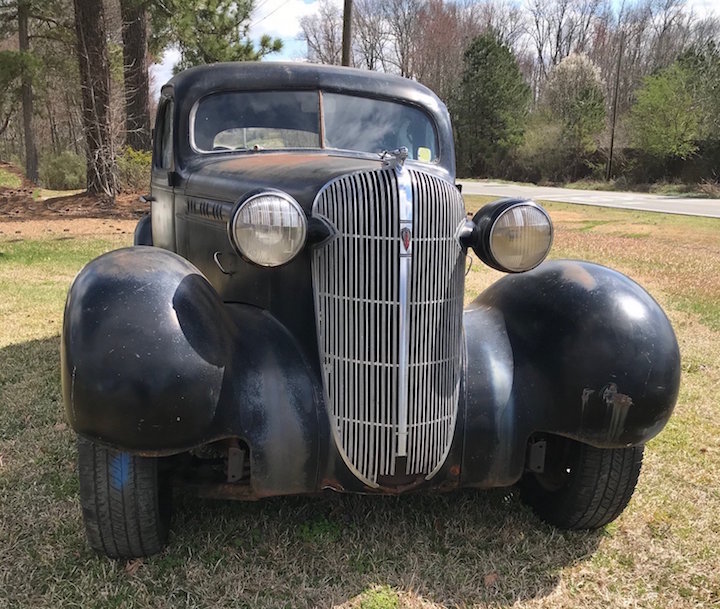
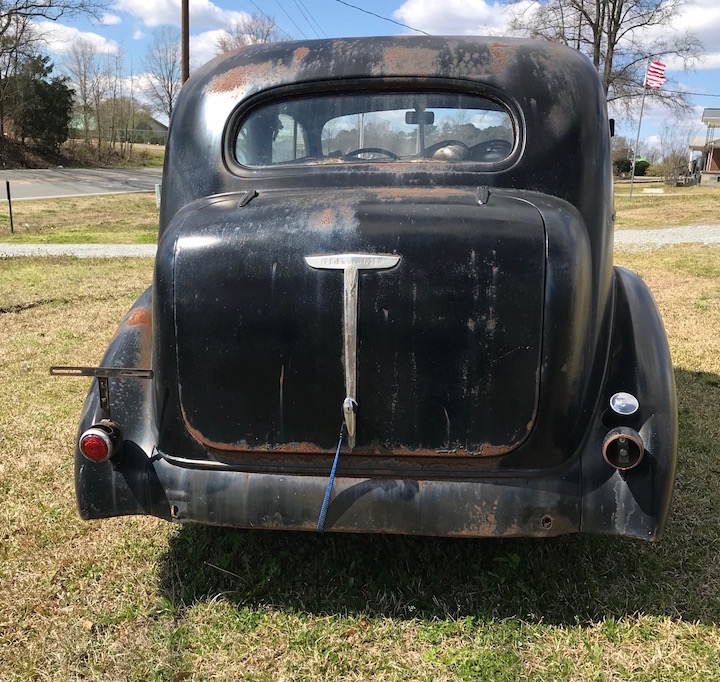
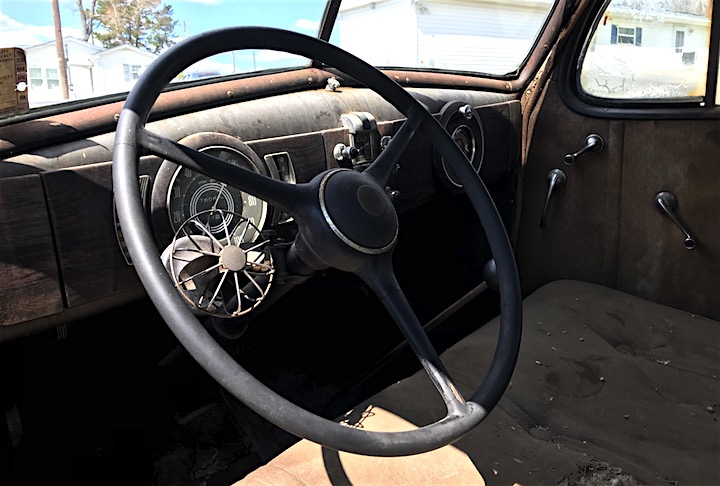
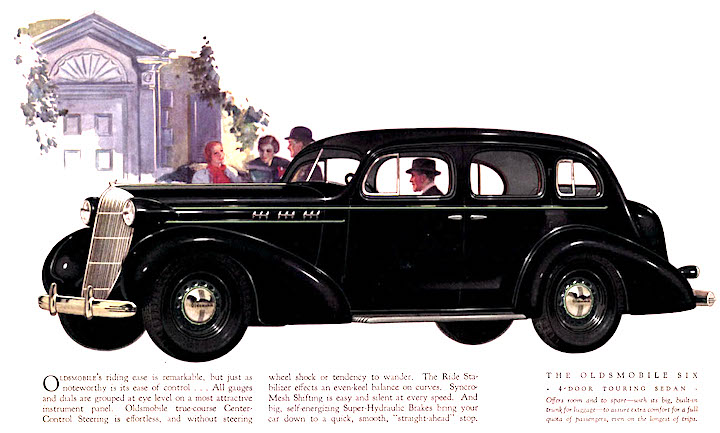
OLDSMOBILE (1936) — This 1936 Oldsmobile found in eastern North Carolina seems to be in restorable condition. For 1936 the Oldsmobile came with two engine options — the Series F with a straight-6-cylinder and the longer Series L with a straight 8. The Oldsmobile was restyled for 1935-36 and again in 1937. (Photos by Jim Meachen)
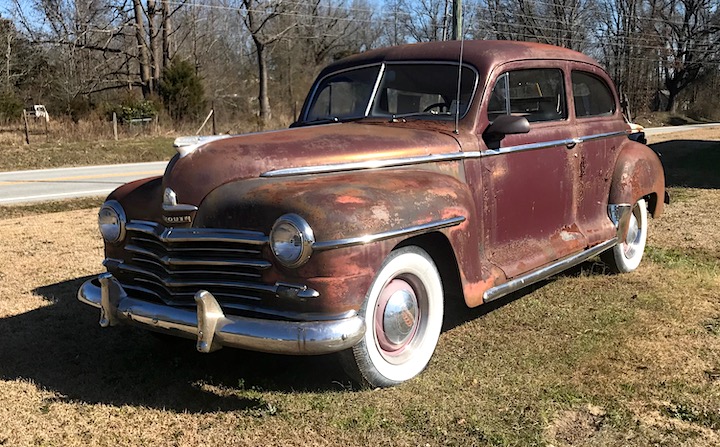
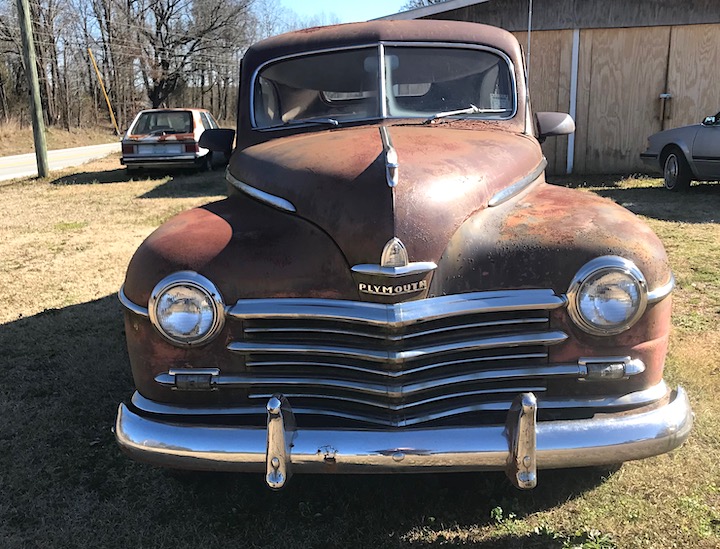
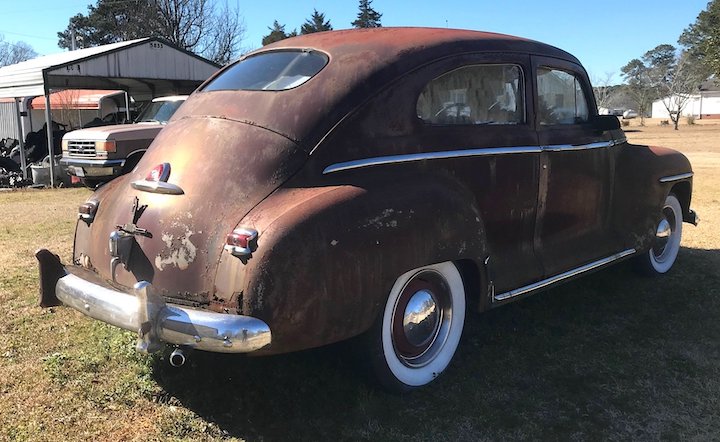
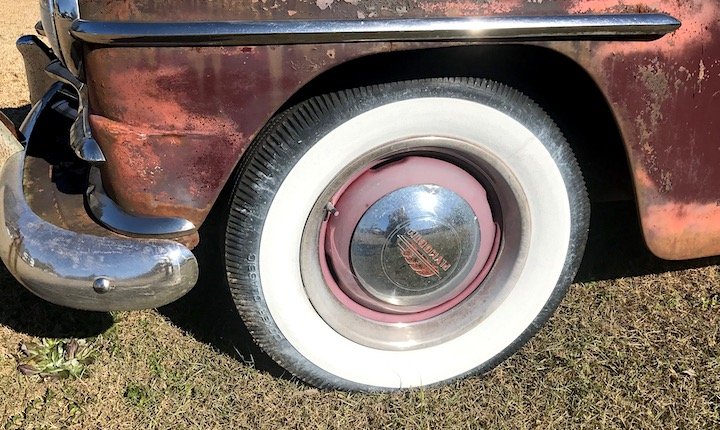
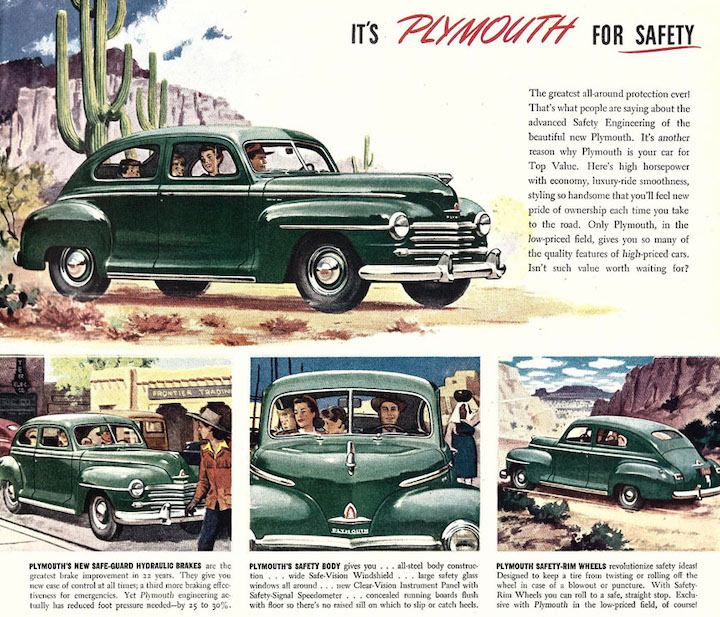
PLYMOUTH (1946-1948) — The Plymouth P15 began production immediately after World War II and was built virtually unchanged from 1946 through 1948, as the low-priced nameplate in the Chrysler Corp. lineup. It was offered in Deluxe and Special Deluxe trim, with manual transmission and an inline 3.6 liter 6 cylinder engine as the only available powertrain. The P15 Plymouth is a large car by today's standards measuring nearly 197 inches in length with a 117-inch wheelbase. In 1946 a Plymouth DeLuxe sedan sold for $1,124. This example was found in Falkland, N.C. (Photos by Jim Meachen)
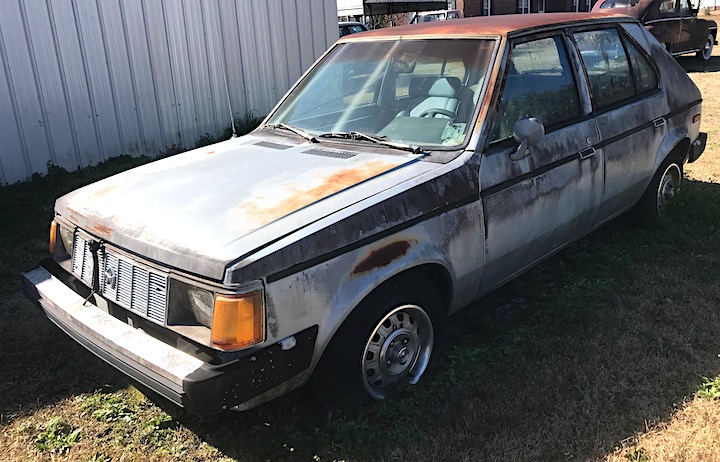
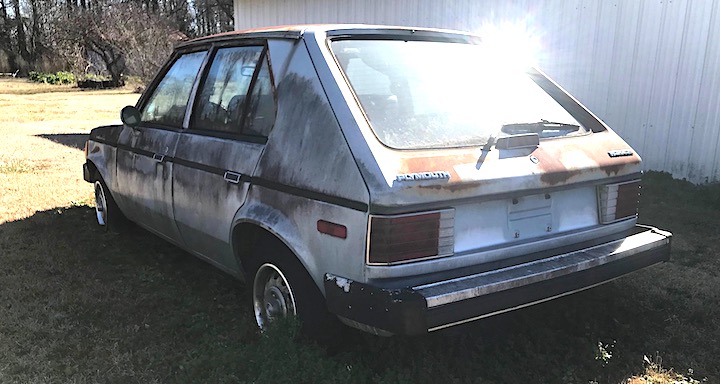
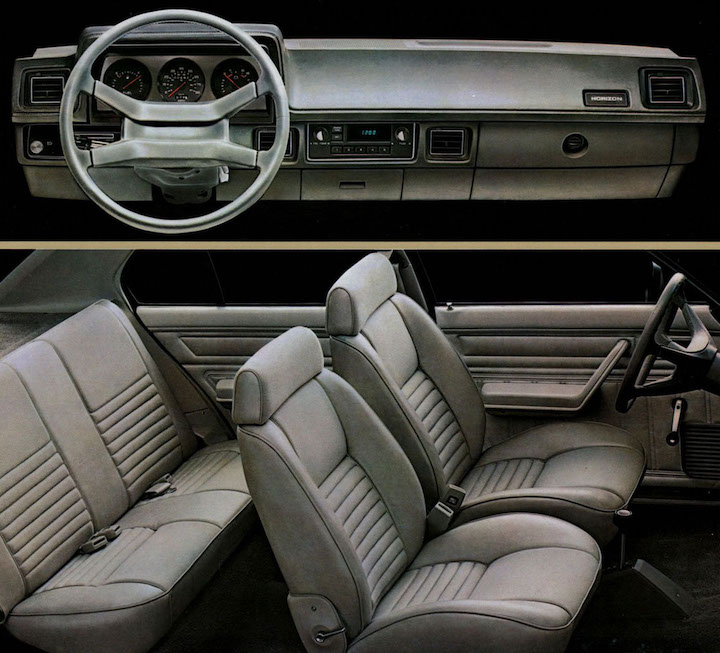
PLYMOUTH (mid 80s) — The Dodge Omni and Plymouth Horizon are subcompact cars that were produced by Chrysler from 1977 to 1990.The Omni and Horizon were reengineered variants of the European Chrysler Horizon and became the first front-wheel-drive economy cars to be built in the US. Marketed for 11 years with very few changes, around 2,500,000 Omnis and Horizons were built with the Plymouth badged versions more popular than the Dodge branded models. This mid-80s Horizon found in eastern North Carolina is perhaps awaiting a new owner for a total restoration. Bottom photo is advertising for the Horizon showing its interior. (Photos by Jim Meachen)
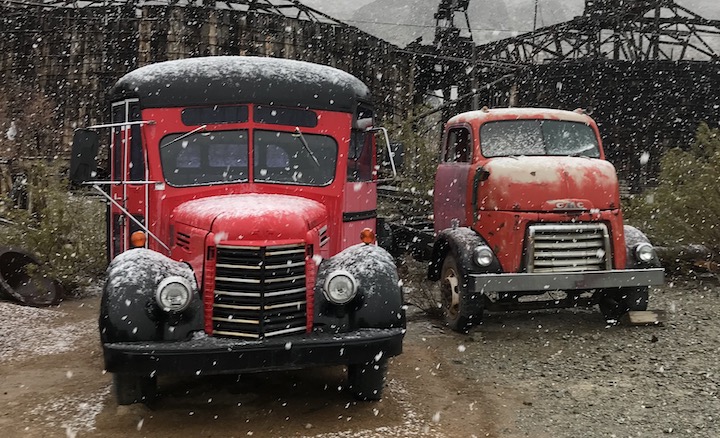
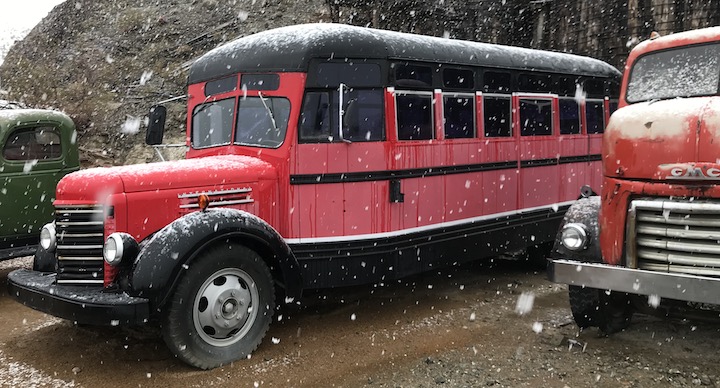
GMC, INTERNATIONAL (late '40s) — A post-WorldWar II International bus lives in retirement next to a late-40s' GMC truck on a snowy day in Nevada. (Photos by Jim Prueter)
HUDSON (1948-1950) — Hudson launched its "step-down" bodies in 1948, which lasted through the 1954 model year. The term step-down referred to Hudson's placement of the passenger compartment down inside the perimeter of the frame; riders stepped down into a floor that was surrounded by the perimeter of the car's frame. This "ready for restoration" 1948-1950 Hudson was found in eastern North Carolina. (Photos by Jim Meachen)
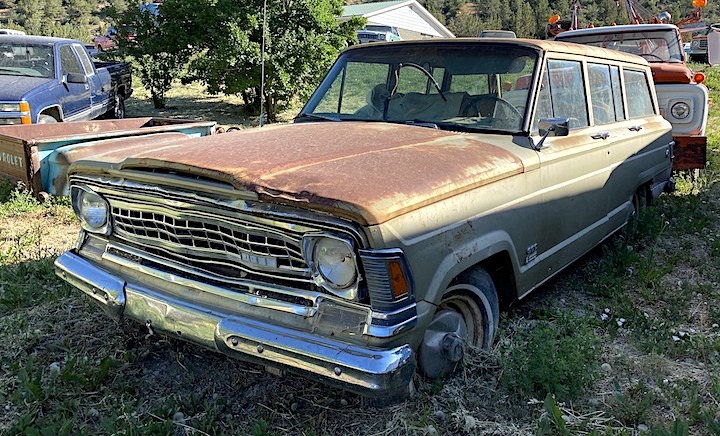
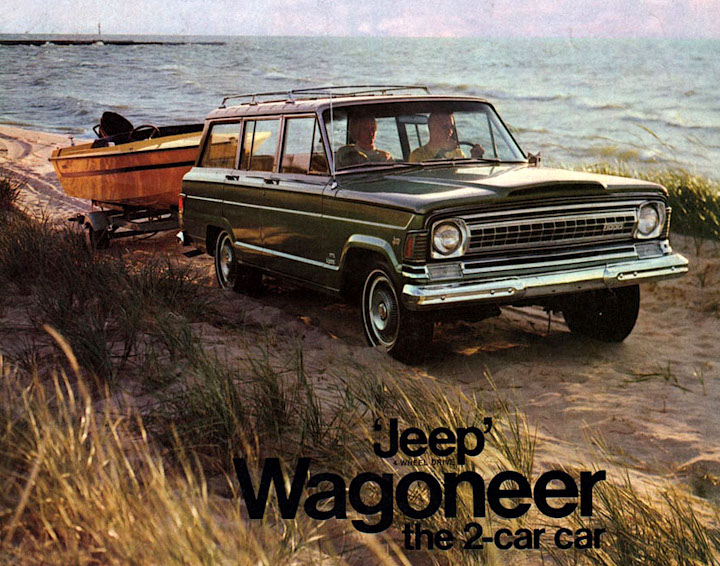
JEEP (1971-73) — The Jeep Wagoneer was built from 1963 through 1991, a go-anywhere 4X4 family station wagon. It became known as the first sport utility vehicle and was sold for 29 years with an almost unchanged body-structure. This early '70s model was found in retirement in Glendale, Utah. Most Wagoneers at the turn of the decade came with a Buick-derived 5.7-liter V-8 making 230 horsepower. (Photo by Jim Prueter)
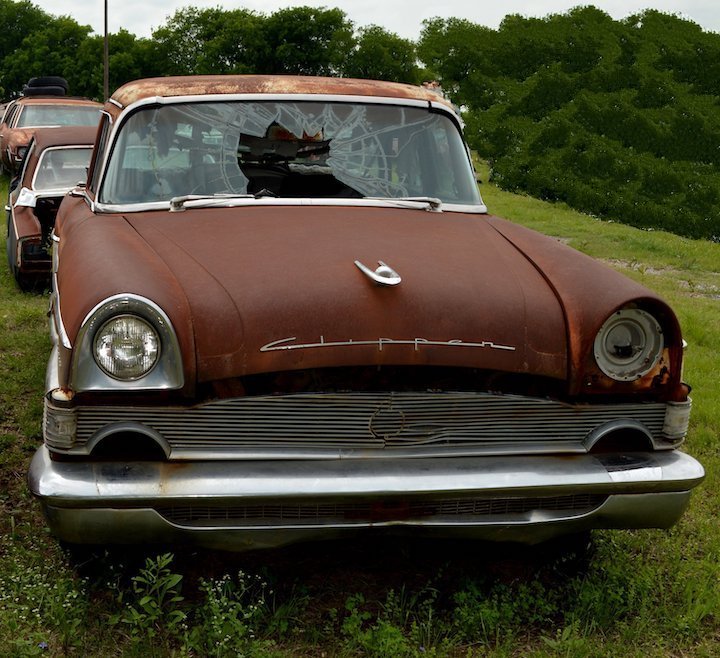
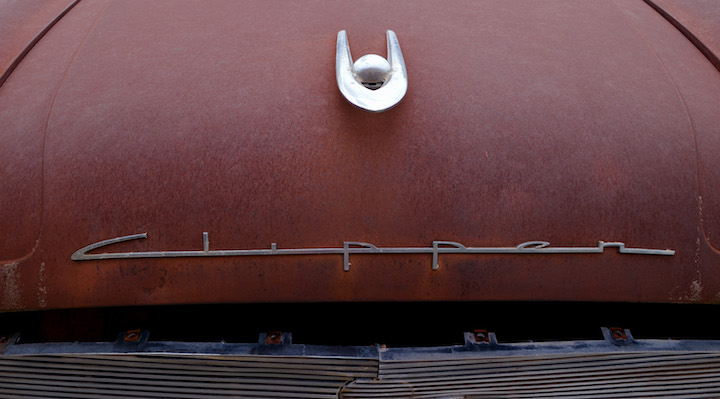
PACKARD (1956) — This 1956 Packard Clipper found in Texas was one of the last Packards built in Detroit. The last Packard rolled off the assembly line in Detroit on June 25, 1956, although some Packard-badged cars were built until 1958 in Indiana by the merged Studebaker-Packard company. The Clipper was built in 1941-1942, 1946-1947 and 1953-1957 as an entry-level vehicle. In 1956 the Clipper was classified as a stand-alone marque. (Photos by Peter Hubbard)
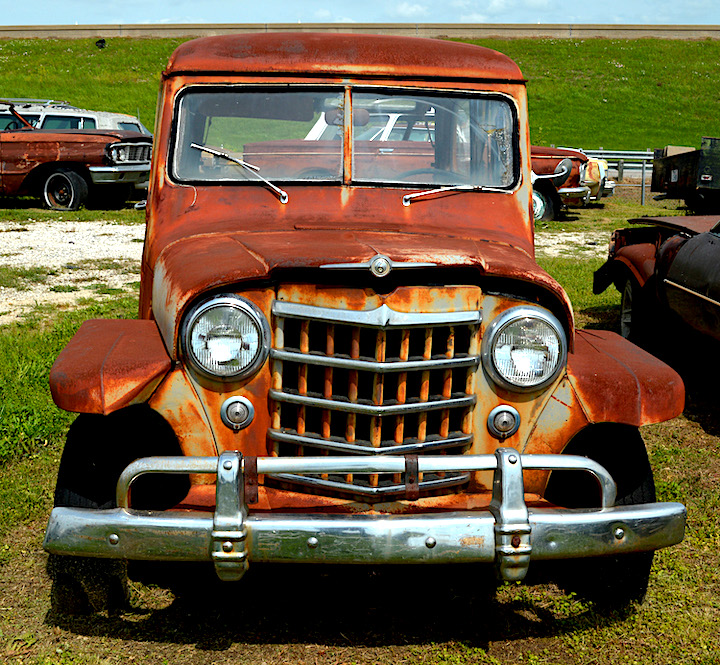
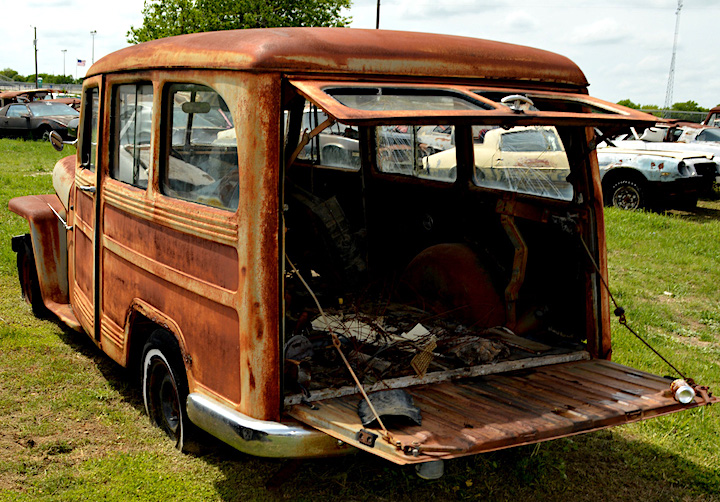
JEEP WILLYS (1954) — This 1954 Willys Jeep station wagon was discovered in a Texas field of old, used-up vehicles. Jeep Willys marketed the first all-steel station wagon designed as a passenger vehicle in 1946. It was built in the U.S. through 1964 with more than 300,000 sold. Its successor was the Jeep Wagoneer. (Photos by Peter Hubbard)
The Jeep Grand Cherokee dates back to 1993 starting life with a 190-horsepower inline 6-cylinder engine and an optional 5.2-liter V-8 making 220 horsepower. It was a sales success with more than 1.6 million copies sold from 1993 through 1998. This mid-90s first-generation Grand Cherokee was found in retirement in a field in southeastern North Carolina . (Photos by Jim Meachen)
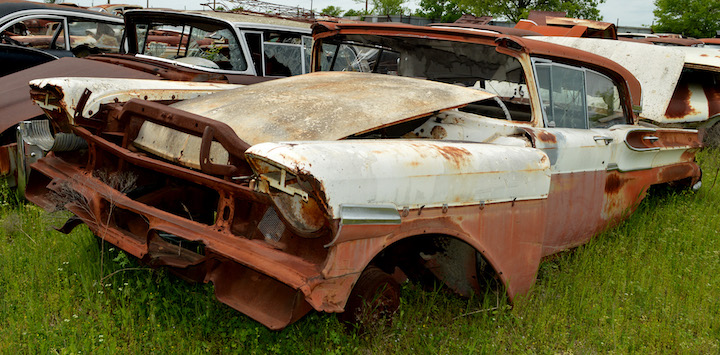
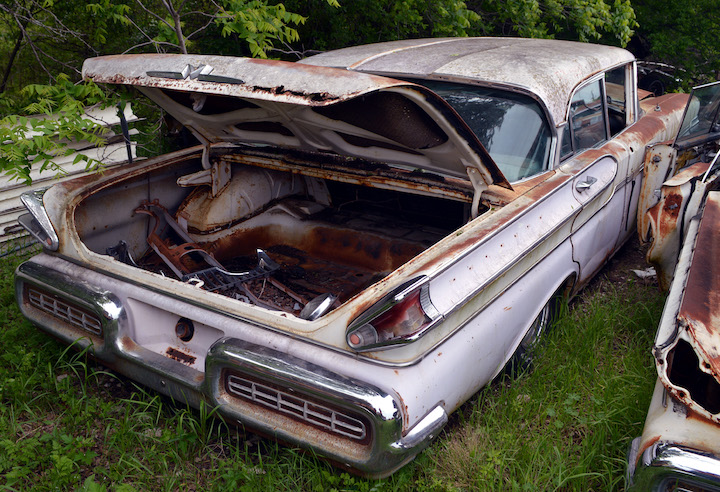
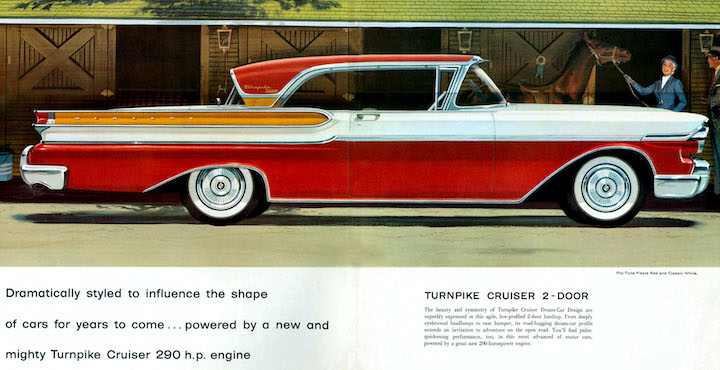
The front of a 1957 Mercury Turnpike Cruiser and the rear of another '57 Mercury are pictured in an old-car salvage yard in Texas. The Turnpike Cruiser was built in 1957 and 1958 in commemoration of the creation of the Interstate Highway System. Unfortunately for Mercury, despite some glowing reviews, the Turnpike Cruiser was a sales flop with only 18,861 sold in 1957. (Photos by Peter Hubbard)
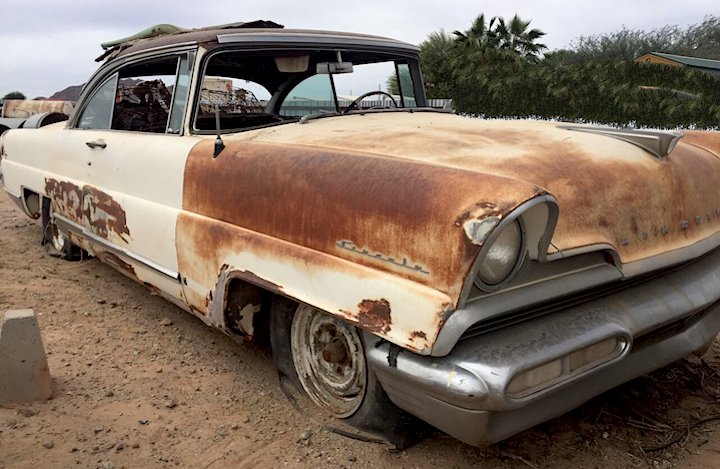
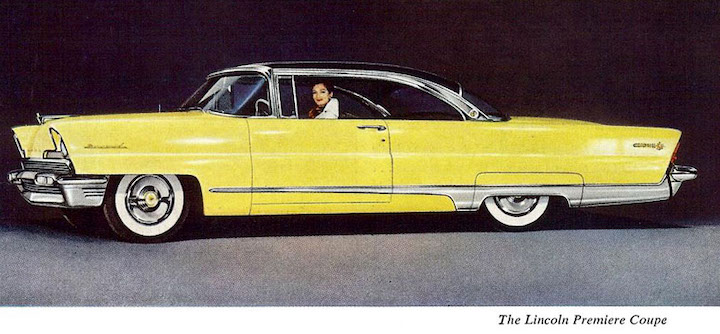
LINCOLN (1956) — Lincoln almost doubled its sales from 1955 to 1956 with the release of its redesigned sedan, coupe and convertible. For us it is one of the best designs to come out of the 1950s. Sales nearly doubled to 50,322, but still trailed Cadillac by nearly 100,000 units. This 1956 relic was found in an Arizona salvage yard. (Photo by Jim Prueter)
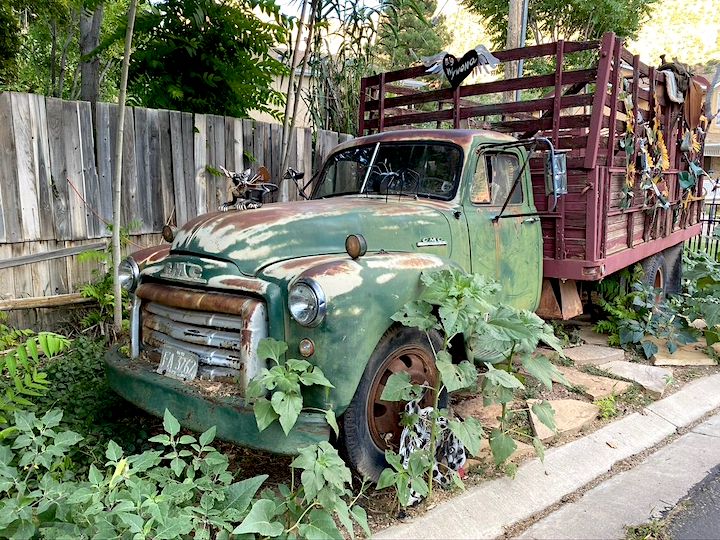
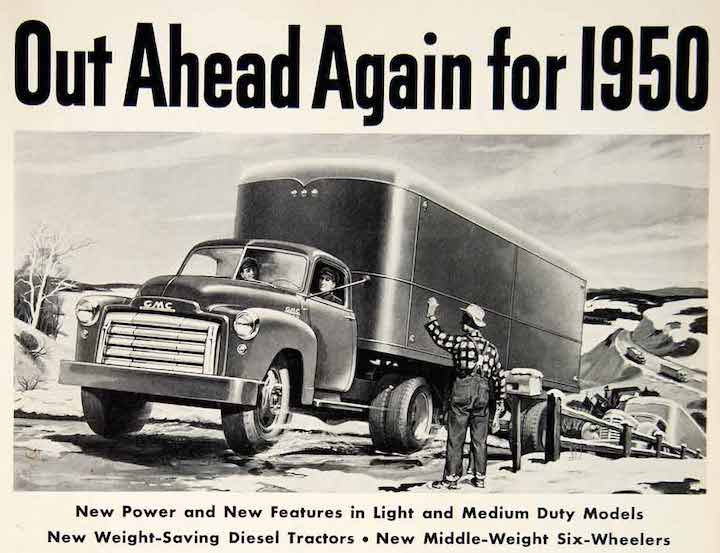
GMC (circa 1947-1953) — This "New Design" medium-duty GMC truck (1947-1953) was found in retirement in Utah. Both the Chevrolet truck (Advance Design) and the GMC were redesigned in 1947 by General Motors. That iteration was built through 1955. The 1947 redesign featured integrated headlamps as well as wider, lower and bolder grilles. (Photo by Jim Prueter)
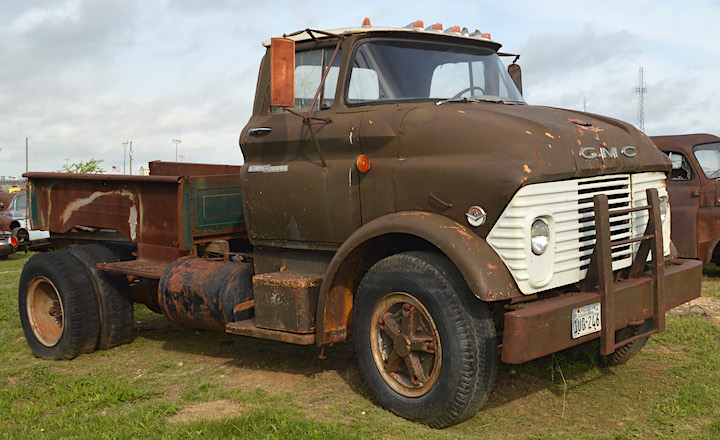
GMC (1960) — This rather unusual-looking 1960 GMC 5500 truck was found in a Texas salvage yard. It looks as if it could be restored if anyone was interested in restoring such a vehicle. (Photo by Peter Hubbard)
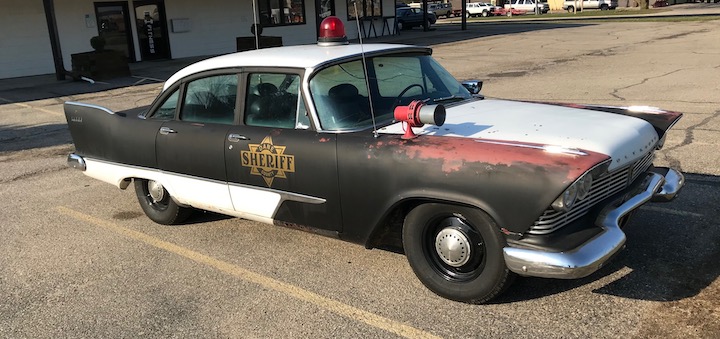
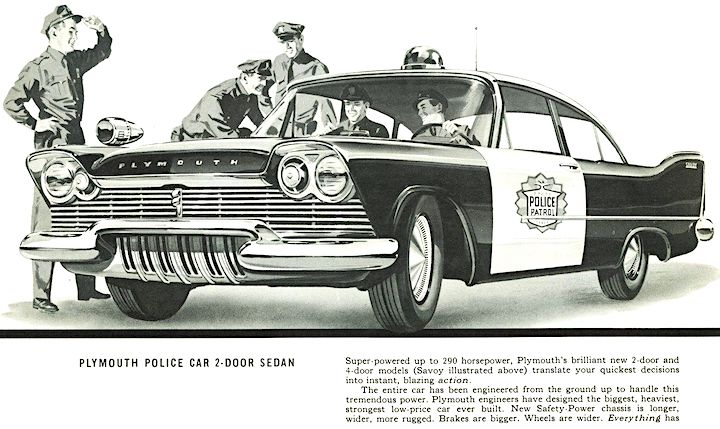
PLYMOUTH (1957) — This 1957 Plymouth Savoy is a police-car survivor in Oregon, Wis. The entry-level Savoy was popular in the late 1950's as a fleet vehicle used by taxicab companies, police departments and other fleet-minded customers where luxury was not a concern. The model was also available to customers who were in the market for a low-cost, economical vehicle with the availability of a V-8 engine and automatic transmission, and the room of a full-size vehicle. (Photo by Ed Meachen)
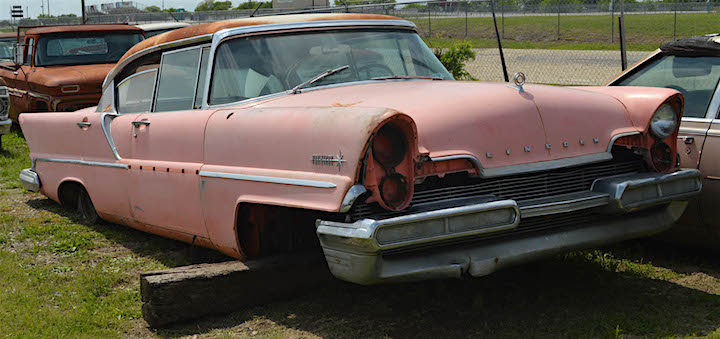
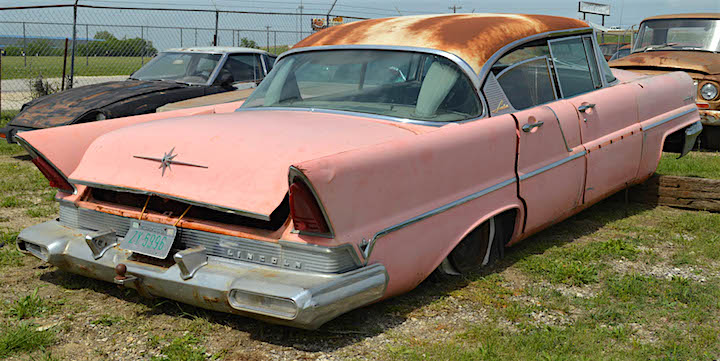
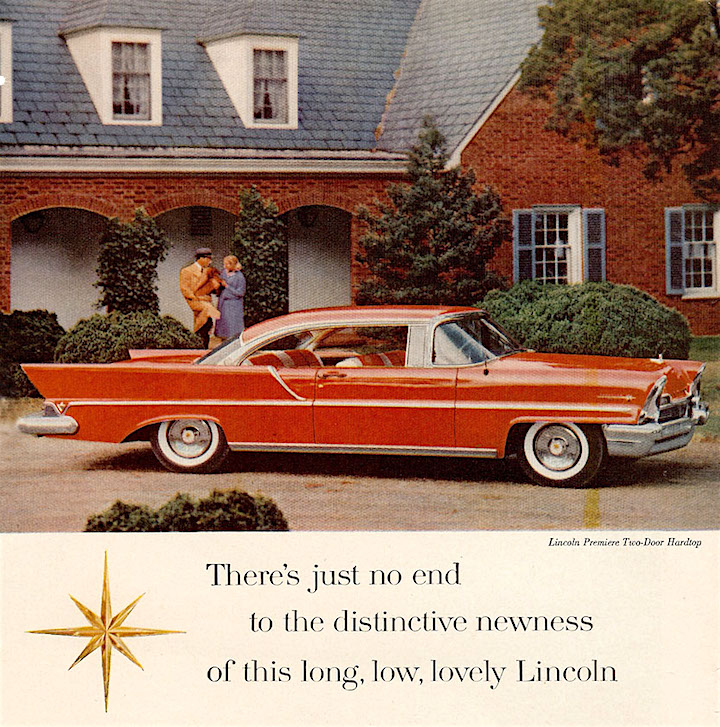
LINCOLN (1957) — We think the 1957 Lincoln was one of the best designed luxury cars of that decade with well-proportioned lines. The abandoned car pictured here is a Premiere model introduced in 1956. It and ran through the 1960 model year as an upscale version of the Lincoln Capri and positioned below the Continental Mark II. It came in two-door and four-door models. (Photos by Peter Hubbard)
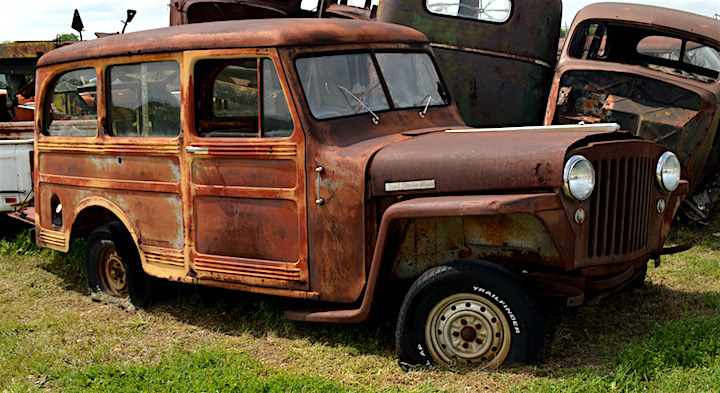
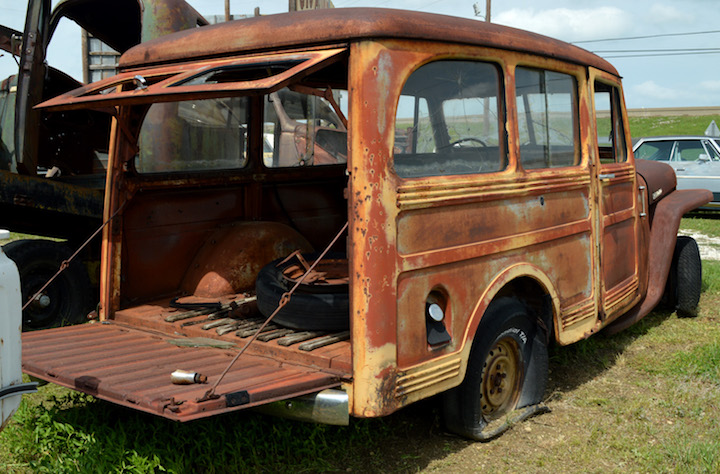
WILLYS JEEP (1950) — Willys Jeeps were popular after World War II, and it made sense to build a Jeep utility wagon. Willys built the Jeep Station Wagon, Utility Wagon and Panel Delivery from 1946 through 1964 — selling over 300,000 in the U.S. They were the first all-steel station wagons designed and built as a passenger vehicle. Some consider it the first sport utility vehicle. This 1950 relic was discovered in Texas. (Photos by Peter Hubbard)
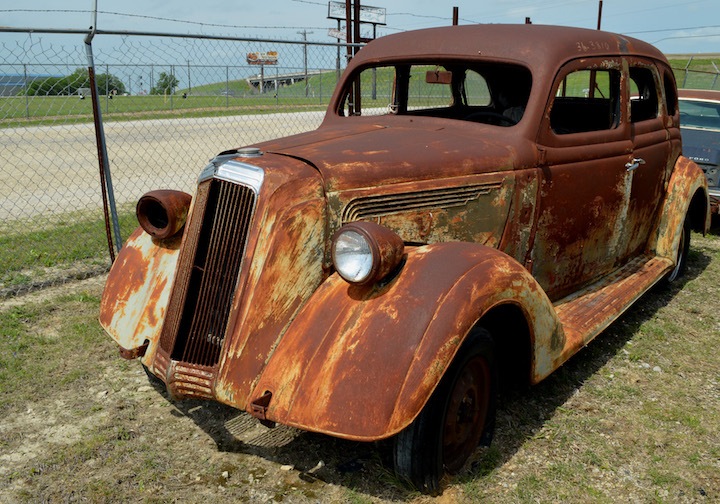
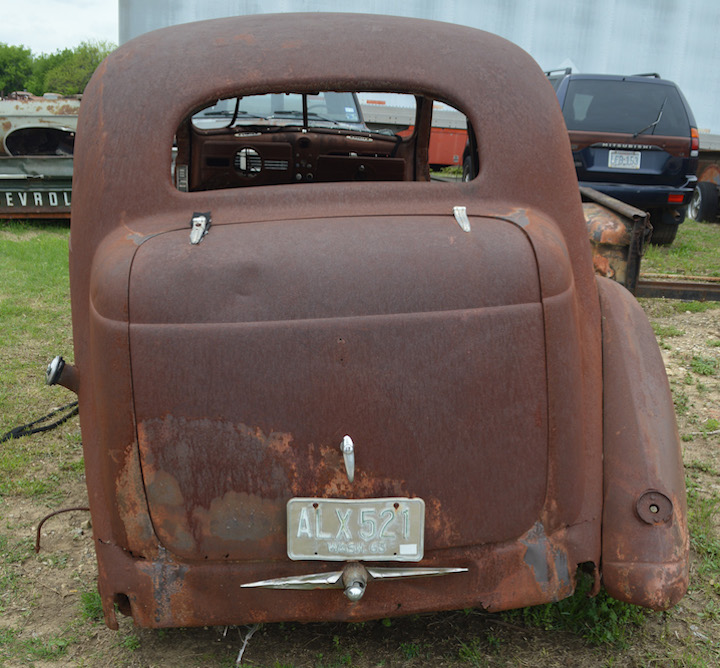
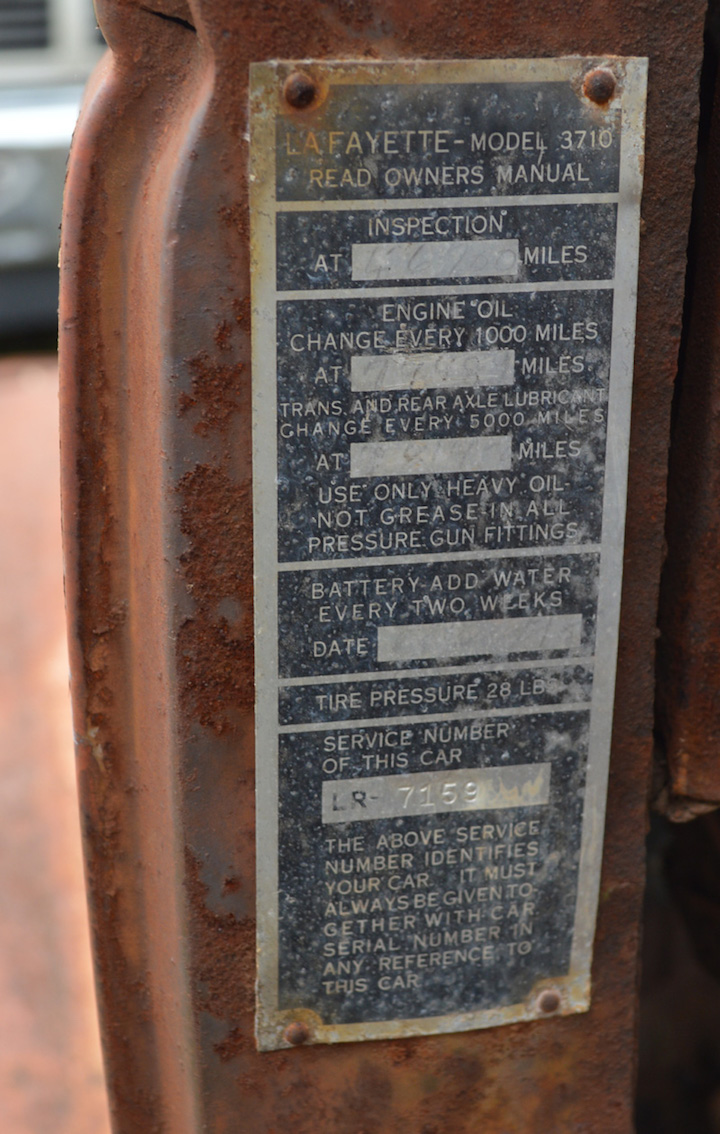
NASH (1936) — The Nash LaFayette was the company's low-priced car in the '1930s developed to bolster sales during the Great Depression years. But the LaFayette had a hard time gaining traction during its first year in 1935 selling only 5,000 copies. Things improved in 1936 when 27,000 units went out the door. It rode on a 113-inch wheelbase with a 75-83 horsepower six cylinder. Retail cost ranged from $585 to $715. This 1936 model, discovered in a Texas salvage yard, is interesting because of a reminder to owners to change the oil every 1,000 miles, and add water to the battery every two weeks. (Photos by Peter Hubbard)
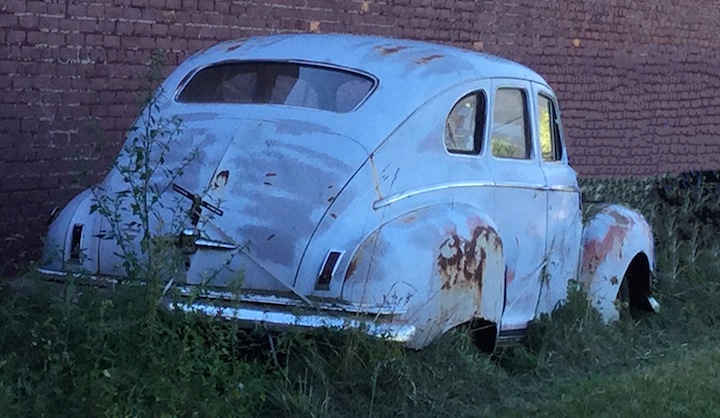
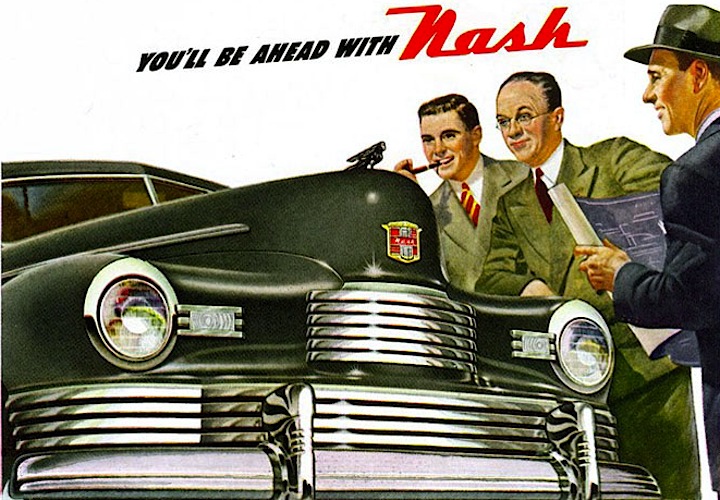
This post-war Nash 600 (circa 1946) was found resting safely behind a fence next to a building in the Detroit area. The Nash 600 is credited with being the first mass-produced American automobile using unitized body/frame construction techniques in which the car body and the frame are welded as one unit, rather than the more traditional body-on-frame. Built from 1941-1949, the "600" name comes from the car's ability to go 600 miles on one tank of gas. An advertisement for the '46 proclaimes "The new Nash 600 takes you an amazing 25 to 30 miles on a gallon of gasoline at moderate highway speeds — 500 to 600 miles on a tankful." (Photo by Chris Sawyer)
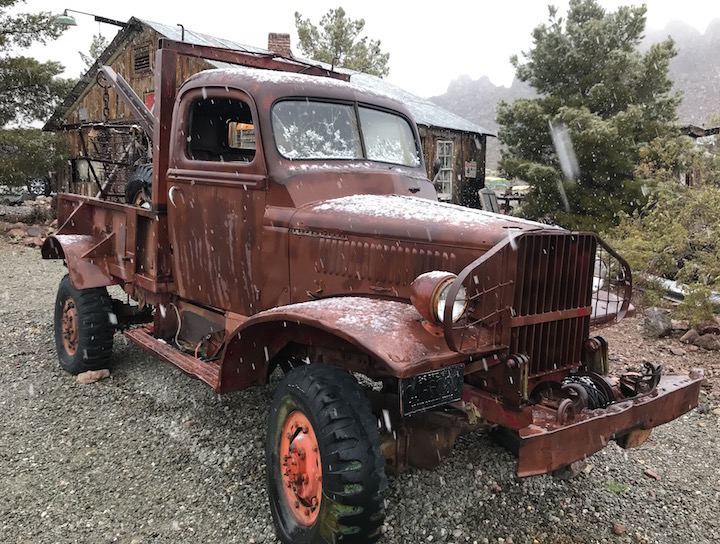
INTERNATIONAL (1930s) — This International tow truck from the 1930s — complete with some good-looking tires — was found in Nevada. International trucks have been built since 1914. C and D Series trucks were built in the 1930s with inline 4-cylinder and 6-cylinder engines with horsepower ranging from 33 to 120 hp. (Photo by Jim Prueter)
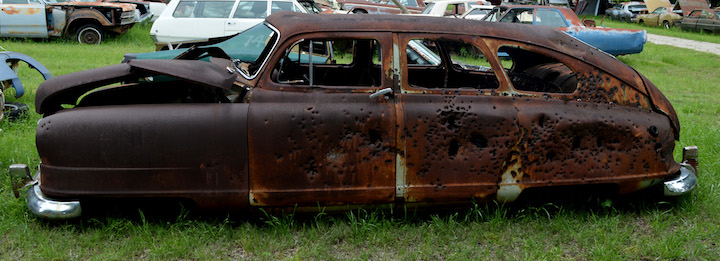
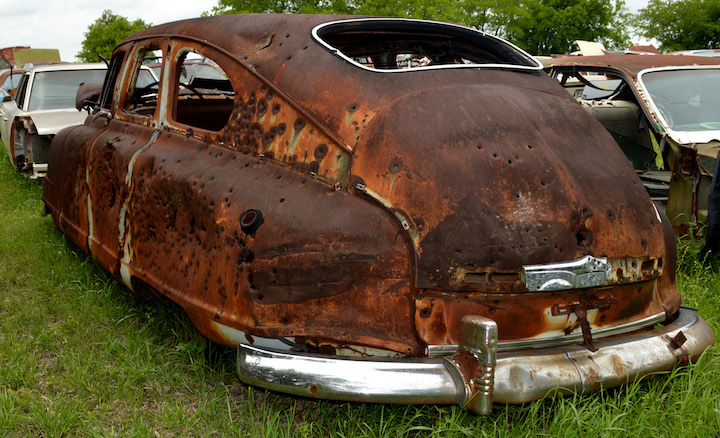
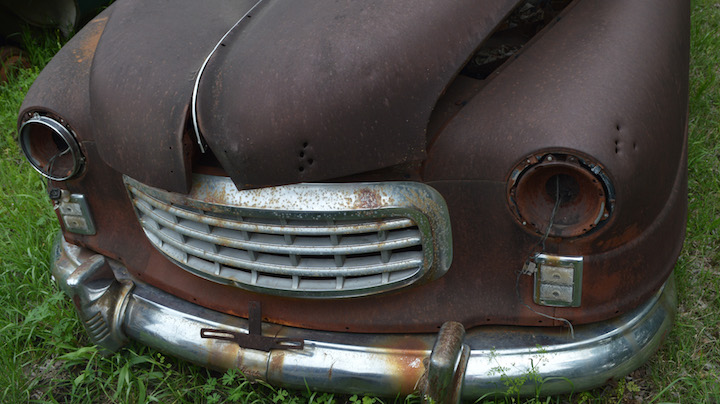
NASH (1950) — If we didn't know better we'd think this might have been the Bonnie and Clyde car. This used up bullet-ridden 1950 Nash Statesman must have been used for target practice. The radically restyled 1949-1951 Nash was called the Airflyte. Pundits quickly dubbed it the "bathtub" Nash. During the three years of the Airflyte, Nash increased sales annually from 110,00 in 1948 to 205,307 in 1951. (Photos by Peter Hubbard)
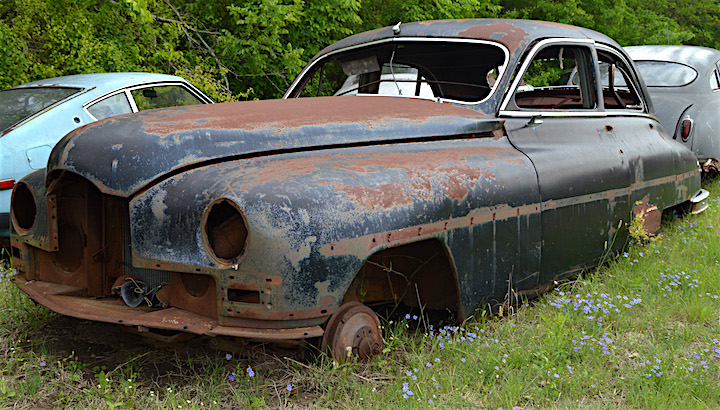
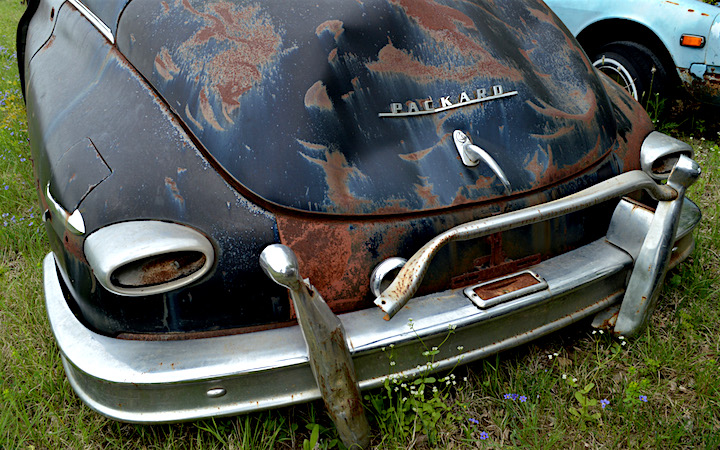
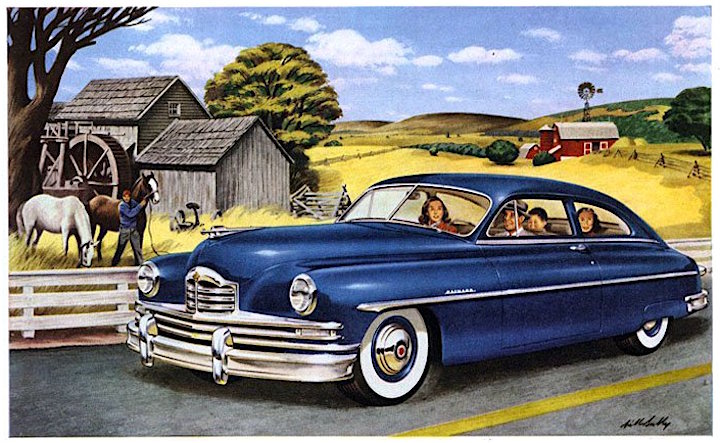
This hulk of a 1950 Packard was found in a Texas salvage yard. The 1948–1950 Packard styling was polarizing. To some it was sleek and blended classic with modern; others nicknamed it the "pregnant elephant." Perhaps the styling fell out of favor between 1949 when 116,955 copies were sold and 1950 when sales tumbled to just 42,627. (Photos by Peter Hubbard)
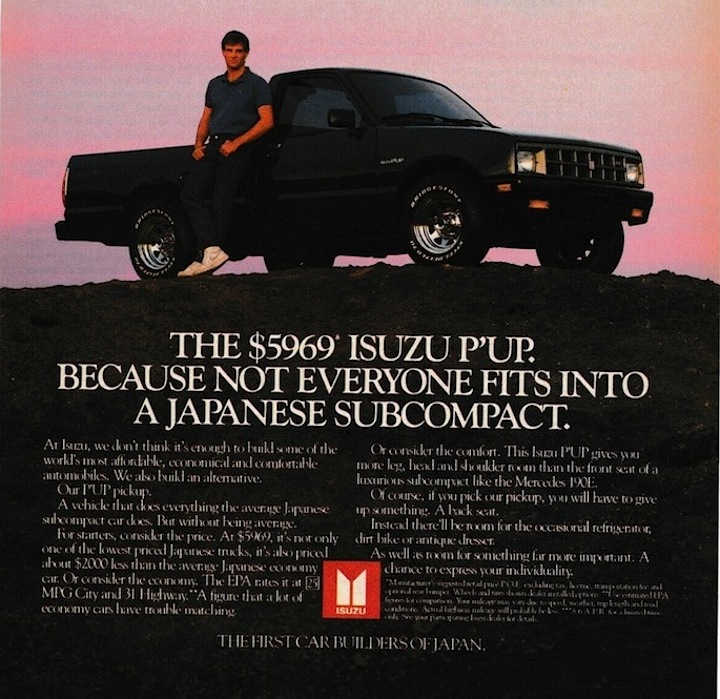
ISUZU (circa 1980s) — In 1981 the Isuzu P'Up was the first Japanese Isuzu sold in the U.S. under its own name. Isuzu sold small pickups in the U.S. starting in 1972, but through General Motors. The Chevrolet LUV was the first. The small P'Up was built through 1988. This example was spotted in North Carolina. (Photo by Ralph Gable)
PONTIAC — This circa 1999-2005 Pontiac Grand Am GT has already been put out to pasture in eastern N.C. despite its relatively young age. The compact-sized car came with a choice of three engines — 2.2-liter 4-cylinder, 2.4-liter twin cam four, and a 175-horsepower 3.4-liter V-6. The V-6-powered GT did a 0-to-60 in 7.7 seconds according to Car and Driver. (Photos by Jim Meachen)
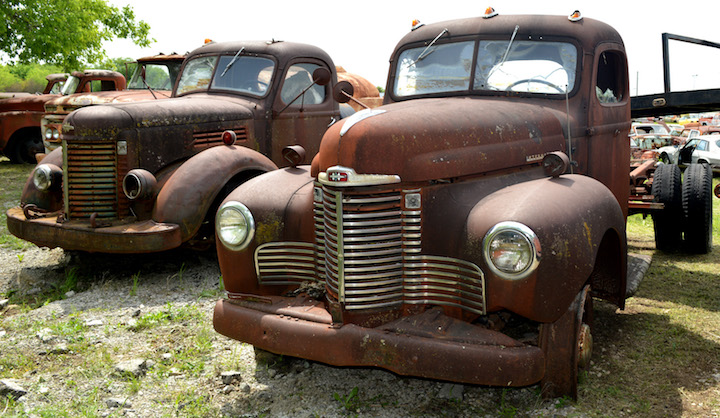
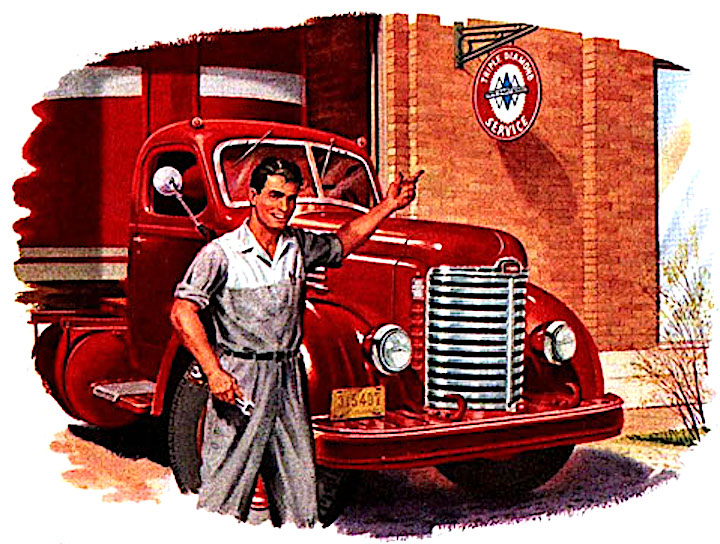
INTERNATIONAL (1948-1949) — A 1949 International truck (left) shares time with a 1948 model in a Texas automotive graveyard. International introduced a new generation of trucks in 1949, the first remake since before World War II. The 1949 truck can be determined by its new grille design. (Photo by Peter Hubbard)
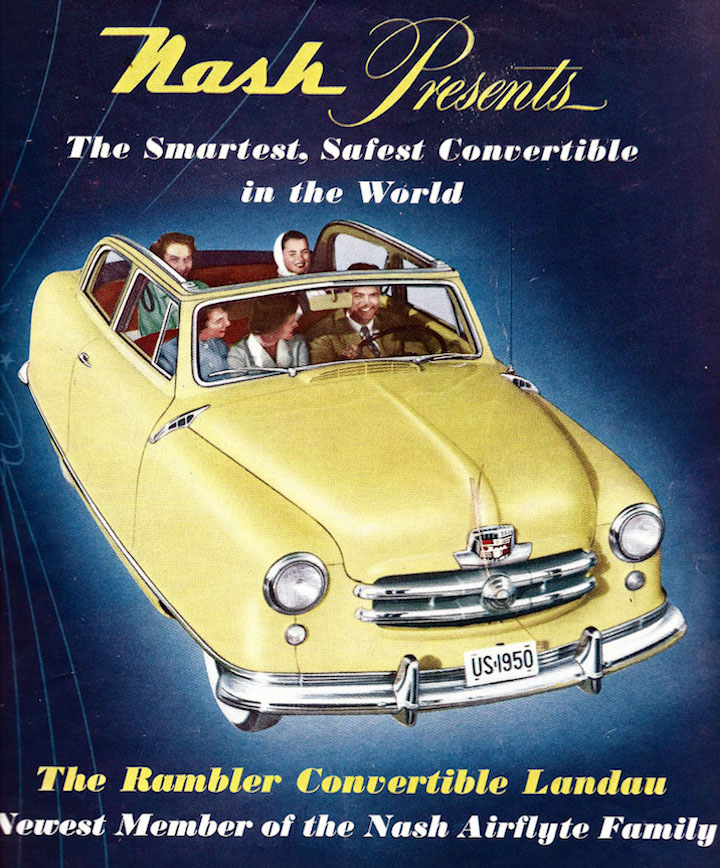
NASH (1950-55) — With the introduction of the Rambler in 1950, Nash established a new segment — the first successful modern American compact car. The original Rambler, produced from 1950 through 1955, came in sedan, station wagon, hardtop and convertible formats. This Nash "Country Club" 2-door hardtop was found in an automobile graveyard along Route 66. (Photo by Jim Prueter)
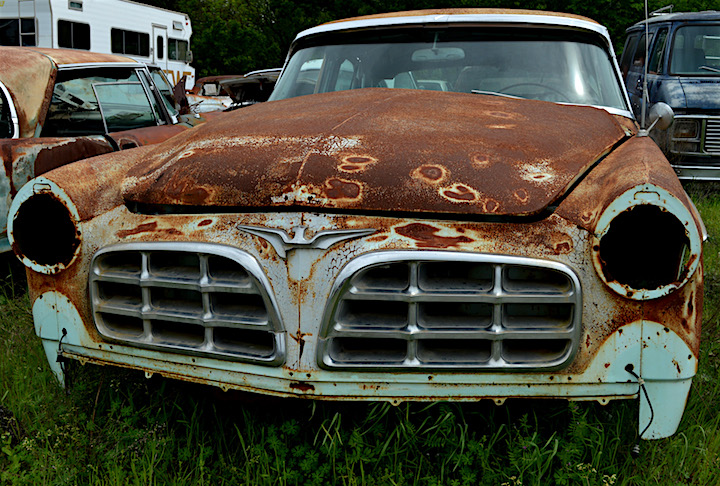
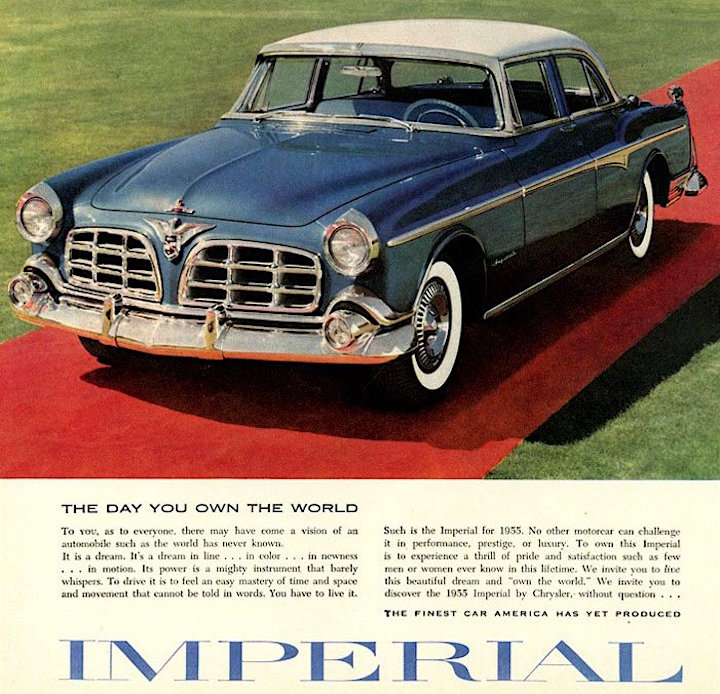
IMPERIAL BY CHRYSLER (1955) — To better compete with luxury brands Cadillac and Lincoln, Chrysler made the Imperial model a stand-alone brand in 1955. The Imperial's wheelbase was stretched four inches over the big Chryslers and all models came with a 5.4-liter FirePower V-8 engine making 250 horsepower mated to a two-speed PowerFlite automatic transmission. An option was air conditioning for $535. This 1955 model was found in a auto graveyard near Denton, Texas. (Photo by Peter Hubbard)
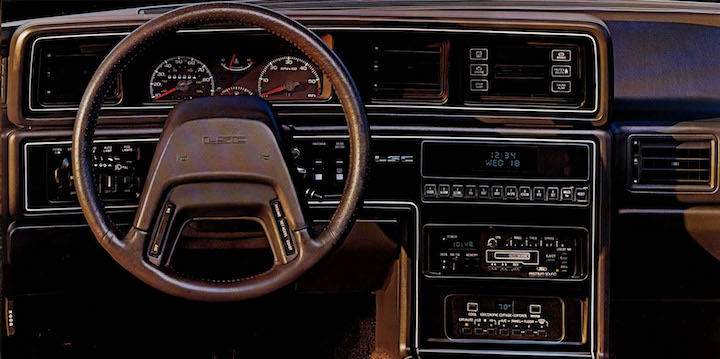
LINCOLN (1986-92) — This second-generation Lincoln Mark VII (1986-1992) was found languishing in an automobile burial ground in eastern North Carolina. When it hit the market in 1984 it was called the Continental Mark VII, but the Continental name was dropped with a redesign in 1986. More than 190,000 units of the Mark VII were built before production ended on April 22, 1992. Photo directly above is from a 1988 Lincoln brochure. (Photos by Jim Meachen)
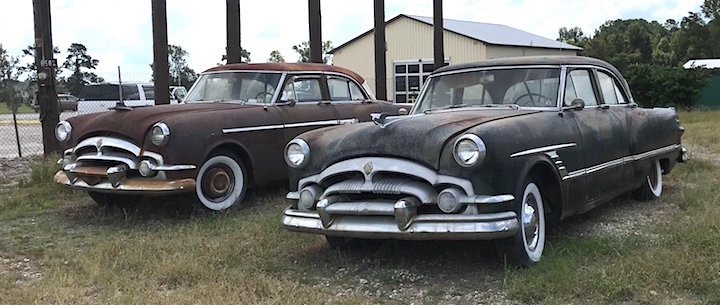
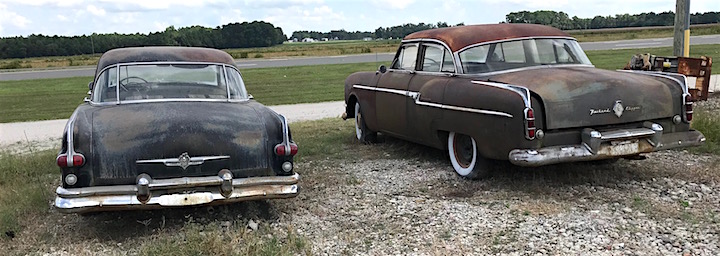
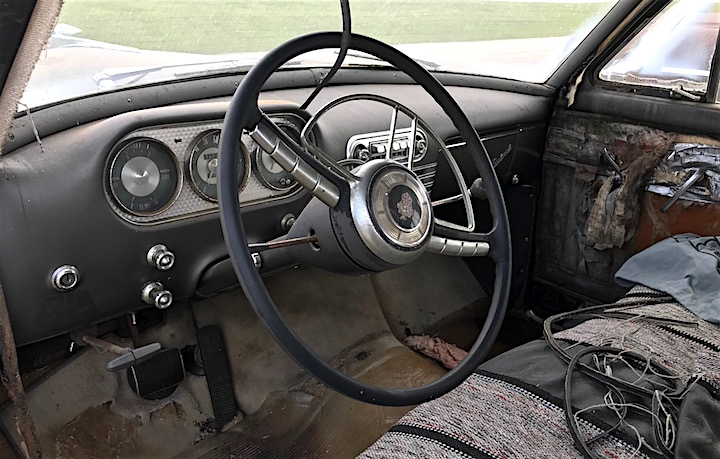

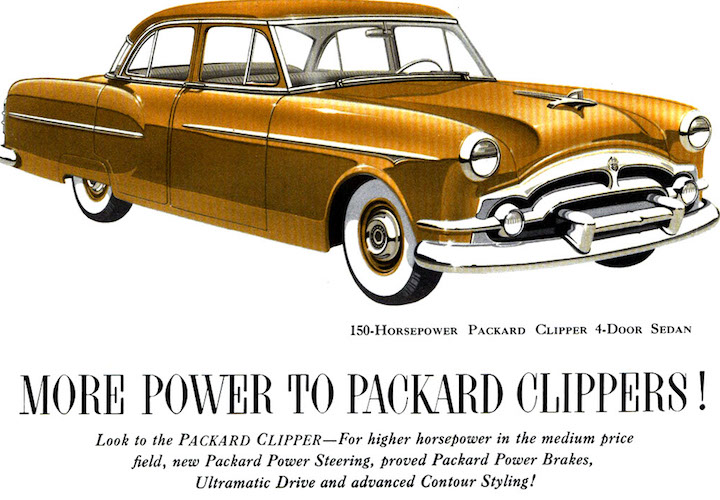
PACKARD (1953) — Packard was completely redesigned for the 1951 model year and remained mostly the same, but with styling tweaks, through the 1954 model year. Packard dropped the number configurations for models is 1953 and went to Clipper (base), Cavalier (mid-level) and Patrician (top). A 1953 Clipper, left, and a 1953 Cavalier, right, watch traffic go by on an eastern North Carolina highway. Packard sold 90,252 cars in 1953, which turned out to be its best-selling year before the brand was terminated in1958 after merging with Studebaker. (Photos by Jim Meachen)
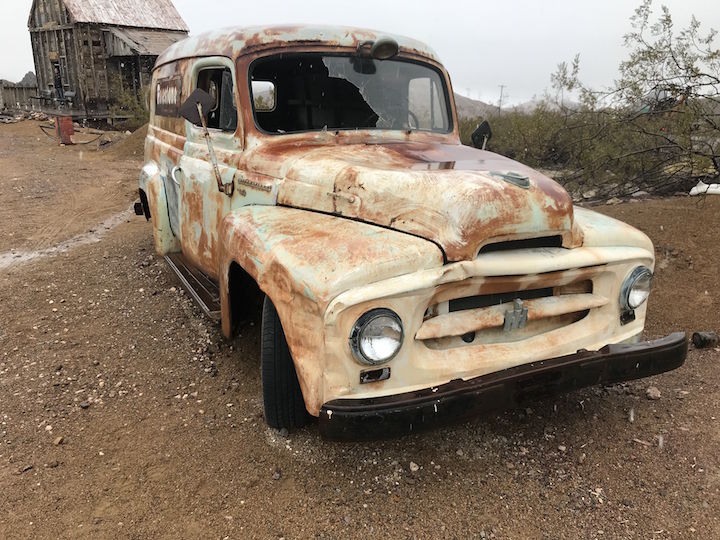
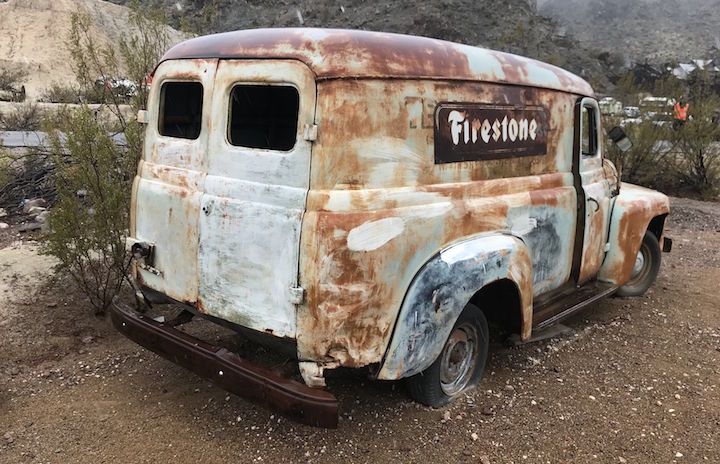
INTERNATIONAL HARVESTER (1953) — International Harvester introduced the R Series line of panel trucks in 1953, the passenger version called the Travelall to do battle with the popular Chevrolet Suburban. In today's parlance it would be known as a full-sized SUV. International work vans were built on the same platform with the same dimensions and powered by an inline six-cylinder engine making 100 horsepower. This 1953 work van, found in Nevada, was apparently employed by a Firestone dealership. (Photos by Jim Prueter)
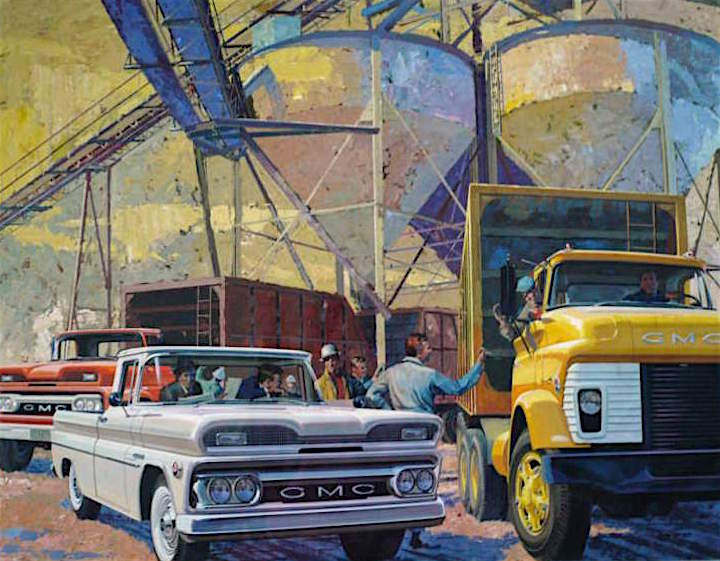
GMC (1960-61) — This very restorable 1960/61 GMC pickup was found in Arizona together with a friend — can you spot the "guard cat?" GMC pickups were totally redesigned in 1960 featuring for the first time a full-width hood, and an expressive "jet pod" grille. The grille design was used in 1960 and 1961 before being altered slightly in 1962. The GMC came with a choice of five V-6 engines with horsepower ranging from 150 to 205. (Photo by Jim Prueter)
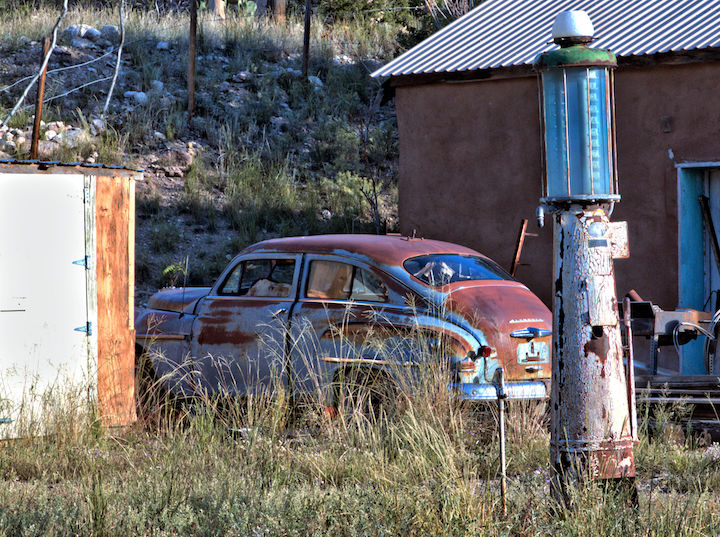
PLYMOUTH (circa 1950) — Known in the 1950s as one of the "low-priced three" along with Ford and Chevrolet, Plymouth enjoyed solid sales. For instance, in 1950 Plymouth was the nation's third-best seller with 610,954 units sold. Chevrolet (1.5 million) and Ford (1.2 million) were first and second respectively. This circa 1950 two-door coupe is part of an idyllic scene in a New Mexico ghost town. (Photo by Jerry Brown)
INTERNATIONAL (mid 50s) — This mid 1950s International R Series dump truck was discovered in retirement in a field of weeds in Randolph, Wyo. Most of the R Series trucks featured an inline 6-cylinder engine with a Cummins diesel as optional. Three, four and five speed transmissions were available. (Photos by Jim Meachen)
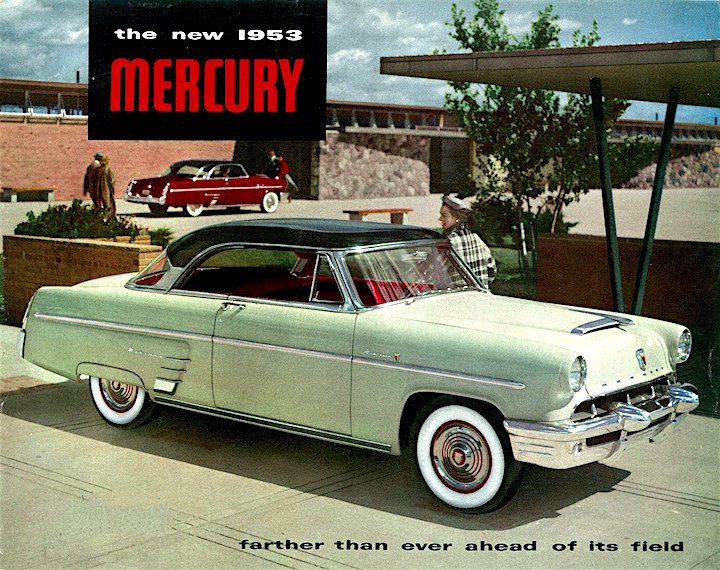
MERCURY (1952/53) — The Mercury brand, designed to bridge the price gap between Ford and Lincoln, was redesigned for 1952 and became essentially two vehicles — the base Custom and the higher-priced Monterey. The Mercury continued to be powered by Ford's flathead V-8 in 1952 and 53. This "hippie" copy of a 1952/53 Mercury was found near Hanksville, Utah. (Photos by Jim Meachen)
This circa 1980 Mercedes-Benz W123 was discovered abandoned in eastern North Carolina. The W123, considered one of the best Mercedes sedans ever built, was manufactured from 1976 through 1985. This particular model is outfitted with the 240D diesel engine. The 2.4-liter 4-cylinder made a grand total of 71 horsepower and 101 pound-feet of torque. It was noted for two things — its indestructible nature and its turtle-like acceleration. In fact, there are dozens of YouTube videos depicting how fast owners could navigate from 0-to-60. The average time being between 20 and 25 seconds. One guy proclaimed he had run out of road before hitting 60. The television ad above for the 1982 model rather disingenuously depicts the 240D as a performance behemoth. (Photos by Jim Meachen)
NASH (1946-48) — Many old cars decorate the 2,300 miles of Route 66 and this circa 1946-1948 Nash is a good example. This two-door coupe was found in Baxter Springs, Kan., advertising a bail bondsman. Nash enjoyed good sales after World War II building 94,000 cars in 1946, 101,000 in 1947 and 110,000 in 1948. (Photos by Jim Meachen)
The Oldsmobile Cutlass Ciera is a mid-size car manufactured and marketed for model years 1982-1996. It shared the front-wheel drive A platform with the similar Buick Century, Pontiac 6000 and Chevrolet Celebrity. The Cutlass Ciera shared the Cutlass nameplate with the smaller Cutlass Calais and the larger Cutlass Supreme. This late 1980s copy was found abandoned in eastern North Carolina. (Photos by Jim Meachen)
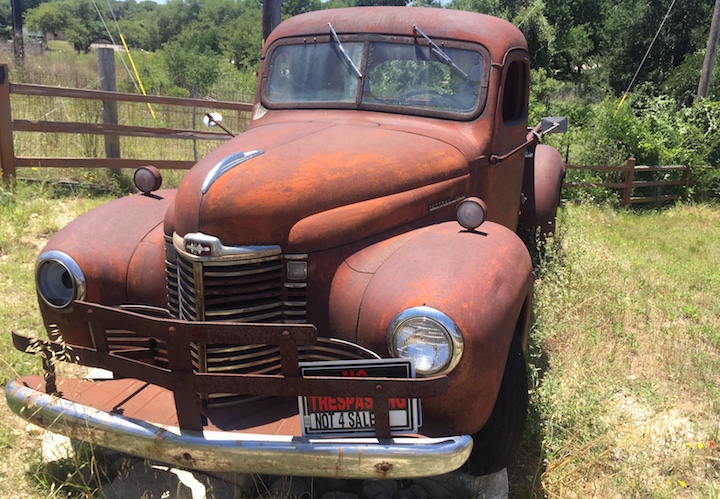
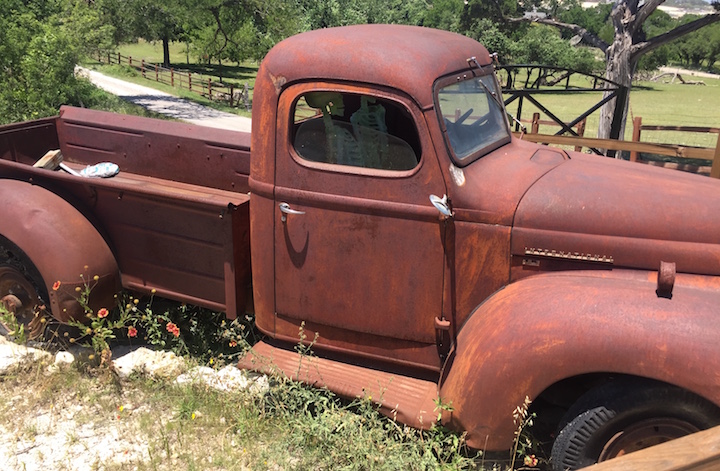
This circa 1947-1949 International pickup was found in an abandoned, but restorable state by Jim Prueter. Following World War II International truck production began with a slightly new design in 1947 highlighted by the barrel-shaped grille sprouting little "wings." The emblem on the side shows that this truck was a heavy duty KB-3 model. In that three-year period International produced 122,000 KB designated trucks. (Photos by Jim Prueter)
GMC (1939) — General Motors streamlined its truck design in 1939 and reconfigured its 6-cylinder engines. This 1939 medium duty GMC truck hauled Sinclair gas through the 1940s near Paris Springs Junction, Mo. It's now an attraction for sightseers along old Route 66 in southwestern Missouri. (Photo by Jim Meachen)
This 1969 Pontiac GTO was found in eastern North Carolina in a state of disrepair. The GTO was built from 1964 through 1974 and helped cement the muscle car generation with a variety of high-horsepower V-8 engines. The second-generation began in 1968 with a slightly fastback design. The door vent windows were eliminated in 1969 helping differentiate the 1968 from the '69. There were 72,287 GTOs built for the '69 model year. (Photos by Jim Meachen)
GMC (1990s) — This 1990s GMC Sonoma compact pickup truck was found languishing in the weeds in eastern North Carolina with a load of junk in its bed. The Sonoma was the GMC version of the Chevrolet S-10, built from 1981 through 2004 in North America. (Photos by Jim Meachen)
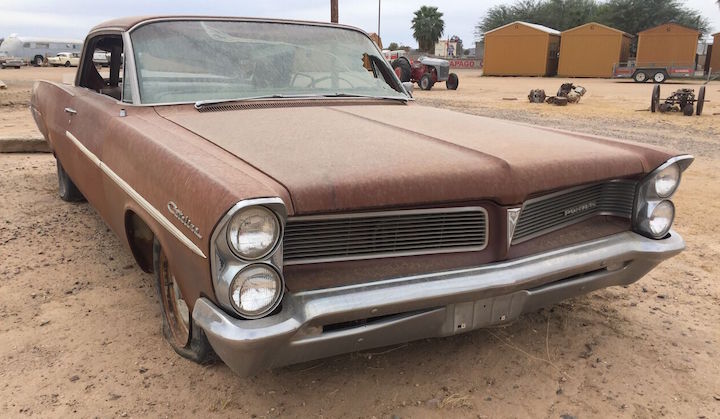
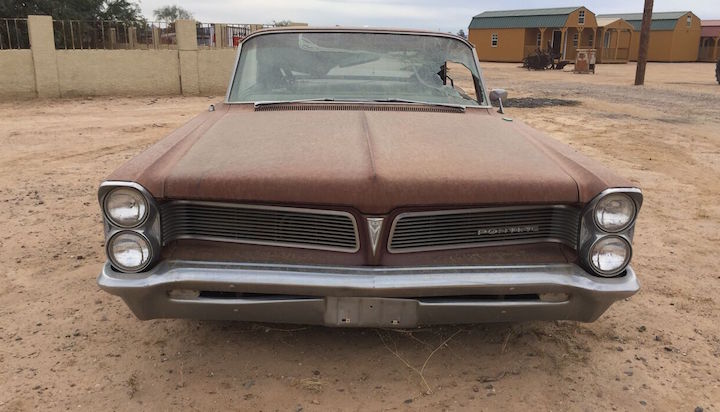
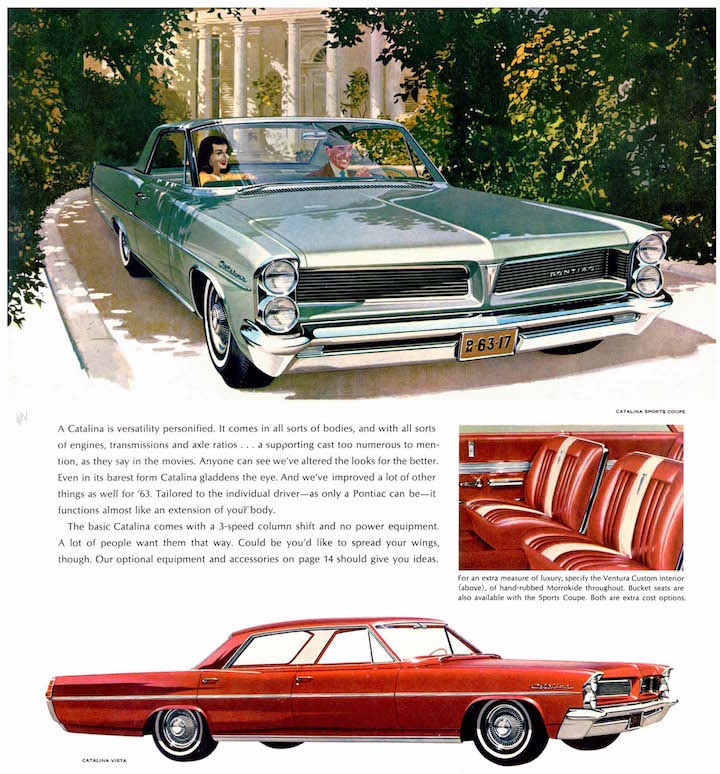
PONTIAC (1963) A reworked full-sized Pontiac Catalina came to market in 1959 and was completely redesigned in 1961 kicking off the second-generation, which was built through 1964. This 1963 model was recently discovered in Arizona. The '63 model was refreshed with cleaner, squared-off body line and vertical headlights that flank a split grille. V-8 engine offerings came with 338, 353 and 370 horsepower. (Photos by Jim Prueter)
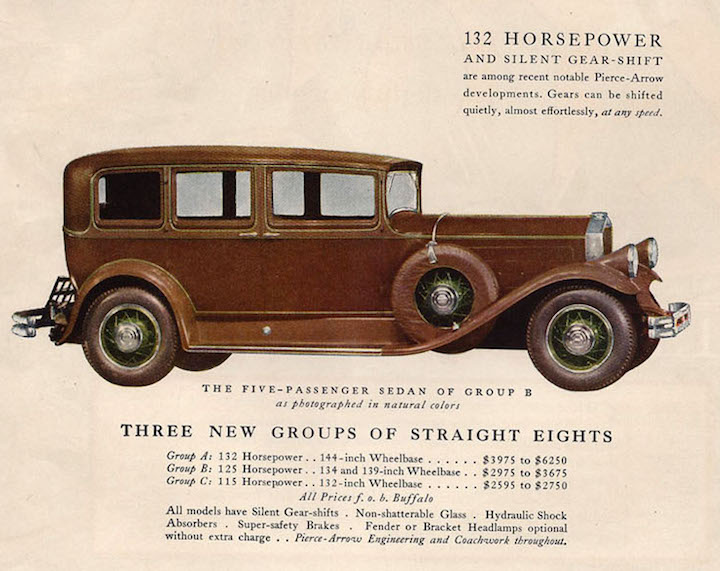
PIERCE-ARROW (1929-30) — This 1929 or '30 Pierce-Arrow was discovered sitting in front of an old Phillips 66 gas station on Route 66 in Chandler, Okla. The Pierce Arrow was redesigned in 1929 to include headlights molded into the front fenders. It came in four wheelbases with a choice of three straight eight engines with horsepower ratings from 115 to 132. Prices ranged from $2,595 to $6,250, a princely sum during the first years of the Great Depression. (Photo by Jim Meachen)
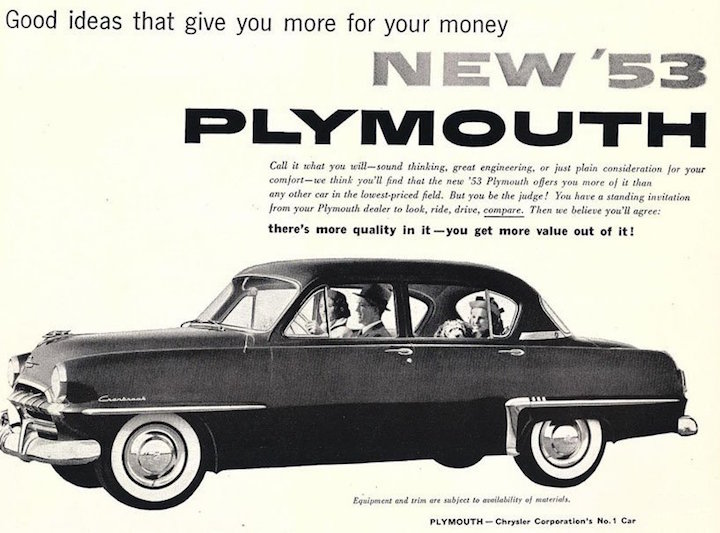
PLYMOUTH (1953) — Plymouth marked its 25th anniversary in 1953, the same year it introduced a new design for its mainstream car. Unfortunately, the only engine available with the new design was the company's 20-year-old flathead six-cylinder. It also soldiered on without an automatic transmission, the only mainstream car not to offer one that year. Even so, Plymouth turned in a record sales year. This used up 1953 Plymouth was discovered in Mayer, Ariz. (Photos by Jim Prueter)
The MG Midget two-seat sports car was built from 1961 to 1979. This third-generation circa 1972-74 model was found living by the side of a road in eastern North Carolina. It is powered by a 55 horsepower 4-cylinder engine making 67 pound-feet of torque. The third of four generations went from 1966 through 1974. (Photos by Jim Meachen)
HUDSON (1955) — The Hudson Hornet, produced from 1951 through 1957, underwent a major re-design for the 1955 model year after Hudson merged with American Motors. Even with the new body style, which included a broad eggcrate grille and distinctive two-toning, sales were dismal, measured at 10,010 sedans in 1955. This 1955 model living in retirement in Texas is part of Peter Hubbard's Junkyard Dog collection. (Photos by Peter Hubbard)
LINCOLN (CIRCA 1981-1989) — The Lincoln Town Car is a model line of full-size luxury sedans that was marketed by the Lincoln division of Ford Motor Company in three generations from 1981 to 2011. This first-generation (1981-1989) Town Car was found in an abandoned condition in eastern North Carolina. The Town Car shared its chassis and mechanical components with the Mercury Grand Marquis and the Ford (LTD) Crown Victoria. (Photos by Jim Meachen)
MERCURY (circa 1946-48) — Mercury refreshed its pre-war 1941 model — which was all new at the time — with a new grille and other styling tweaks for the first post-war cars built for model years 1946-48. This post-war coupe was discovered behind a barn in Ellendale, North Dakota. (Photos by Jim Meachen)
OLDSMOBILE (1964) — A seventh generation Oldsmobile Ninety-Eight was discovered in retirement in South Carolina. The seventh generation was built from 1961 through 1964. The 98 lived from 1940 through 1996. We think this is a 1964 model. The Oldsmobile 98 came in six body styles and three configurations in 1964 — 2-door, 4-door and convertible. Standard equipment included power steering, power brakes, power windows and power seats. The powertrain was a 6.5-liter Rocket V8 mated to a 3-speed automatic. (Photos by Ralph Gable)
OLDSMOBILE (mid-60s) — This second-generation 1966 or 1967 Oldsmobile Cutlass has seen better days. The Cutlass was built from 1961 through 1988 going through five iterations and a couple of sizes. The second generation had four engines available ranging from a 155-horsepower six-cylinder to a 345-horsepower V-8. (Photos by Ralph Gable)
PLYMOUTH (circa 1936-38) — Plymouth started life in 1928 and by the early 1930s the brand was the third best-selling car in the U.S. By 1939, Plymouth was selling more than 400,000 copies a year. Its best years were 1940-41 when it became the second best-seller, almost catching Ford. This model, which we have identified as a 1936-1938 model was discovered by photographer Ralph Gable.
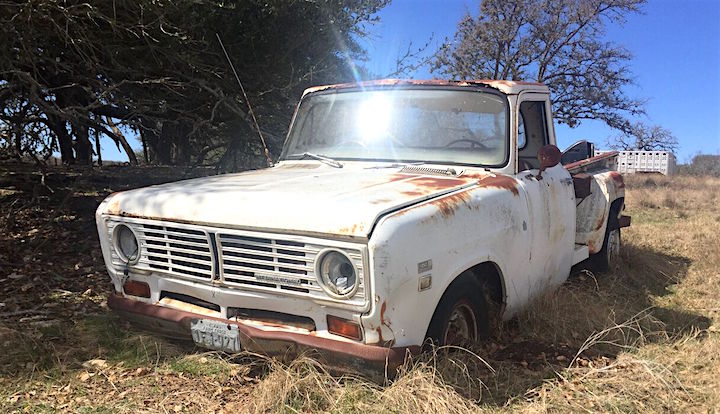
INTERNATIONAL (1973) — International Harvester produced the Light Line pickup truck from 1969 through April 1975 when production ended. This 1973 International 1210 pickup was discovered in Comfort, Texas. The Light Line had a wider range of engines and wheelbase options than any of its competitors. (Photo by Jim Prueter)
PACKARD (1941) — Packard was one of the premier luxury cars in the U.S. prior to World War II although it was losing some of its luster in the late '30s by building several more affordable models. In 1937, Packard re-introduced a six-cylinder engine, its first since 1928 when it went exclusively to eight-cylinder powerplants. This Packard sedan was discovered in Holbrook, Ariz. (Photo by Ted Biederman)
MERCURY (1950-51) — The 1949-1951 Mercury became popular in the latter part of the 20th Century for conversion to street rods. The Mercury's of that era were propelled by a Ford flathead V-8. This four-door version of either a 1950 or 1951 model was found in South Carolina. (Photo by Ralph Gable)
OLDSMOBILE (1962) — In 1962, the full-sized Oldsmobile 88 was in its fifth generation (1961-1964). The base Dynamic 88 was powered by the 280-horsepower Jetfire Rocket V-8 while the Super 88 received the 394 Skyrocket V-8 making 330-horsepower. Both models were outfitted with a 3-speed Roto Hydra-Matic transmission. This 1962 model was found enjoying retirement in Munger, Mich. (Photos by Jim Prueter)
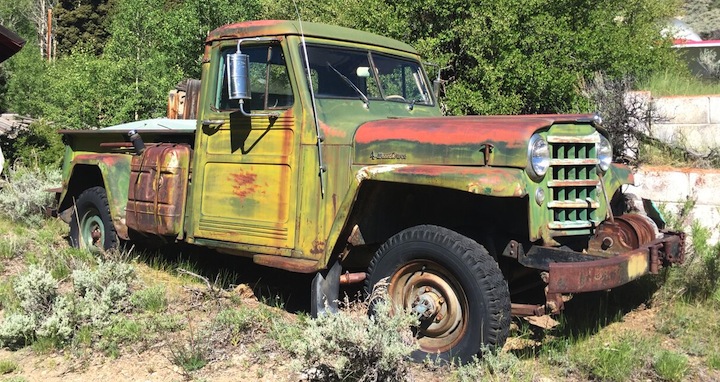
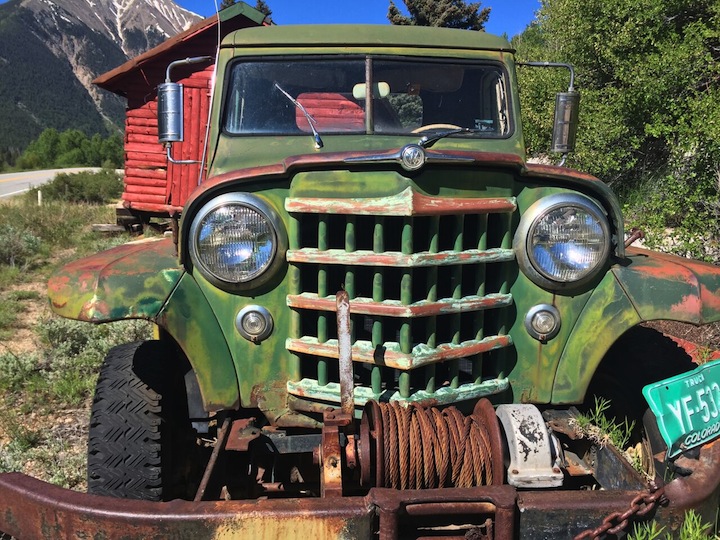
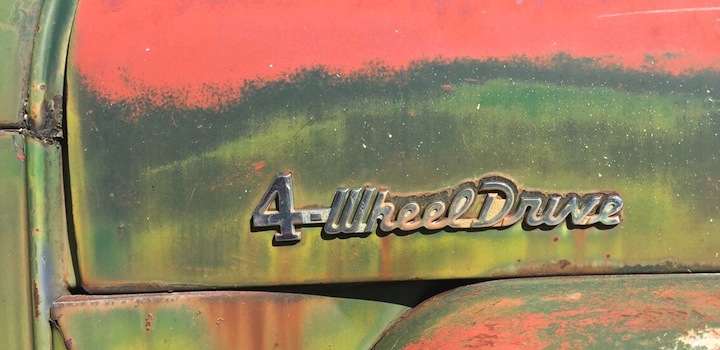
JEEP (early '50s) — The Jeep Willys became popular after World War II and was sold in a variety of formats. This early 1950s model Jeep pickup proclaims its 4-wheel-drive configuration on the side of the hood. It was found in retirement on Highway 82 near the Continental Divide in Colorado. (Photos by Jim Prueter)
JEEP (1953) — This 1953 Willys Jeep station wagon was found in good condition in Door County, Wis. The Willys Jeep wagon was the first mass-produced all-steel station wagon designed as a passenger vehicle. It was built in the United States from 1946 to 1965 with more than 300,000 sold. (Photo by Ed Meachen)
GMC (circa 1948-53) — Following World War II, the first all-new Chevrolet pickup and the rebadged GMC edition entered the marketplace in June 1947 as 1948 models, labeled the Advance Design series. The series was built through the mid-50s with only minor design tweaks. This GMC truck from the 1948-53 period lives in retirement in Bluff, Utah. (Photos by Jim Prueter)
JEEP (post WWII) — This post-WWII Willys Jeep found in eastern North Carolina has become a trash depository, its useful life long gone. The Army Jeep was transformed for civilian use after the war in 1945 and was particularly popular with servicemen who had driven the military variety. (Photo by Jim Meachen)
ISUZU (early '80s) — In 1981 Isuzu began selling consumer and commercial vehicles under its own brand in the United States after marketing several rebadged General Motors vehicles. GM had bought a 34 percent stake in the Japanese company in 1972. The Isuzu P'Up was the first model sold to consumers as an Isuzu, rather than as a Chevrolet or Buick. This early '80s P'Up was discovered rusting away in South Carolina. (Photo by Ralph Gable)
MORRIS MINOR — This ragged-out Morris Minor convertible — used as yard art — was found near Boone, N.C. The diminutive Morris Minor was built in Great Britain from 1948 through 1972 with more than 1.3 million manufactured in various configurations including a two-door sedan, convertible, wagon and panel van. Engine horsepower through the years ranged from 27 to 48. Some of the earliest models took a glacier-like 50 seconds to go from 0-to-60. (Photos by Jim Meachen)
JEEP — This old Jeep looks rather forlorn as it endures the hardship of Colorado weather in its retirement from active duty. MotorwayAmerica contributor Jim Prueter found the Jeep near Gateway, Col.
MERCEDES-BENZ (1984) — This 1984 Mercedes-Benz 280 E sedan was found in a deteriorating condition in a wooded area of South Carolina. In the 1980's the E denoted fuel injection. The actual E-Class model as sold today didn't come on line until 1993. (Photos By Ralph Gable)
PLYMOUTH (1966) — Plymouth jumped on the compact-sized sporty car craze in 1964 with the Barracuda, which was produced through the 1974 model year. This 1966 first-generation Barracuda has suffered considerable abuse as it rests in a North Carolina lot of used-up cars. The Barracuda actually pre-dates the Mustang by two weeks. Three engines were offered in the first three years — a 2.8-liter inline 6, a 3.7-liter inline 6 and a 4.5 liter V-8. (Photos by Ralph Gable)
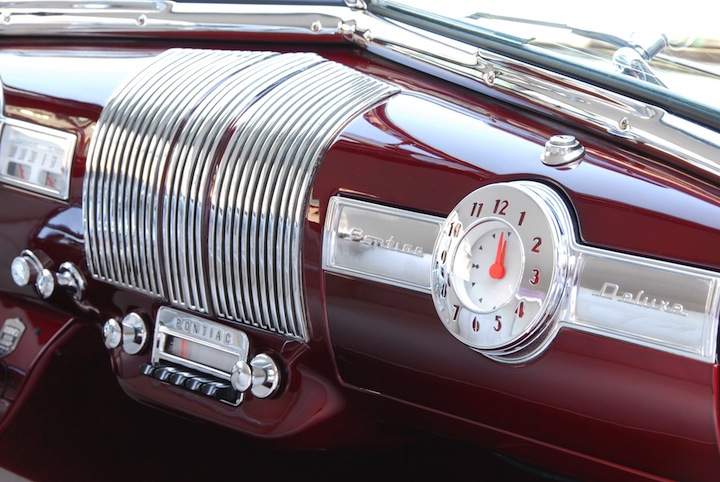
PONTIAC (1940) — This 1940 Pontiac sedan was discovered in a barn in eastern North Carolina. The '40 had a handsome well-designed dashboard with radio controls in easy reach — a feature that has become scarce these days. Pontiac sold 217,101 units in 1940, a big jump from 1939 when 137,249 units were sold. Above is a restored dashboard from a 1940 car. (Photos by Jim Meachen)
HONDA (1979) — The Honda Prelude is a sports coupe that spanned five generations from 1978 until 2001. This first-generation Prelude (1978-1982) was photographed in abandoned condition in front of an abandoned house in northern Vermont. It is powered by a 1.8-liter four-cylinder engine and came with the choice of a three-speed automatic or a five-speed manual transmission. (Photo by Jim Meachen)
JJEP — This old Willys Jeep faces the ravages of a Wisconsin winter. We figure it probably looks better in snow. (Photo by Jerry Brown)
LINCOLN (mid '80s) — This mid-1980s Lincoln Town Car watches another season change from fall to winter in rural northern Vermont. The Town Car, built from 1981 to 2011, was Lincoln's most popular nameplate. The first generation from 1981 through 1989, came in two-door and four-door formats. The first generation was powered by a 302-cubic inch, 4.9-liter V-8. (Photo by Jim Meachen)
PLYMOUTH (1949) — Plymouth was the second-best selling car in the U.S. in 1940 and 1941 and sales continued at a good pace after World War II. 1949 was the first year of an all-new car since pre-war, and sales continued at a good pace. This 1949 model was discovered in South Carolina. (Photo by Ralph Gable)
MERCURY (1989-1990) — This 1989/1990 model Mercury Cougar has seen better days and might be hoping for a good home. But chances are good it will continue to be relegated to neglected and abandoned status. The Cougar is a nameplate applied to a diverse series of automobiles sold by Mercury from 1967 through 2002. The seventh-generation Cougar got a new body and chassis in 1989 and was built through 1997. The standard engine in 1989 was a 3.8-liter V-6 making 140 horsepower mated to a four-speed automatic. The 1989-90 models can be differentiated from the later seventh-generation models because of their slightly larger grille.
(Photos by Ralph Gable)
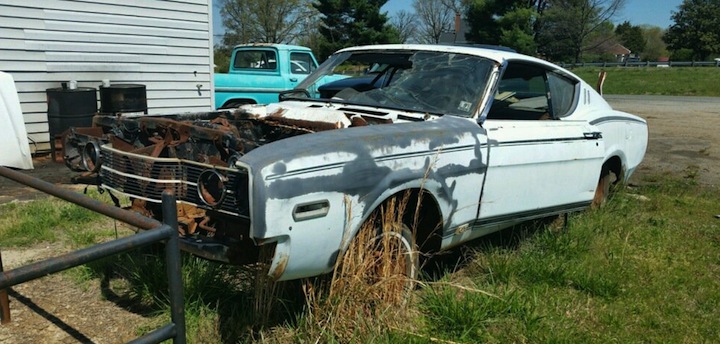
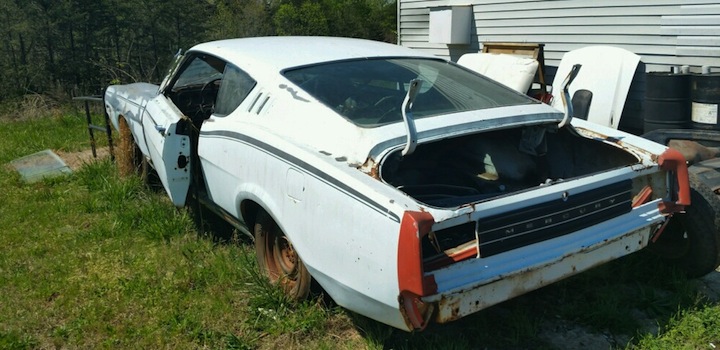
MERCURY (1968) — This 1968 Mercury Cyclone has been stripped of all its important parts, some of which have probably been transplanted in other Cyclones of the same age. The Cyclone started life in 1964 as a sporty option for the Mercury Comet. In 1968 the Comet name was dropped, and the Cyclone gained several engine options including the high-performance 427 cubic inch V-8 with four-barrel carburetor generating as much as 425 horsepower used mainly for drag racing, according to How Stuff Works. (Photos by Ralph Gable)
MERCEDES-BENZ (1977) — The weeds have growen so high around this 1977 Mercedes-Benz 450SEL that they appear to be an untrimmed hedge. The 450SEL designates a 4.5 cubic inch 8-cylinder engine, which made 180 horsepower mated to a four-speed automatic transmission. This series of S Class, manufactured from 1972 through 1980, was judged one of the safest cars on the road in that decade. (Photos by Jim Meachen)
JAGUAR (circa 1974) — The Jaguar XJ series was first sold in 1968 with the second generation Series 2 produced from 1973-1979. Pictured is a second-generation Jaguar, with a 5.3-liter V-12 — according to the emblem on the rear. It was found in retirement in North Carolina. The big engine — making 265 horsepower — was first used in 1972 with a top speed of 140 mph. It was billed as the "fastest full four-seater available in the world." (Photo by Ralph Gable)
INTERNATIONAL HARVESTER (circa 1949-1952) — This circa 1949-1952 International Harvester L-Series truck cab was found rusting away in an eastern North Carolina field.The L-Series was introduced in 1949 as a replacement for the KB-Series and was available as everything from light pickup trucks and delivery vehicles to full-size tractor-trailers. Electric wipers, a radio, and a clock were optional. (Photos by Jim Meachen)
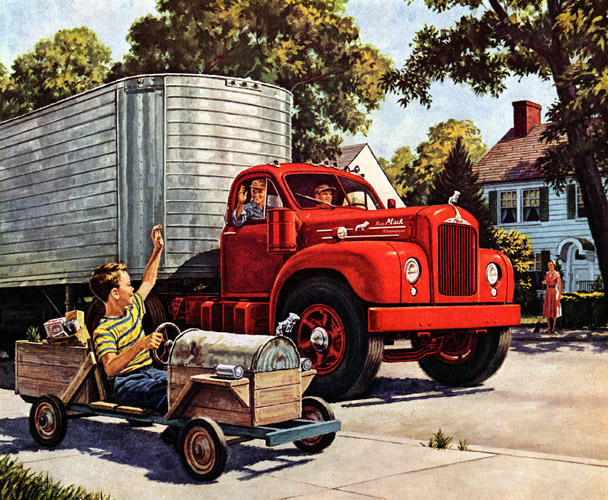
MACK (mid 1950s) This mid-1950s Mack B Model truck was discovered in retirement along the side of a highway in south-central Virginia. The B Model was manufactured from 1953 through 1966. Above is a magazine advertisement for the 1955 Mack. (Photos by Jim Meachen)
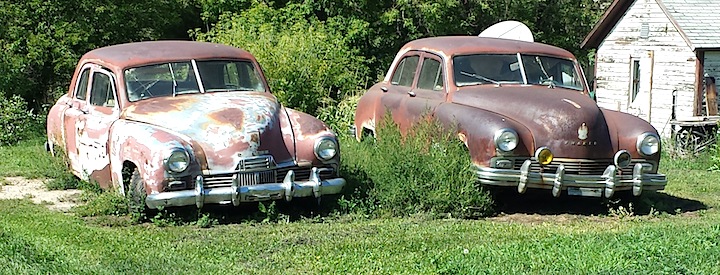
KAISER, FRAIZER (1947) — This rare find of a 1947 Kaiser (left) and Frazer were found in a yard in Wayne, Alberta, Canada. The Kaizer-Frazer car company was founded on July 25, 1945, and displayed prototypes of their two new cars in New York in 1946. Kaiser and Frazer shared bodies and powertrains. The cars, the first all-new sedans in the U.S. following the end of World War II, were powered by a 226-cubic-inch L-head six making 100 horsepower mated to a three-speed transmission with optional overdrive. (Photo by Susan Skaggs)
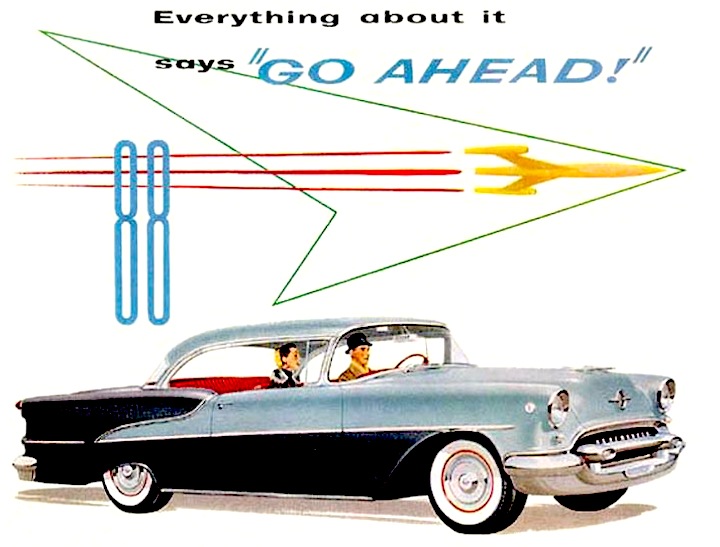
OLDSMOBILE (1955) — This 1955 Oldsmobile, resting in a Wisconsin field, looks ready for restoration. Oldsmobiles were completely restyled for the 1954 model year with new longer and lower body shells and wrap-around windshields and rear windows. The 1955 models were heavily face-lifted with new grillework, taillights and body-side chrome. Horsepower for the 324-cubic-inch Rocket V8 increased to 185 for 88s and 202 for Super 88s. Above, a magazine ad for the 1955 Olds. (Photo by Jerry Brown)
MORRIS — This Morris Minor 1000 2-door from the 1950s lives among the trash of a junkyard. It probably was once a proud family car. The Morris Minor 1000 was produced from 1956 through 1971 in Oxford and Birmingham, England. Nearly 850,000 copies were sold. The car had limited sales in North America. (Photo by John Harper)
INTERNATIONAL (1941) — Our photographer Ralph Gable spotted this body — that looks to be in restorable condition — of what appears to be a 1941 International pickup. The K Series light-duty pickup was introduced in 1940 with the key styling element being headlights integrated into the fenders.
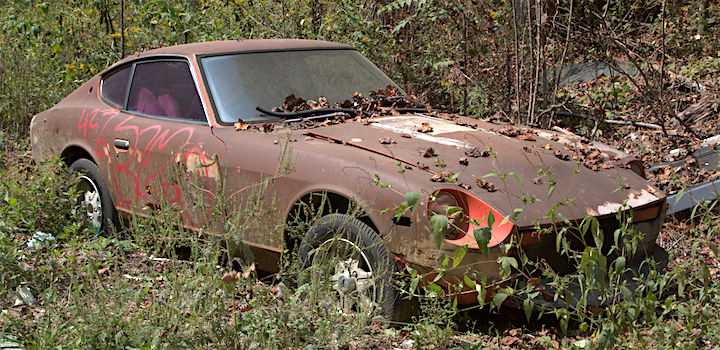
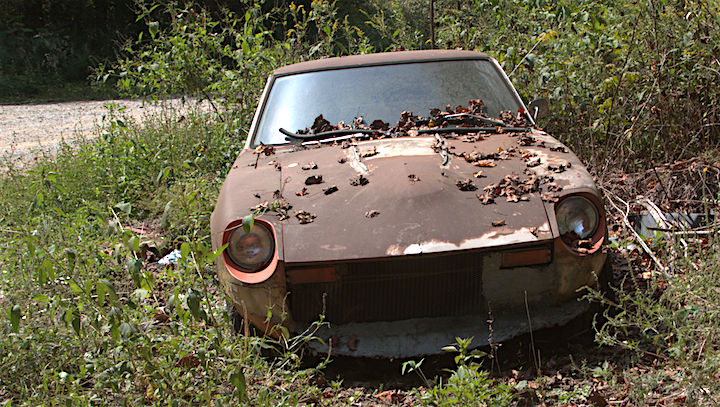
NISSAN (circa mid 70s) — The Datsun (later Nissan) Z-Car captured the hearts and pocketbooks of customers in the 1970s who desired a great-looking sports car on a budget. It was just the ticket. This mid-70s Z-Car — either a 260Z or a 280Z — probably delighted several owners over the years, but now lives in abandoned retirement in woods in eastern Tennessee. (Photos by Jerry Brown)
OLDSMOBILE (1980) This Oldsmobile Omega coupe was found looking rather well for its age resting in a field of weeds in Tennessee. The Oldsmobile Omega, largely unloved during its 12-year run, was a compact car sold from 1973 through 1984. It faced a host of reliability problems through its cycle. There were two generations of Omegas, both badge engineered on Chevrolet models, and both using the GM X platform architecture. The Omega shared the same engines as the Chevrolet Citation, the Pontiac Phoenix and the Buick Skylark — the so-called "Iron Duke" I4 and a 2.8-liter V6. (Photos by Ralph Gable)
PLYMOUTH (1968) — This 1968 Plymouth Satellite, discovered in Tennessee, appears to have been stripped of most of its essential parts. The Satellite, built from 1965 through 1974, started out as the top trim model for the Plymouth Belvedere and was available only with a V-8 engine. The second-generation Satellite was restyled for 1968 and the lineup was expanded beyond a two-door hardtop and convertible to include a four-door sedan and station wagon. It was restyled again for the 1971 model year. Below is a look at the Satellite from a 1968 Plymouth brochure. (Photos by Jim Meachen)
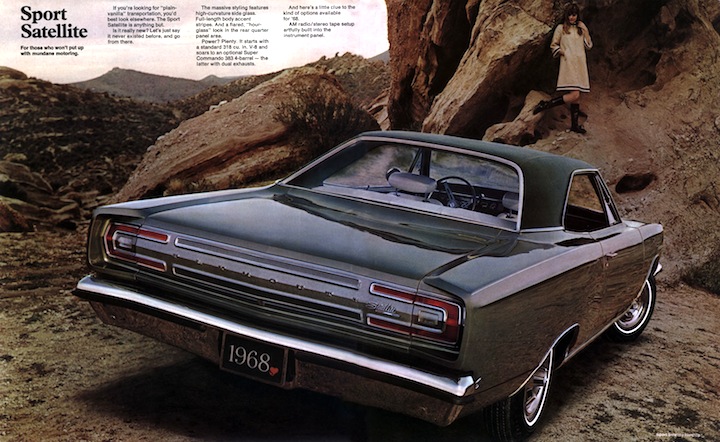
JEEP WAGONEER (Early '80s) — This early 1980s Jeep Wagoneer lives in retirement in the weeds. The Wagoneer was built from 1963 through 1991, a sport utility vehicle (SUV) before the term was even coined. The wagon received only minor styling changes through the years. The Wagoneer was moved upmarket in its later years by AMC before Chrysler acquired AMC in 1987. The Wagoneer could be purchased with either a six-cylinder or V-8 engine in the early '80s and with a four-speed automatic transmission. (Photos by Jim Meachen)
This 1950 Pontiac two-door Streamliner discovered in eastern North Carolina appears to be in restorable condition. It was the second year of an all-new post-war design under the styling direction of famed GM designer Harley Earl. Several models were built including the Chieftain, Streamliner, Catalina, business coupe and convertible. Pontiac sold 450,000 Pontiacs in 1950, the most in the brand's history up to that point, trailing only Chevrolet, Ford, Plymouth, Buick and Dodge in domestic sales. A 268 cubic inch straight-8 Silver Streak was the top engine that year making 108 horsepower and 208 pound-feet of torque. (Photos by Jim Meachen)
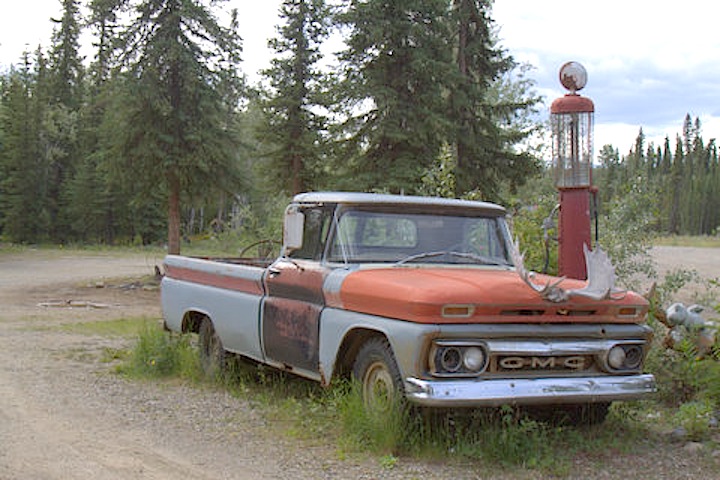
GMC — A mid-1960s GMC pickup — decorated with a set of antlers — sits next to a vintage gas pump in the Yukon in northwest Canada. Some enterprising landowner apparently decided to set up this nostalgic display. (Photo by Jerry Brown)
GMC (1956) — This 1956 GMC pickup, once used as a tow truck, could stand some tender, loving care. It is living the old Biblical saying, dust to dust, and ashes to ashes; and perhaps we can add, rust to rust. (Photos by Jim Meachen)
McCORMICK-DEERING — The McCormick-Deering was a tractor built by the International Harvester Company from the mid-20s until the Deering name was dropped some time in 1948 or 1949 when the tractor became the McCormick. This tractor, probably from the '40s, was found in retirement in Hosmer, S.D., next to a vintage gas pump and travel trailer. (Photos by Jim Meachen)
INTERNATIONAL (1948) — Following World War II International truck production began with a slightly new design in 1947 highlighted by the barrel-shaped grille sprouting little "wings," which are mostly gone from this 1948 model truck discovered in North Carolina. International stuck with the front-end design until 1950. This truck apparently hauled heavy farm equipment in its working life. (Photos by Ralph Gable)
OLDSMOBILE (1948) — Oldsmobile was endowed with a new exterior design for the 1948 model year based on General Motors' newly developed C-Body platform, but clung to its pre-war flathead straight-eight engine. For 1948, the compression ratio was increased from 6.5:1 to 7.0:1 and horsepower was nudged upward from 110 to 115. Customers who waited until 1949 were rewarded with an all-new overhead valve V8 engine. This '48 model, discovered in Ellendale, N.D., is outfitted with a 4-speed Hydramatic automatic transmission. A three-speed manual was also available. It also appears that its owner outfitted it with an add-on air conditioner. (Photos by Jim Meachen)
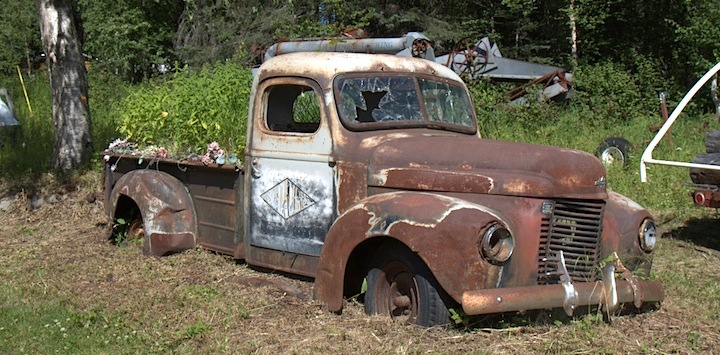
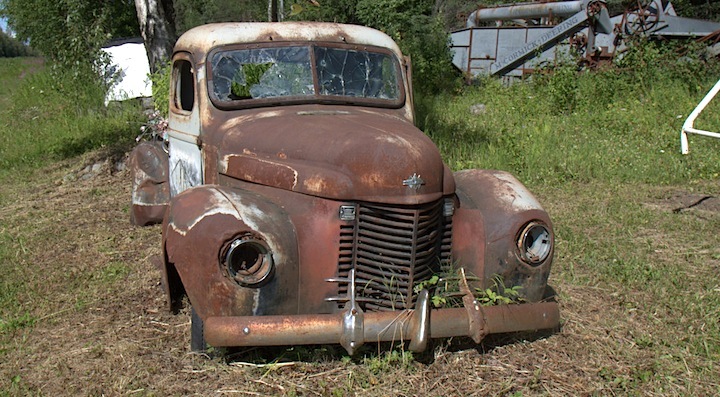
INTERNATIOANL (1941) — This used up 1941 International pickup truck was found near Trapper Creek, Alaska, its bed now used for growing weeds (or perhaps flowers of some variety). (Photos by Jerry Brown)
INTERNATIONAL (1956) — This 1956 S-line International pickup truck has been retired by Larry's Wrecking Service in Hosmer, S.D. The International Harvester company built pickup trucks from 1907 through 1975. The standard Black Diamond 240 six-cylinder engine in the 1956 truck made 131 horsepower and 208.5 pound-feet of torque. (Photos by Jim Meachen)
MERCURY (1969) — This 1969 Mercury Monterey is nearly swallowed up by weeds in eastern North Carolina. The large Monterey was introduced in 1952 and built through the mid '70s, the last generation running from 1969 to 1974. Four V8 engines were available for the last generation ranging in size from a 6.5-liter to a 7.5-liter. A three-speed automatic was the transmission of choice. (Photos by Jim Meachen)
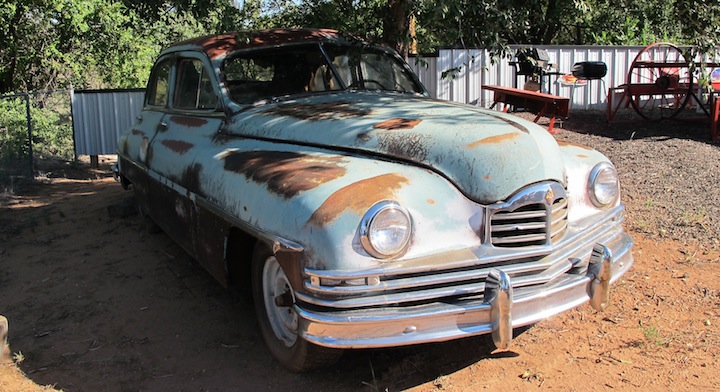
PACKARD (1950) — This restorable example of the 1950 Packard four-door sedan rests in a residential yard in Tucumcari, N.M. The sedan came with a straight-eight developing 135 horsepower and sold for around $3,500. 1950 was the last year for the bathtub-style Packard as sales sank from 116,000 in 1949 to 42,000 in 1950. (Photo by B.J. Overbee)
PONTIAC (1963) — This 1963 Pontiac Bonneville station wagon has lost its luster because of neglect. The third-generation Bonneville covered the 1961 through 1964 model years and was Pontiac's costliest and most luxurious model. Three V-8 engines were offered as well as standard automatic transmission, and numerous options including power steering, air conditioning, cruise control, power windows, power seats and a radio. (Photo by Jim Meachen)
PONTIAC (1972) — This 1972 Pontiac LeMans was spotted in a field, perhaps ready to be adopted by someone interested in restoration. The Le Mans was a model name applied to compact and intermediate-sized cars marketed by the Pontiac division of General Motors from 1962 to 1981. The third generation built from 1968 through 1972 included coupe, sedan, station wagon and convertible styles. A four-door sedan such as the one pictured started at $2,932. About 170,000 LeMans models were produced in 1972 with the hardtop coupe leading sales at 80,383 according to OldRide.com. (Photos by Ralph Gable)
MAZDA — This early model Mazda Miata has not only suffered the indignity of being abandoned, but it has been thoroughly burned as well. It was discovered along a wooded stretch of road in the hills surrounding Louisville, Ky. The Miata, now known as the MX-5 Miata, was launched in 1989 and since then nearly one million of the little roadsters have been sold worldwide. (Photos by Jim Meachen)
PONTIAC (1941) — An excellent example of a 1941 notchback Pontiac Torpedo sedan was discovered in a North Carolina farmyard by photographer Ralph Gable. Pontiac introduced the Torpedo in 1940 on the General Motors C-body. The Torpedo shared the body with the Cadillac Series 62, Buick Roadmaster and Super and the Oldsmobile Series 90. The Torpedo had larger windows and wider seats than other Pontiacs, and the hood ornament was a plastic Indian head mounted in a metal base. Available engines were a 3.9-liter Flathead inline 6 and a 4.1-liter Silver Streak inline 8, both mated to a 3-speed synchromesh manual transmission. Below is the intrerior of a '41 Torpedado. (Photos by Ralph Gable)
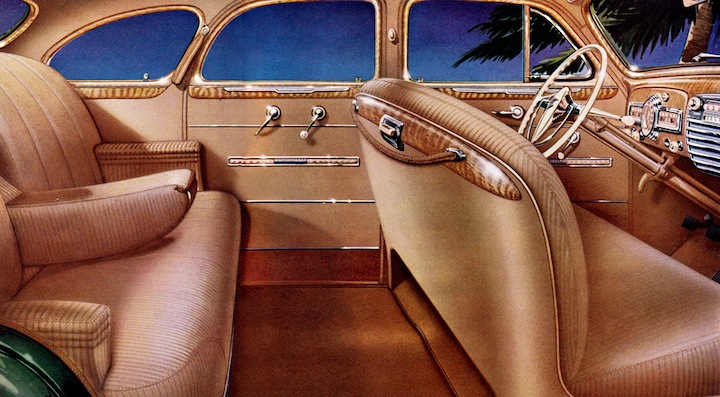
GMC — A 1967-1972 era GMC truck has come to an inglorious end under a tree in a North Carolina back yard. GMC redesigned its light duty trucks in 1967 and the sheetmetal remained unchanged through the 1972 model year. GMC ranked third in U.S. truck sales in 1968, but slipped to fourth by 1972. (Photos by Ralph Gable)
GMC — A 1967-1972 era GMC truck has come to an inglorious end under a tree in a North Carolina back yard. GMC redesigned its light duty trucks in 1967 and the sheetmetal remained unchanged through the 1972 model year. GMC ranked third in U.S. truck sales in 1968, but slipped to fourth by 1972. (Photos by Ralph Gable)
GMC (1978) — A GMC pickup has become a weedy yard ornament (Photo by Jim Meachen)
INTERNATIONAL — This old International Loadstar, at rest in eastern N.C. weeds, has probably seen its last days of service. (Photo by Jim Meachen)
INTERNATIONAL HARVESTER (1946) — A 1946 International Harvester truck is found resting in the corner of a Wisconsin parking lot. It was the last year for the K Series introduced in 1940 and built through 1946 with several years of war interruption. There were 42 K-Series models with142 different wheelbase lengths and load ratings ranging from one-half ton to 90,000 pounds. The K-Series styling included headlamps integrated into the fenders. (Photo by Jerry Brown)
INTERNATIONAL — An International dump truck has become part of the landscape in eastern North Carolina. (Photo by Jim Meachen)
JAGUAR (1950) — Contributing photographer John Harper found this circa 1950 Jaguar XK120 roadster, apparently at one time undergoing restoration, in a garage near Charlotte, N.C. Just over 12,000 were built from 1948 through 1954. The original XK120 was motivated by an 3.4-liter inline six making 160 horsepower. The roadster's lightweight canvas top and detachable side windows stowed out of sight behind the seats. (Photos by John Harper)
JEEP — This vintage Jeep is but a shell of its former self resting in a western Virginia yard. At some point in its life it probably provided good service in a variety of roles including possibly the military. (Photos by Ralph Gable)
LINCOLN (1957) — This abandoned car lineup includes a 1957 Lincoln (center). It's flanked by a 1960 Buick, left, and a 1957 Chevrolet. (Photo by Jim Meachen)
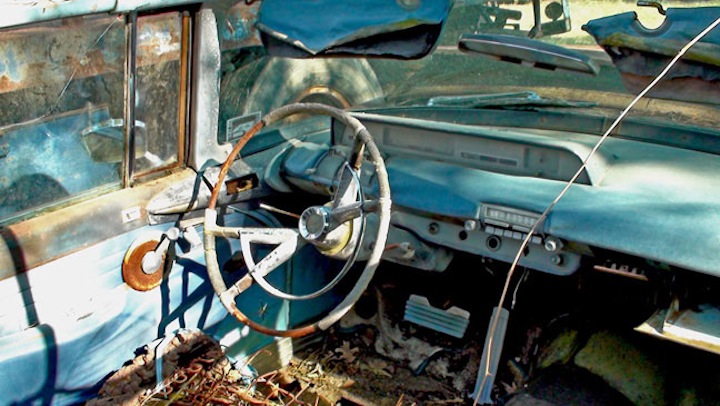
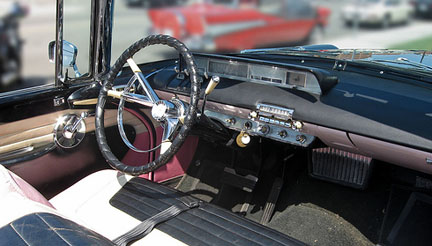
LINCOLN (1957) This abandoned Lincoln's interior is rotting away, but was once extremely attractive as attested to by the nicely restored Lincoln above (Top picture by Jim Meachen)
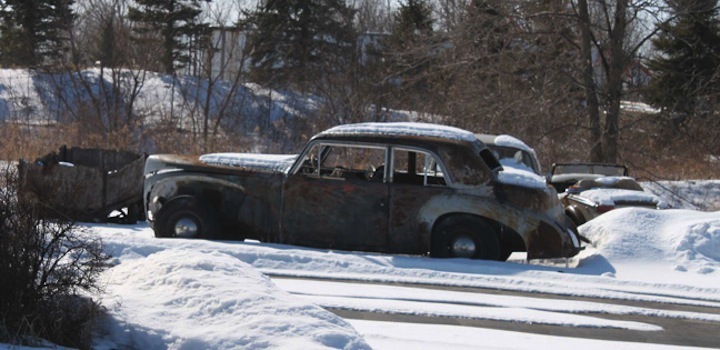
LINCOLN — The hulk of a rare circa 1939 Lincoln Continental settles in for a winter's rest. (Photo by Jerry Brown)
MACK — This equipment-loaded 1970 era Mack truck is nearly enveloped by weeds in southeastern North Carolina. (Photos by Ralph Gable)
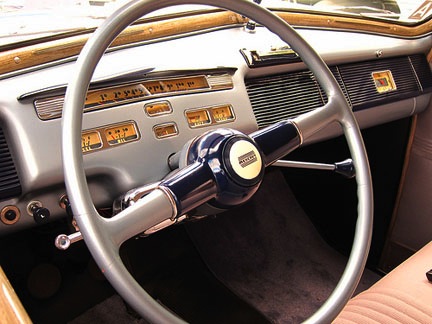
MERCURY (1940) — At top, the remains of a 1940 Mercury interior. Above, what it may have looked like just after leaving the showroom more than 70 years ago. (Top photo by Jim Meachen)
MERCURY (1963) — A Mercury Comet convertible has seen better days, but might be revived in the right hands. (Photo by Jim Meachen)
MERCURY (1967) — Ford built the original Cougar on the popular Ford Mustang platform to give the Mercury brand its own pony car. The original 1967 Cougar came only as a two-door hardtop and slotted into the Ford family lineup between the Mustang and the more upscale Ford Thunderbird. The Cougar was named Motor Trend's "Car of the Year" for 1967. This abandoned and neglected model comes without a front wheel, among other things. (Photos by Ralph Gable)
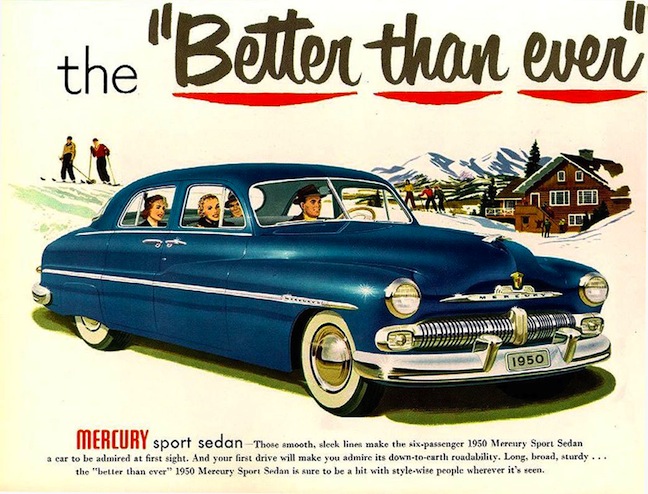
MERCURY (1950) — This 1950 Mercury "sport sedan" looks as if it still possesses the ability to drive out of its junky retirement home. Mercury was a big hit from 1949 through 1951 with more than 900,000 sold during those three years. 1951 was the last year of the "inverted bathtub" style and the first year for the optional Merc-O-Matic three-speed automatic transmission. (Photo by John Harper)
MG — This copy of an MG 1100 was found deteriorating in a wooded area. The MG 1100 was built from 1962 through 1968 with 124,860 units sold over that time frame. Several other small English cars were built off that platform including the MG 1300, Austin 1100 and 1300, Morris 1100 and 1300, and Woleseley 1100, 1275 and 1300. (Photo by John Harper)
PACKARD (1955-56) — Resting in retirement are two 1955 or 1956 Packard 400s produced in the waning years of the once-proud luxury brand. The Packards of this era were built by the Studebaker-Packard Corp. of South Bend, Ind. Production of the 400 was 7,206 units in 1955 and 3,224 in 1956. The last Packard was produced for the 1958 model year. At right, is an early 1980s model Lincoln. (Photo by Ralph Gable)
PETERBILT — This Peterbilt cab, probably from the late '70s to mid '80s — we admit no expertise when it comes to large trucks — is resting (perhaps permanently) in some eastern North Carolina weeds. Peterbilt Motors was founded in 1939 and continues to be a builder of Class 5 through Class 8 trucks, headquartered in Denton, Texas. (Photo by Ralph Gable)
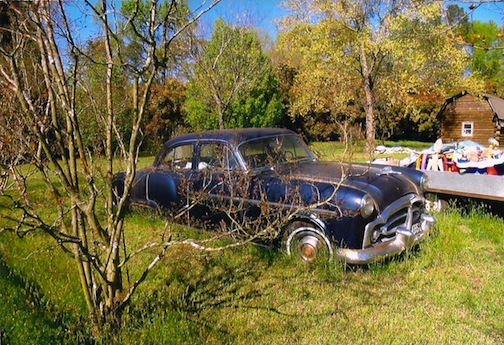
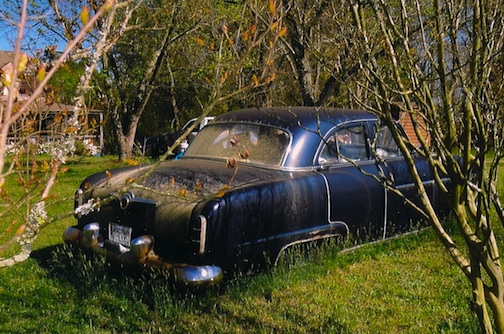
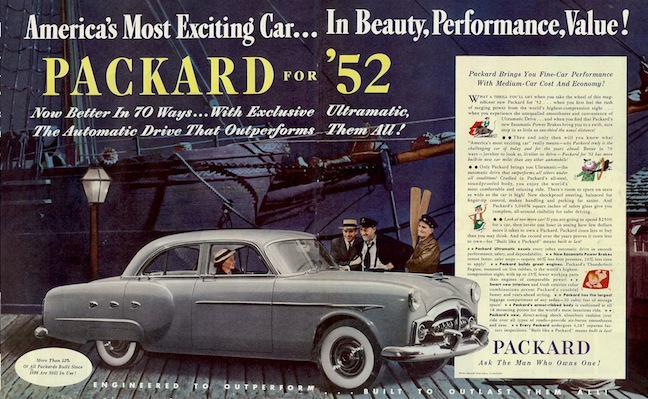
PACKARD (1952) — You were still being requested to "ask the man who owns one" 60 years ago as depicted in this 1952 magazine advertisement. (Photos by Ralph Gable)
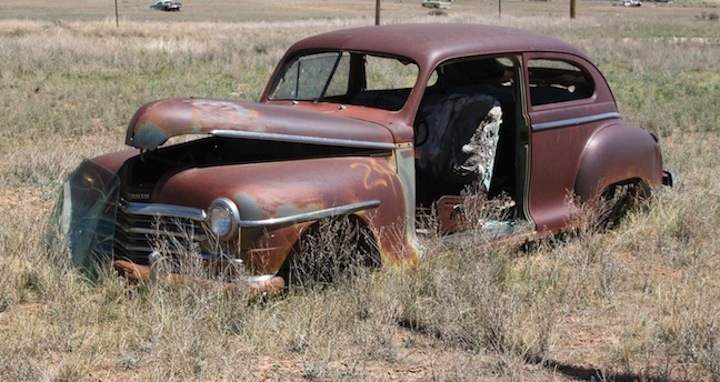
PLYMOUTH (1946-1948) — Plymouth became one of the best selling cars in the U.S. after World War II. There was very little styling and mechanical changes between the 1946, 1947 and 1948 models. To differentiate model years, a check of the VIN was necessary in many cases. The post-WWII facelift involved a more modest grille with alternating thick/thin horizontal bars, rectangular parking lights beneath the headlamps, wide front-fender moldings, a new hood ornament, and reworked rear fenders. This example of a post-war Plymouth coupe was found in Colorado. (Photo by Jerry Brown)
PONTIAC (1954) — Pontiac was the sixth best selling brand in 1954 — but only the fourth best seller at General Motors behind Chevrolet, Buick and Oldsmobile — with 287,744 units sold. The Pontiac was sold as the Star Chief and Chieftain in numerous configurations. Two engines were offered, a 127 horsepower straight eight and a 118 horsepower inline six. This two-door Chieftain found in eastern North Carolina has seen better days. (Photos by Jim Meachen)
PONTIAC (1991) — This 1991 Pontiac Sunbird convertible has been literally "put out to pasture" on an eastern North Carolina farm, although it looks as if it could easily be revitalized into a running machine. The Sunbird was produced from 1975 through 1994 and was available through the years as a notchback coupe, sedan, hatchback, convertible and station wagon. For the '91 model year a 2.0-liter 4-cylinder making 110 horsepower and a 3.1-liter V-6 making 140 horsepower were available. The Sunbird shared a platform with the Chevrolet Cavalier, Buick Skylark and Cadillac Cimarron. (Photos by Jim Meachen)
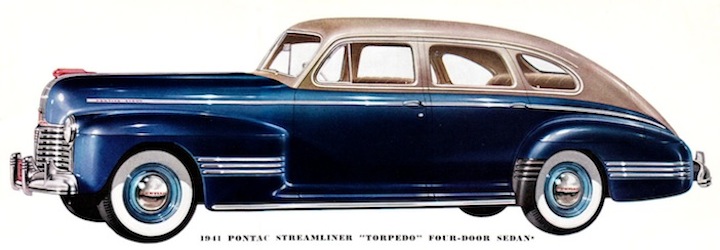
PONTIAC (1941) — A 1941 Pontiac Streamliner Torpedo four-door sedan has worn well in retirement. What the 1941 Pontiac Torpedo looked like as depicted in a Pontiac brochure. (Photo by Jim Meachen)

PONTIAC — Auto journalist Jeffrey Ross discovered this Pontiac Fiero graveyard recently near Huntsville, Ala. The mid-engined sports car was built by the Pontiac division of General Motors from 1984 to 1988. The Fiero was the first two-seater for the Pontiac brand since the 1926 to 1938 coupes, and also the first and only mass-produced mid-engine sports car by a U.S. manufacturer. A total of 370,168 Fieros were produced over the relatively short production run of five years. (Photo by Jeffrey Ross)
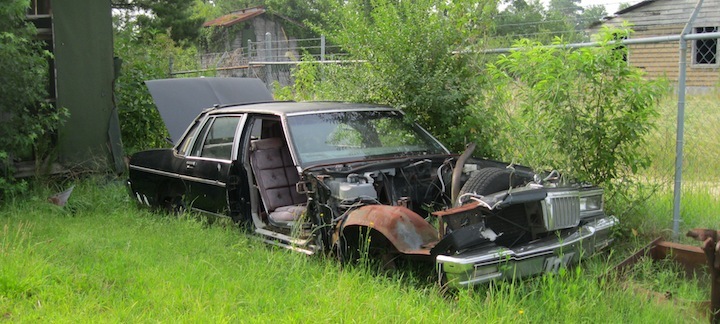
PONTIAC (1986) — A 1986 Pontiac Parisienne is in its last days missing an engine, fender, grille and other assorted pieces. The top-line rear-wheel-drive Pontiac Parisienne was sold in the U.S. from 1983 through 1986 after the Bonneville was down-sized on a front-wheel drive platform. Traditional Pontiac luxury buyers still had an option — at least for a few years. (Photos by Jim Meachen)
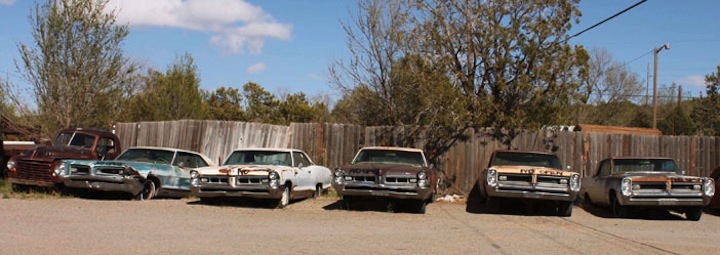
PONTIAC — This Pontiac lineup, from left, includes a 1950 Studebaker pickup, a mid-60s Bonneville coupe, two copies of a1965 Pontiac Grand Prix and two copies of a 1964 Grand Prix. Shot in Tijeras, N.M. (Photo by Jerry Brown)
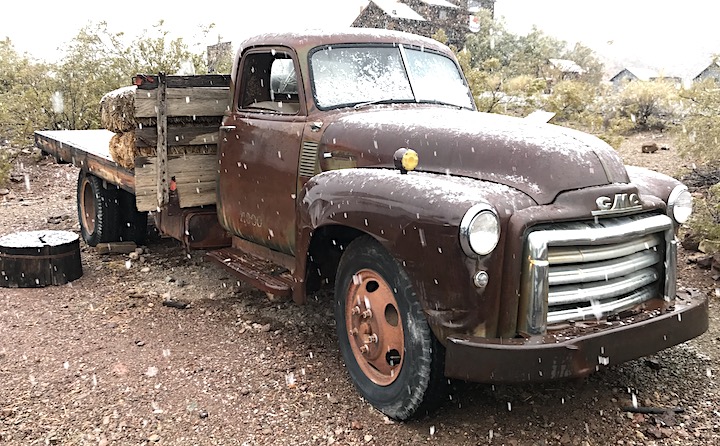
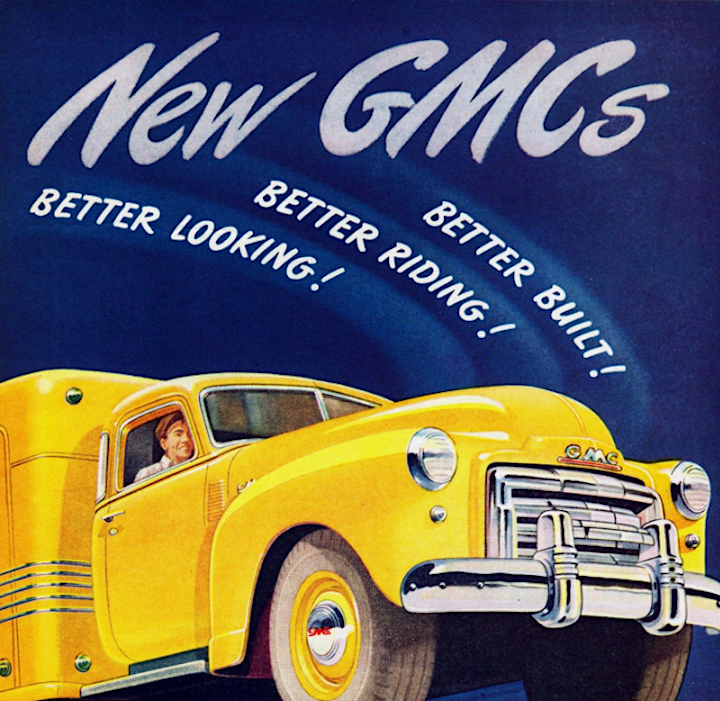
GMC (late '40s) — This late 1940s GMC work truck was found in retirement in Nevada. GMC was a near clone of the Chevrolet truck after World War II and enjoyed solid sales with 92,677 trucks sold in 1948, the first full year after its first major design after the war. (Photo by Jim Prueter)
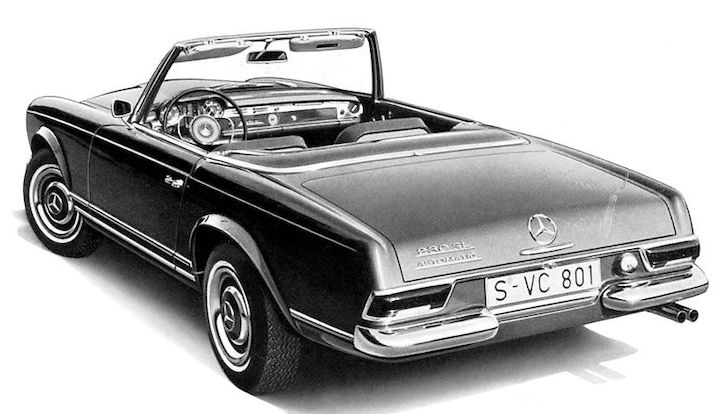
MERCEDES-BENZ (1963-1971) — Mercedes-Benz introduced the 230 SL roadster in 1963 with distinctive concave roofline that earned the nickname "pagoda top." Built from 1963 through 1971 on the W113 platform, it featured a low waistline, large curved greenhouse windows, detachable hardtop, and a new 2.3-liter six-cylinder inline engine. This surviver, perhaps undergoing restoration, was found in Black Creek, N.C. (Photos by Jim Meachen)
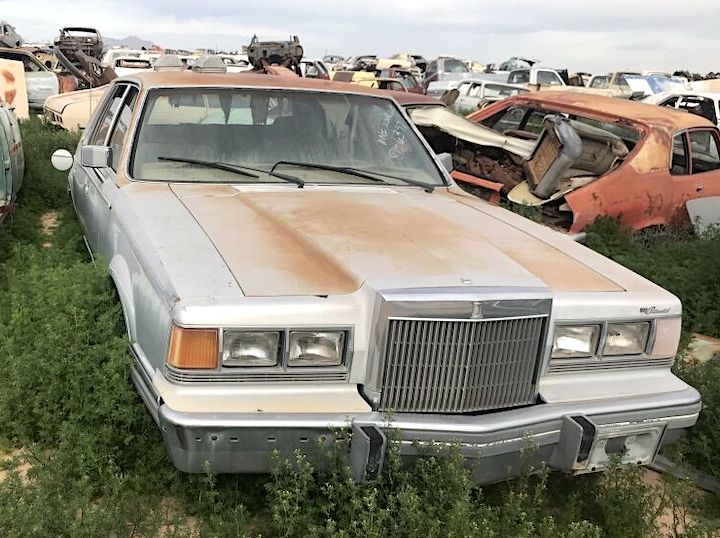
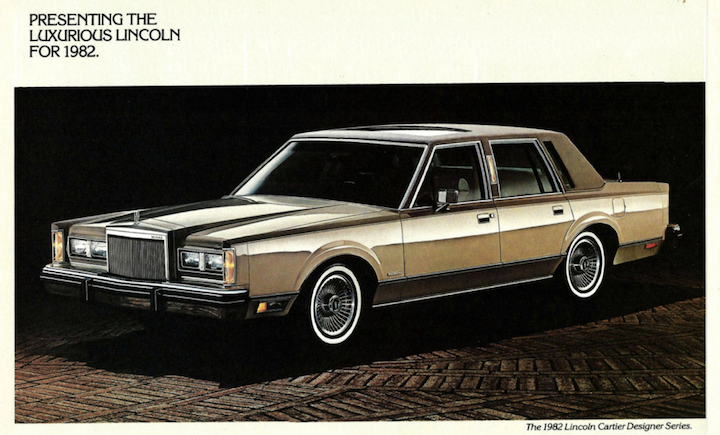
LINCOLN (circa 1982) — This circa 1982 Lincoln was found in an Arizona salvage yard. Lincoln played second fiddle to Cadillac through the decade of the 80s. In 1982 Lincoln was outsold by its chief competitor, 240,189 to 69,537. The 1982 Lincoln Continental Signature Series came with a 3.8-liter V-6 mated to a 4-speed automatic. (Photo by Jim Prueter)
